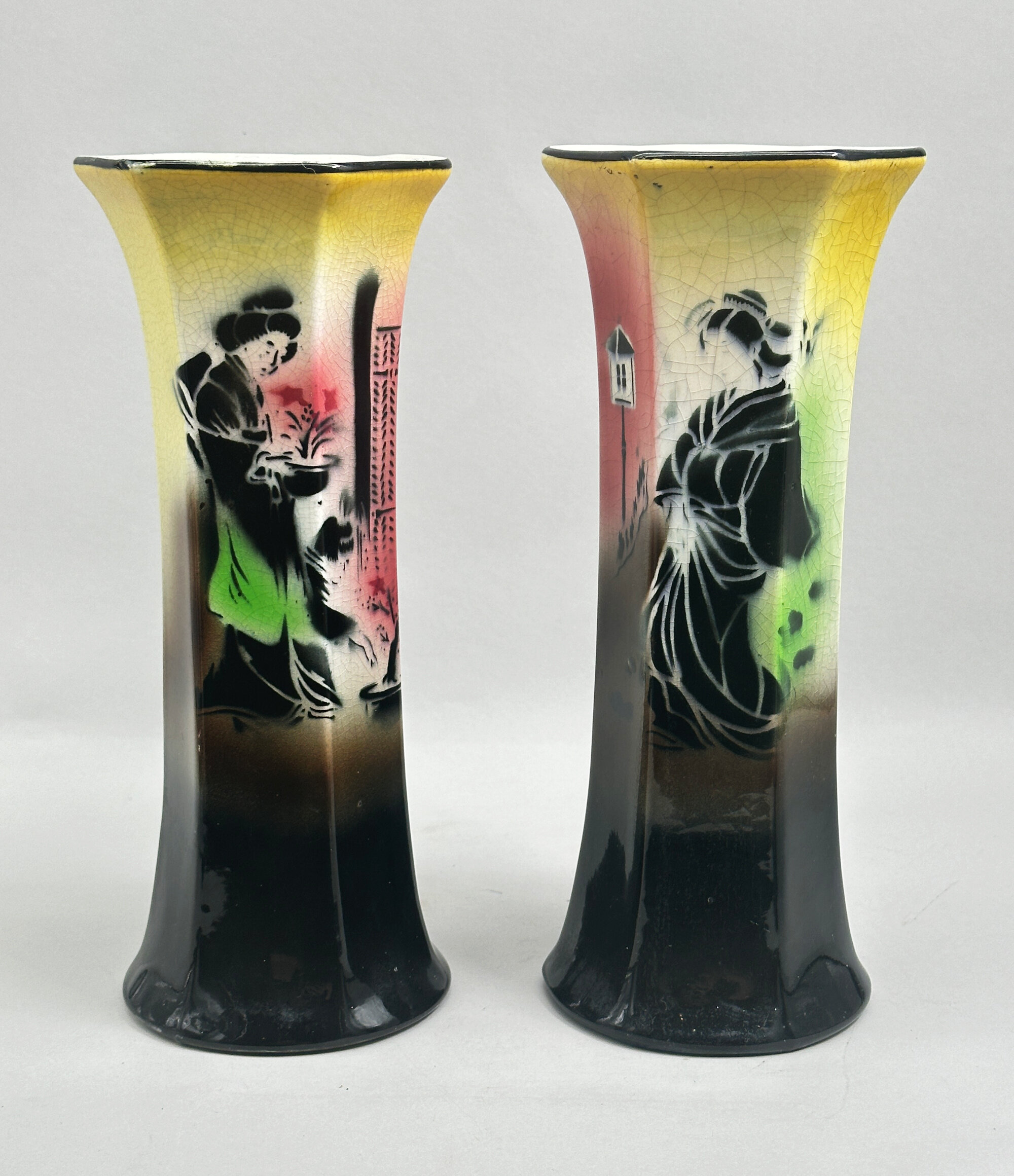
An unusual pair of Art Deco style Japonaiserie ceramic vases, probably French 1920s/1930s
Price: £75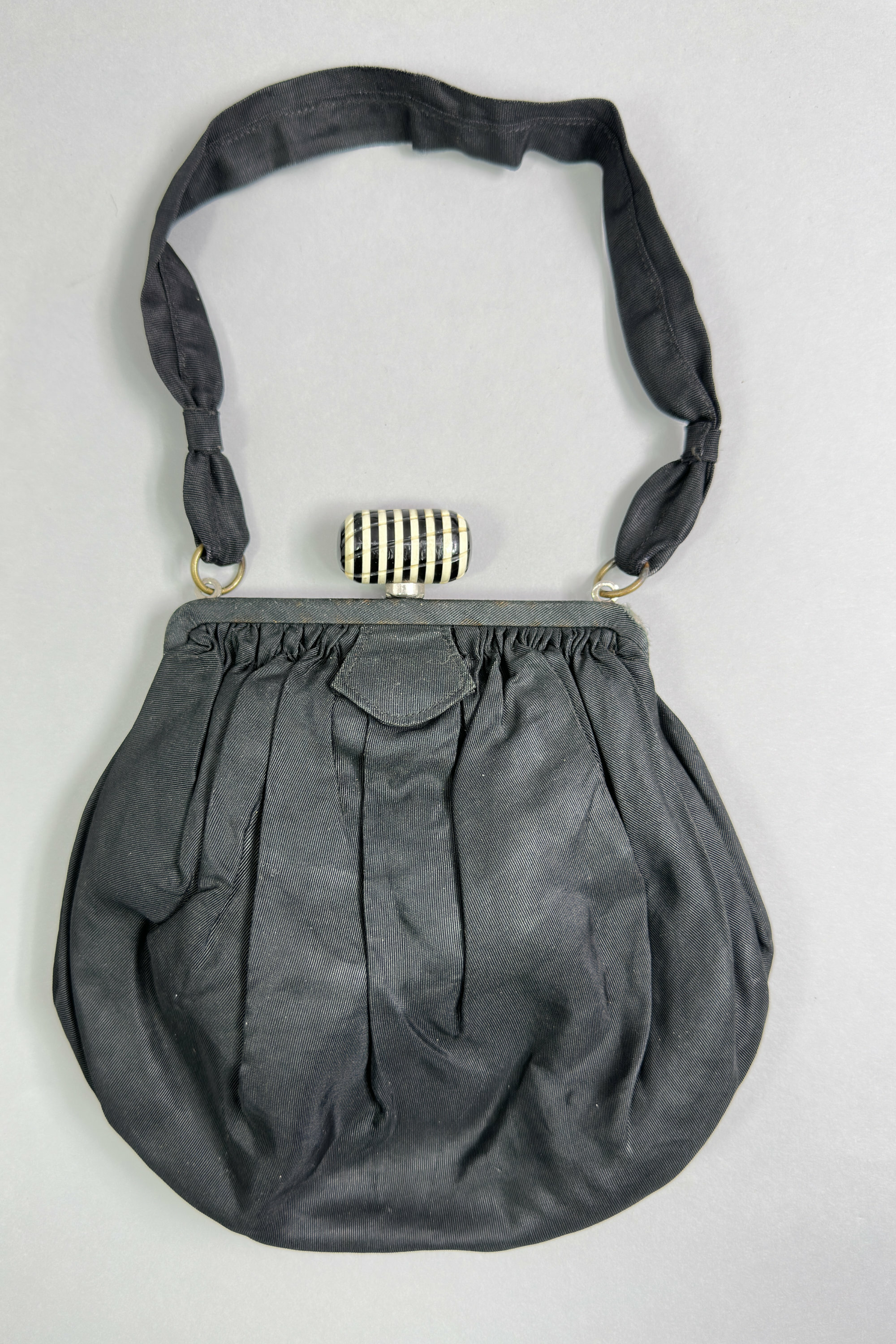
Small Art Deco wrist bag with Bakelite closure, French 1920s
Price: £35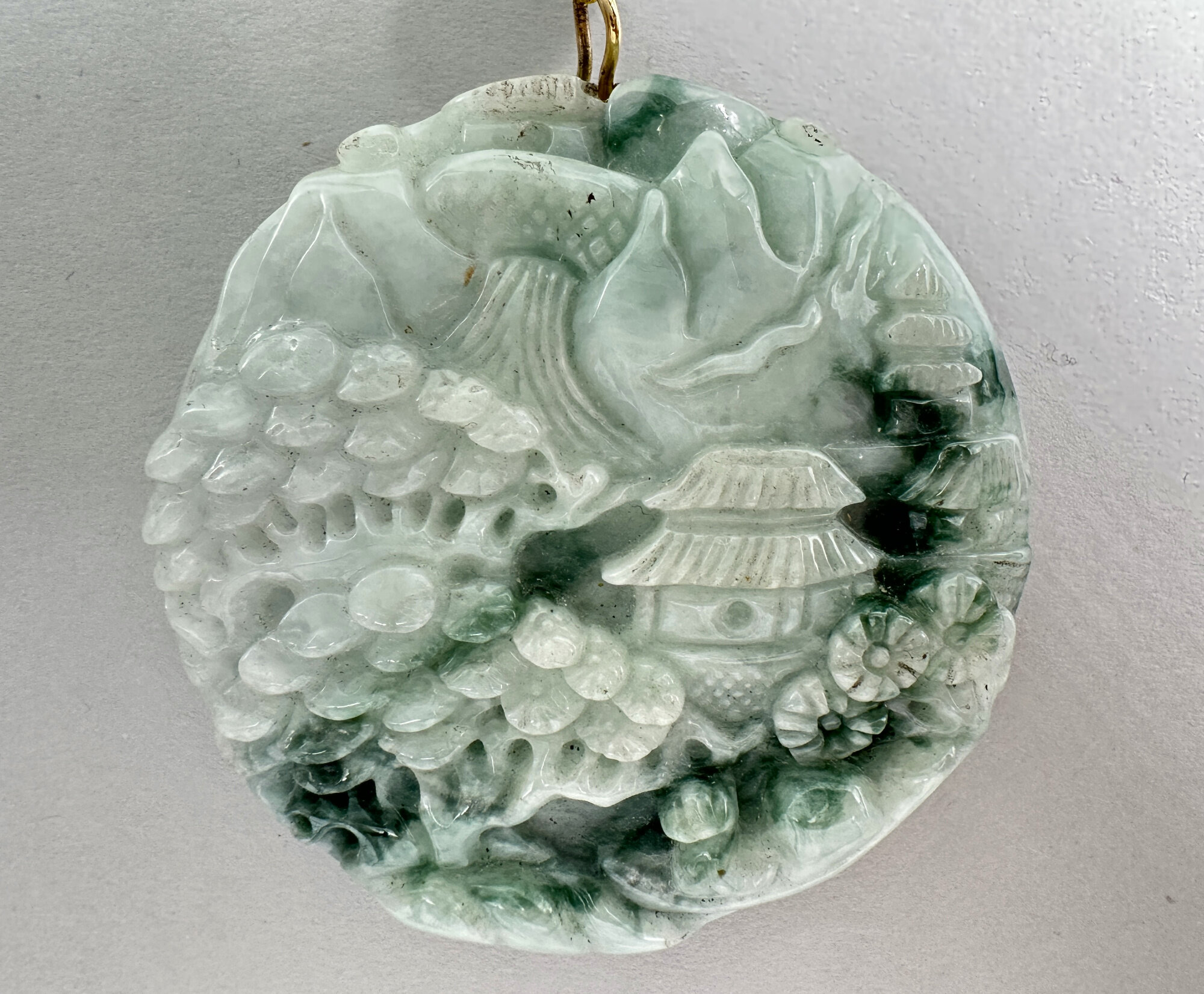
Floating Flower jade pendant on bead necklace
Price: £175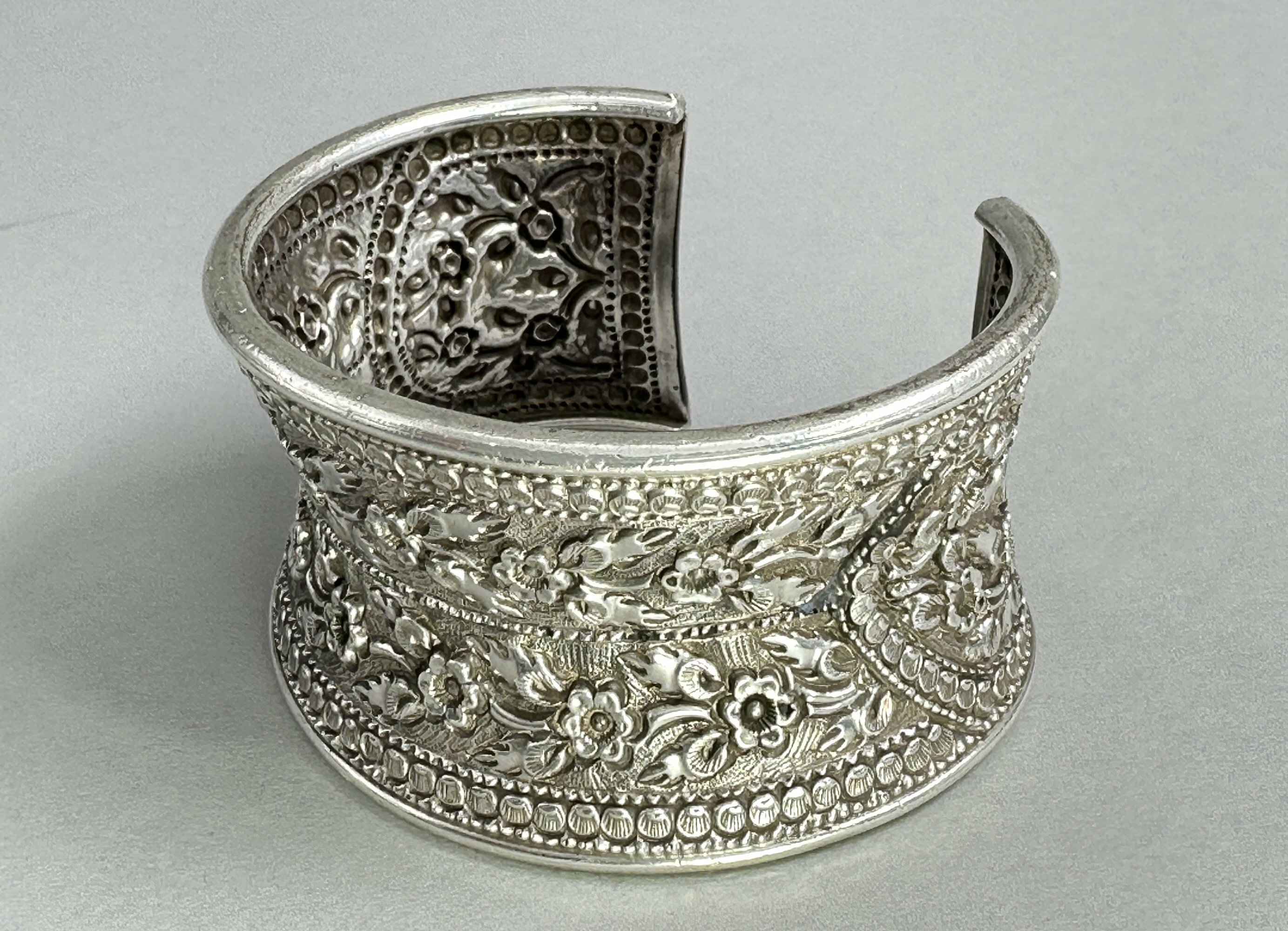
Indian silver repousse cuff bracelet, c1920
Price: £85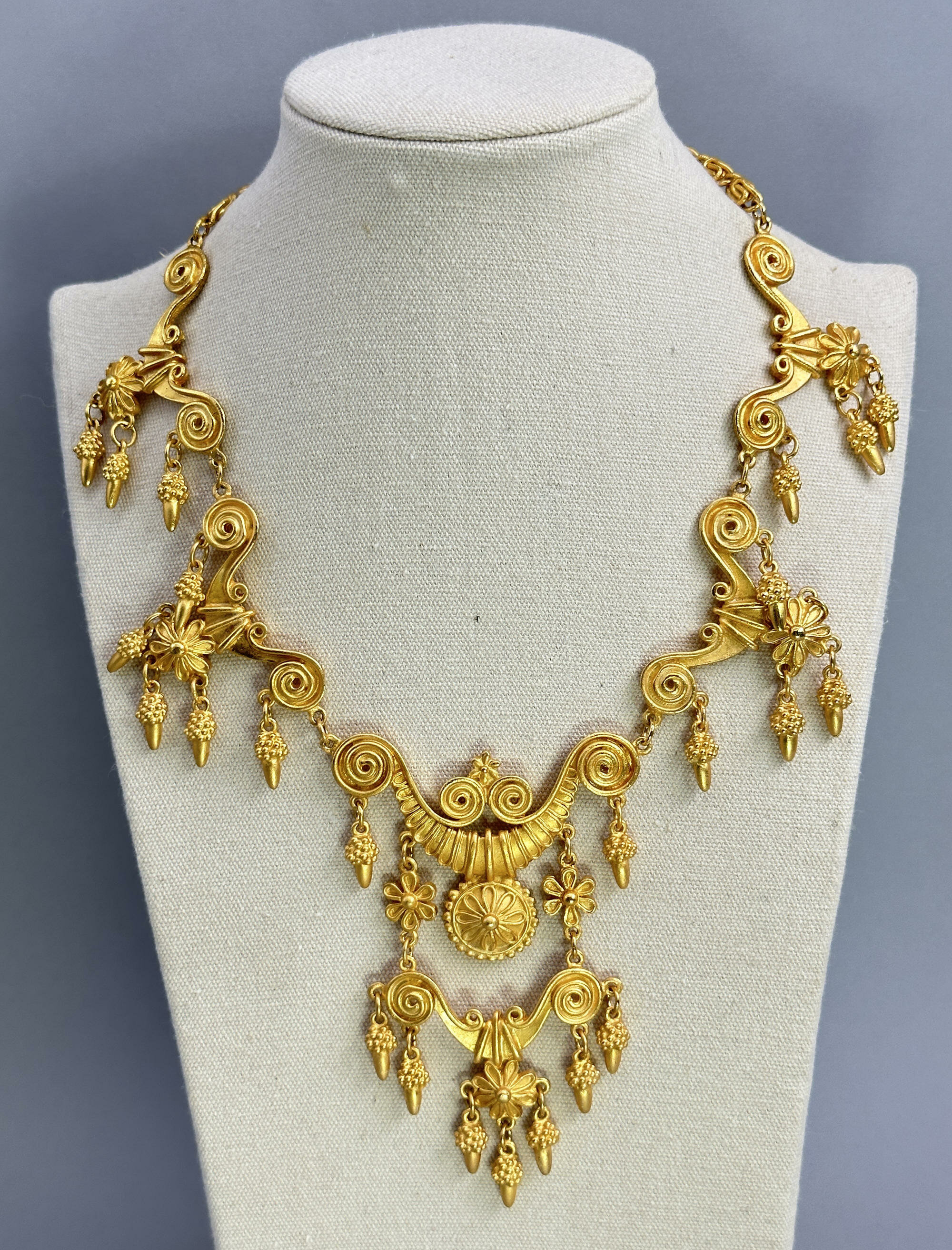
Estruscan style necklace in the manner of Lalaounis c1990
Price: £150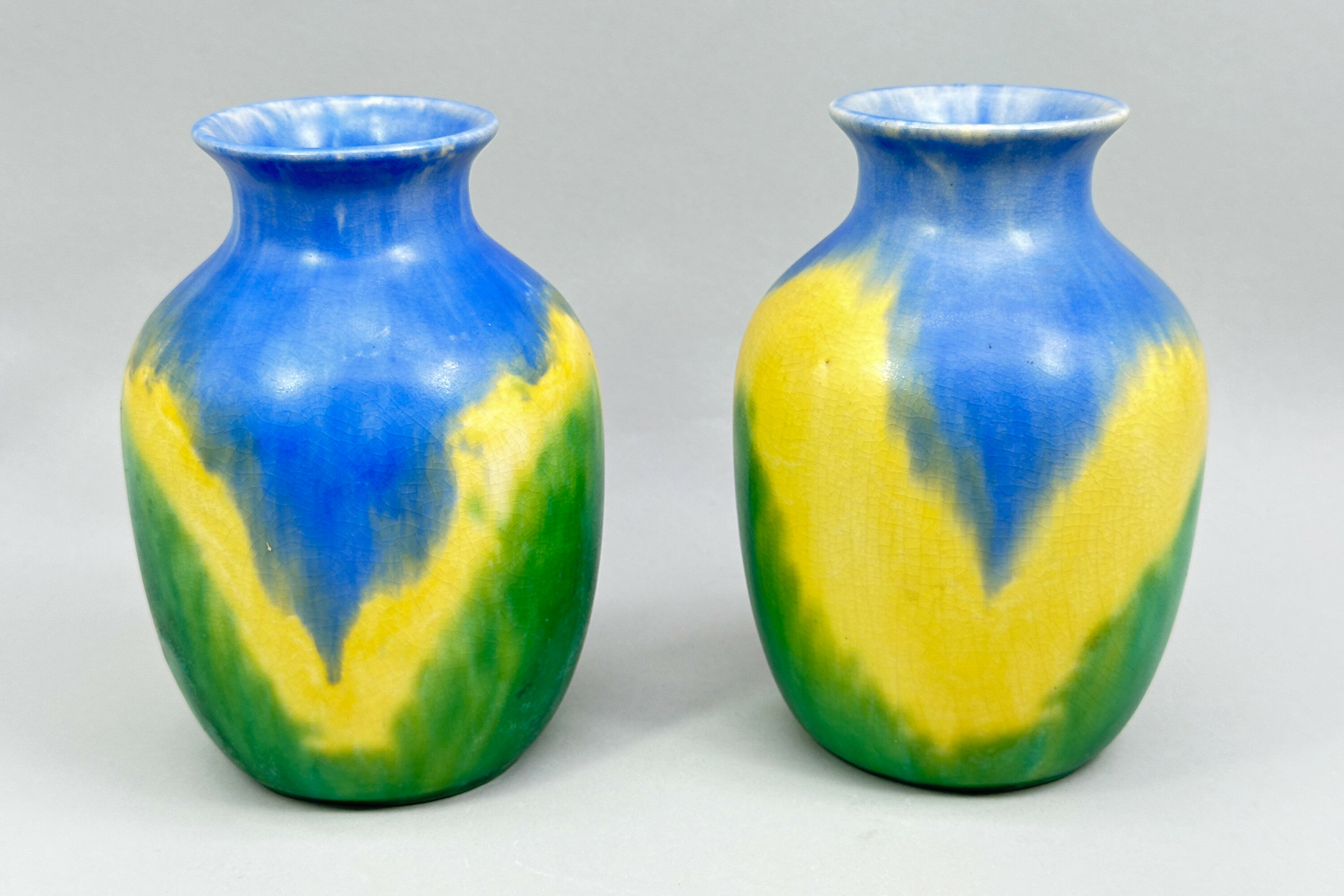
Pair of Art Deco style Avon Ware Vases, 1930s
Price: £45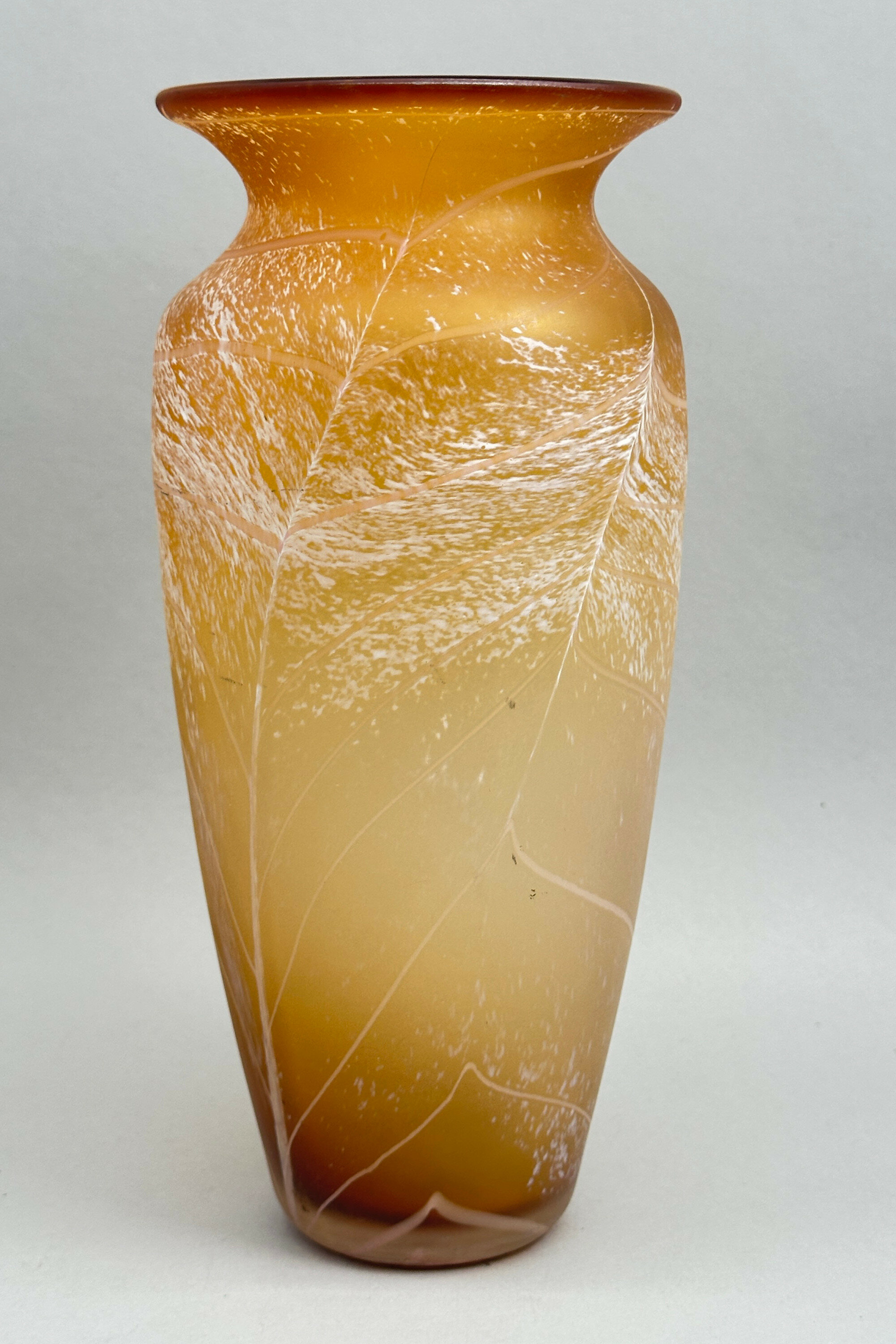
Art glass feather design Vase, probably German second half C20th
Estimate: £30 – 40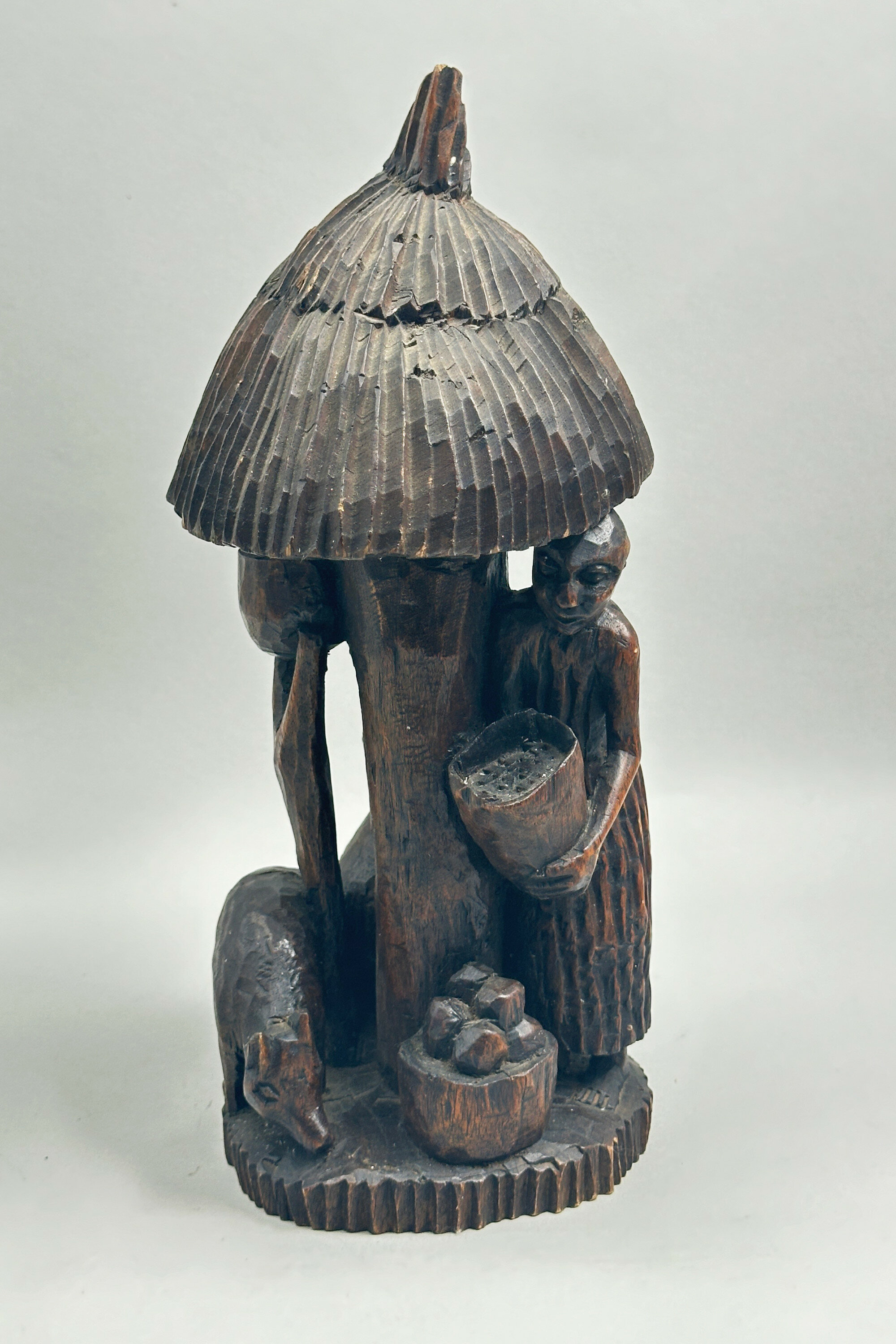
African wood figural group, Guinea c1970
Price: £35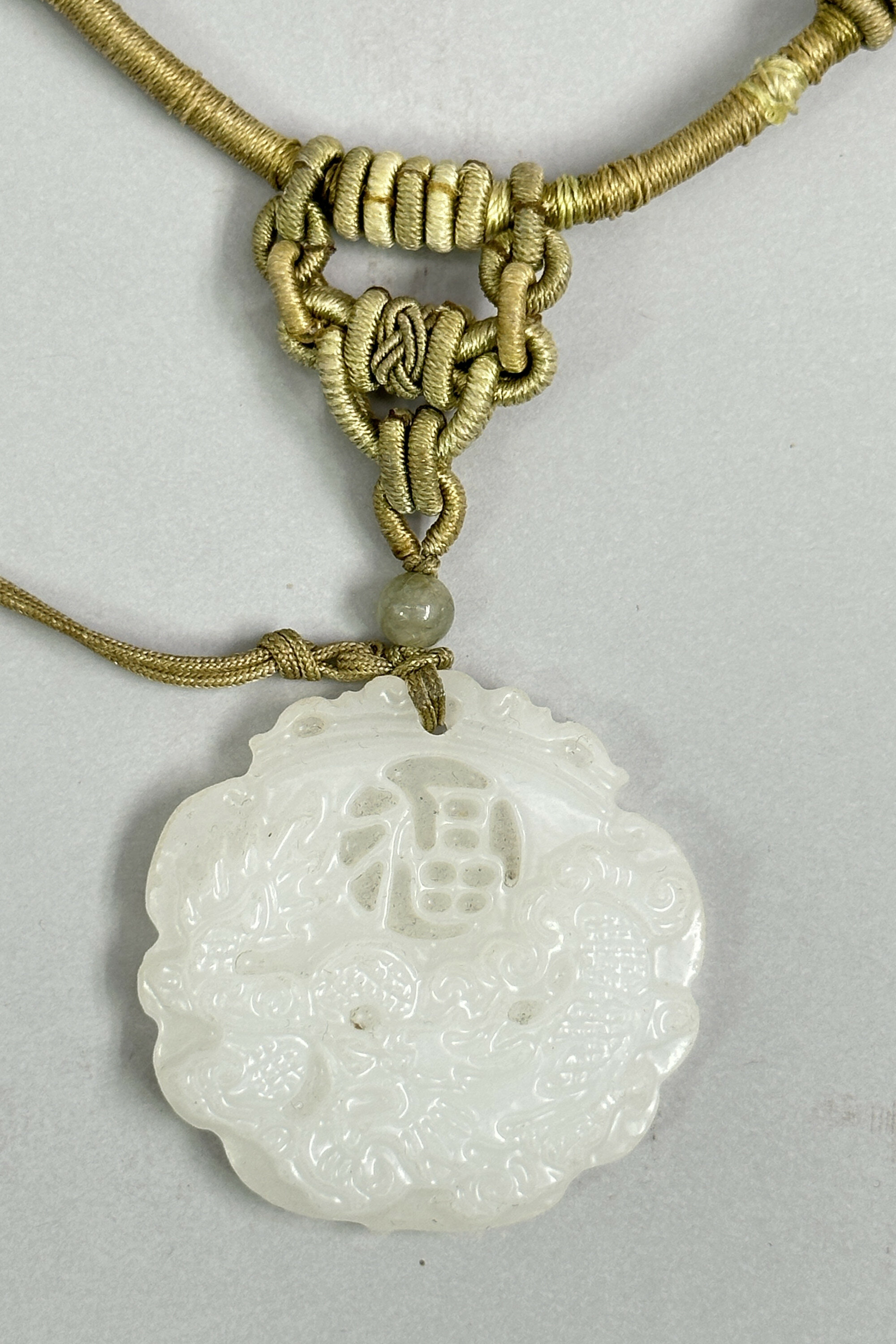
A very finely carved white pendent on traditional silk cord, Modern
Price: £25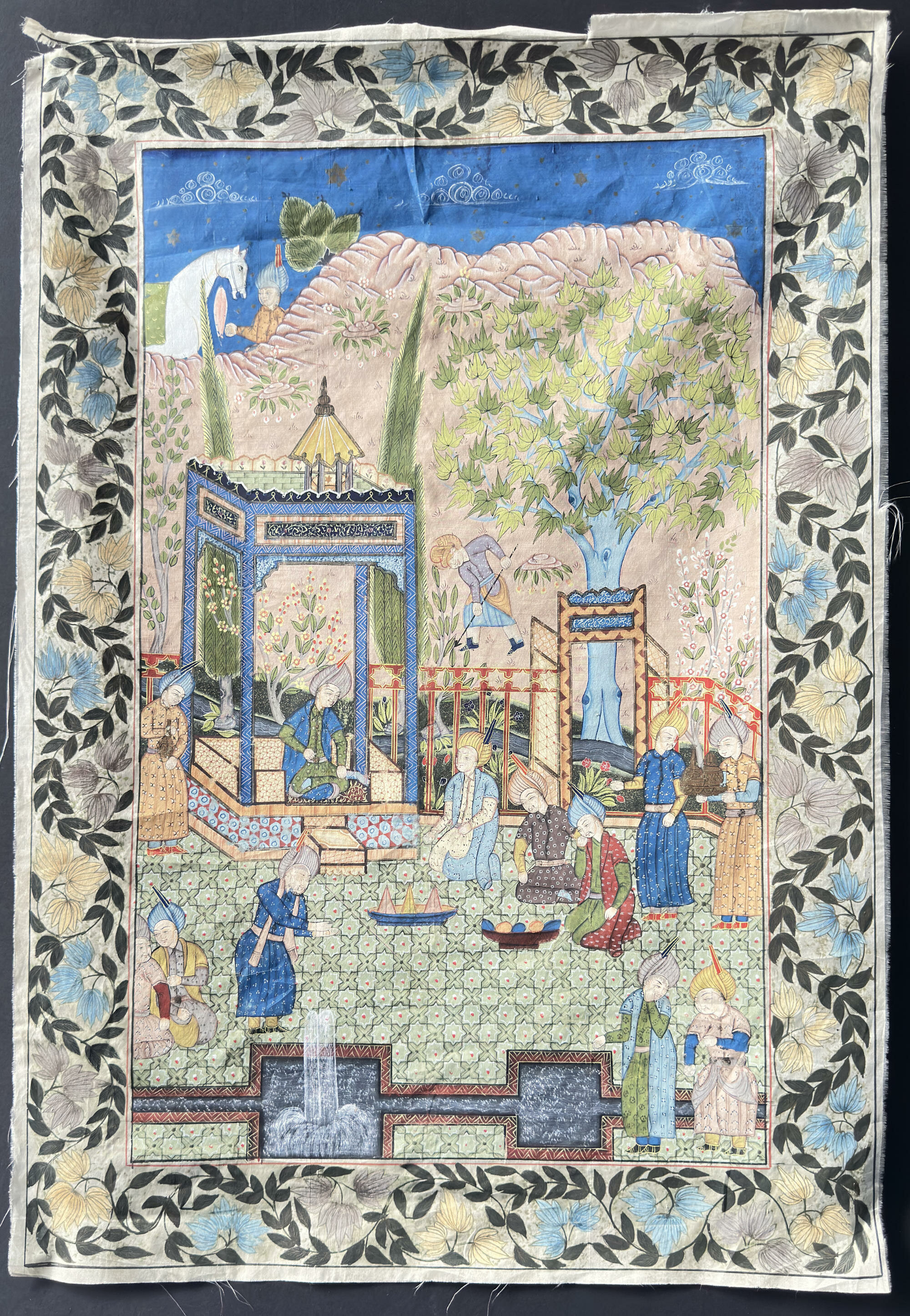
Persian Painting on Silk depicting Courtiers in a Palace Scene, C19th/C20th
Price: £75The ‘Khamsa’ (Quintet or Quinary) is the best known work of Nizami Ghanjavi (c1141 – 1209) considered the greatest romantic epic poet in Persian literature. It comprises five long narrative poems the first of which is ‘Makhzan-ol-Asrar’ (The Treasury or Storehouse of Mysteries) and contains an episode where two physicians agree to fight each other with poison: each would give the other a poison and the doctors would then attempt, by their skill, to provide an antidote. One doctor succeeds but the other has less luck and in the version of the scene mentioned above is depicted lying ill on the ground.
The Khamsa was a popular subject for lavish manuscripts illustrated with painted miniatures at the Persian and Mughal courts in later centuries. The British Museum picture mentioned above, for example, comes from a manuscript created for the Mughal Emperor Akbar in the 1590s. Scenes from these works were then copied or adapted in turn by Persian artists in the late nineteenth and early twentieth centuries which is what we have here. The quality of the execution remains high producing a highly decorative example of the best Persian work.
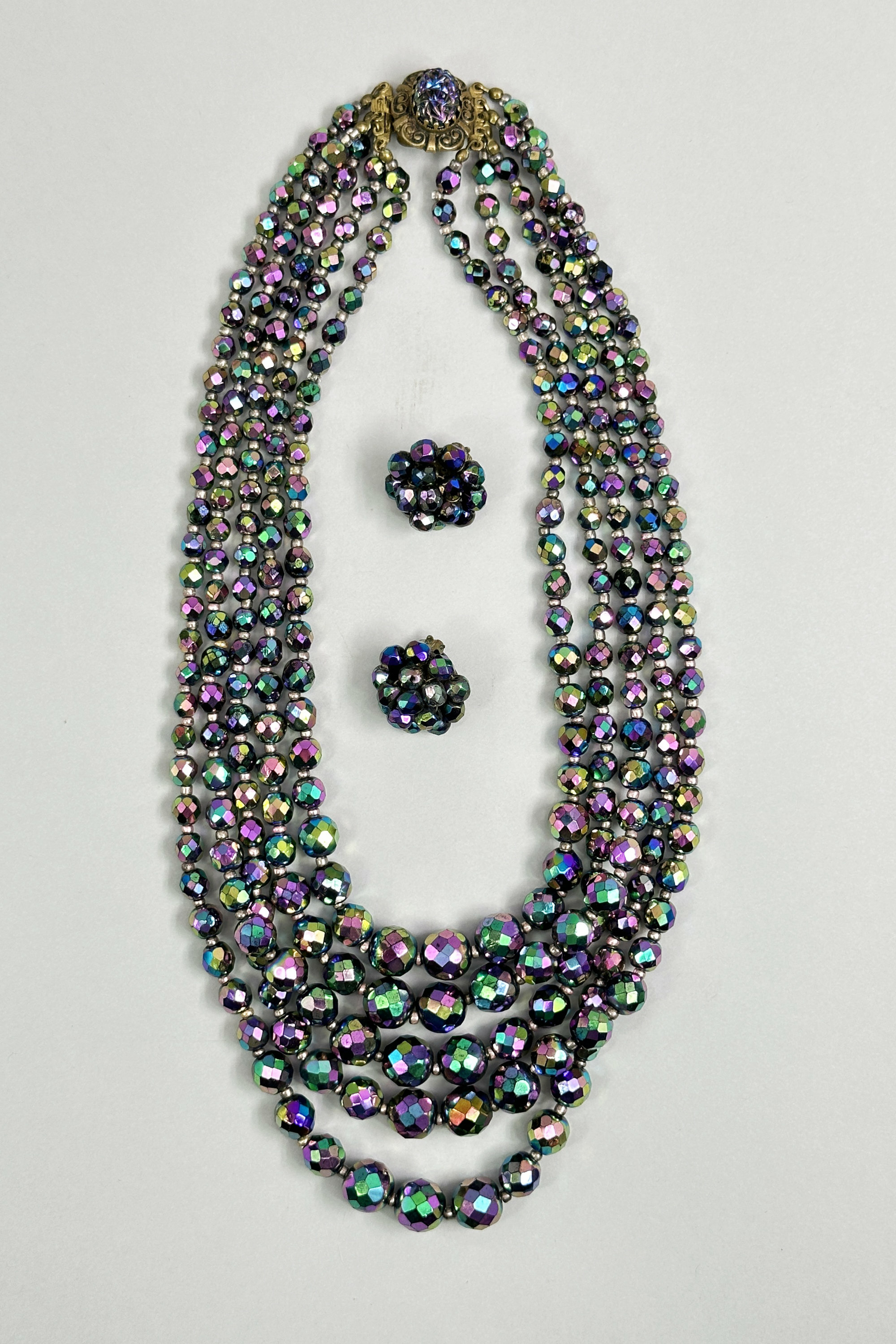
Show stopping suite of necklace and earrings c1960
Price: £85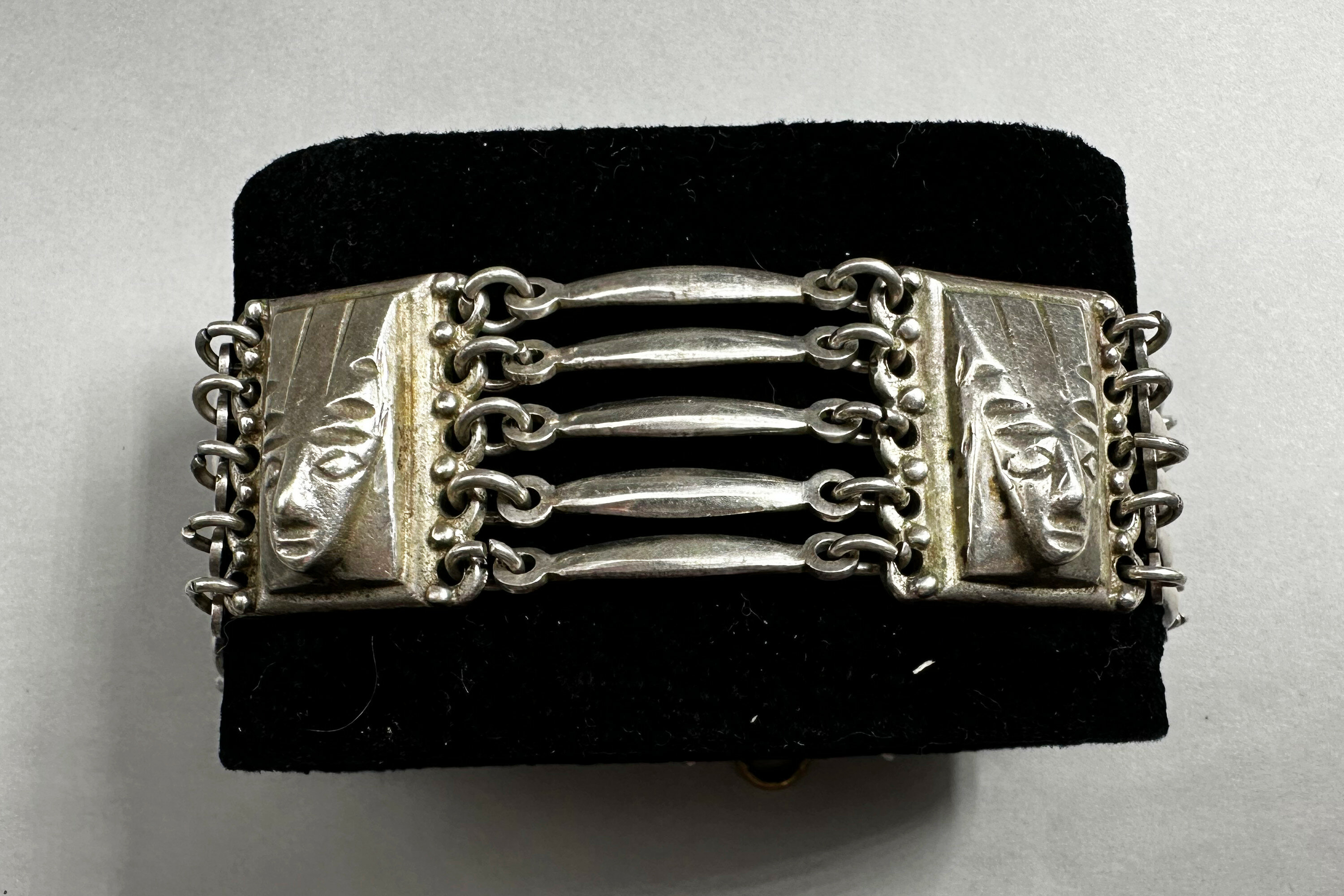
Taxco bracelet with Aztec mask motif, 1940s
Price: £65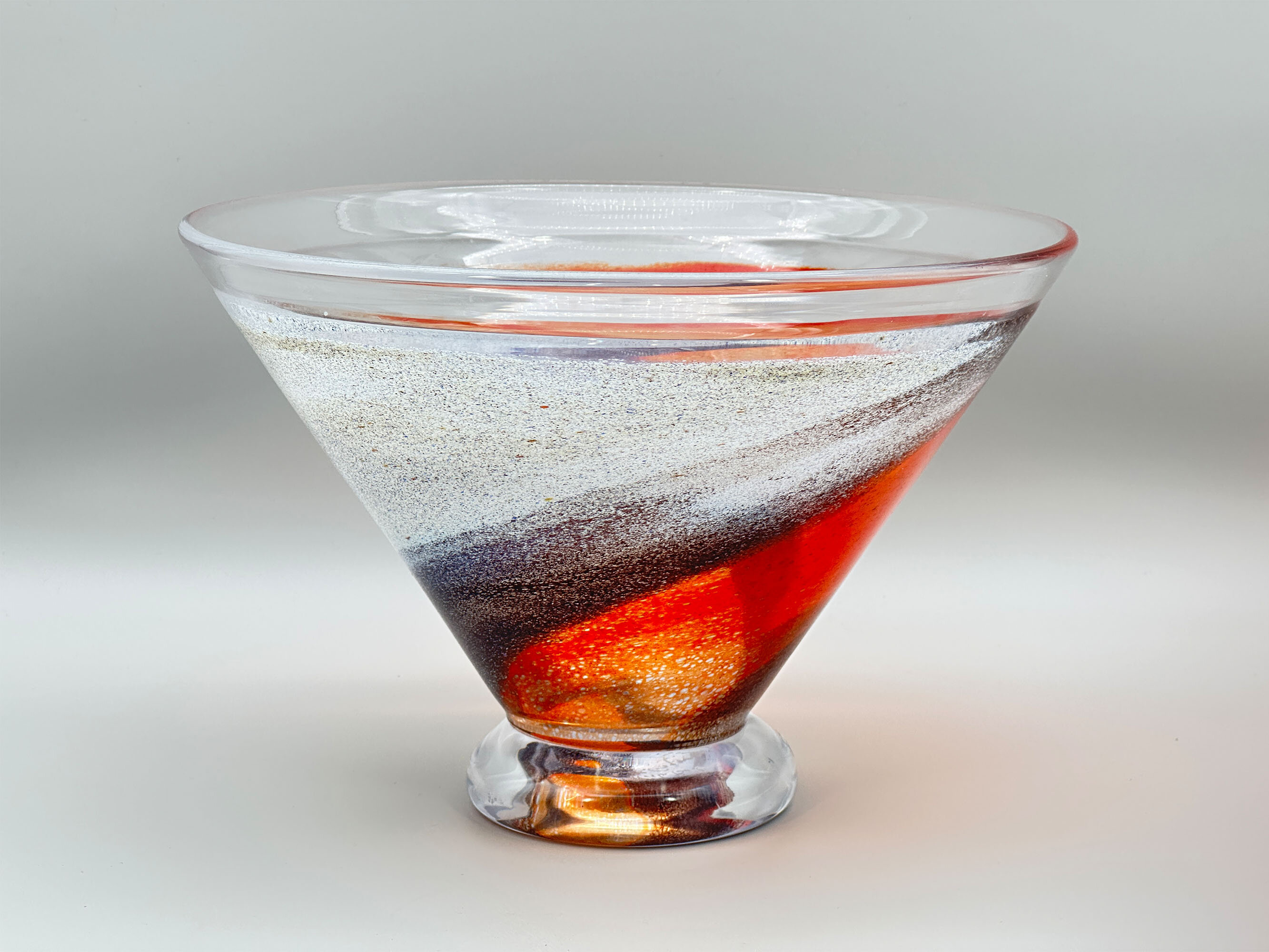
Twister glass Bowl, Kjell Engman for Kosta Boda, signed and with label, late C20th
Estimate: £100 – 150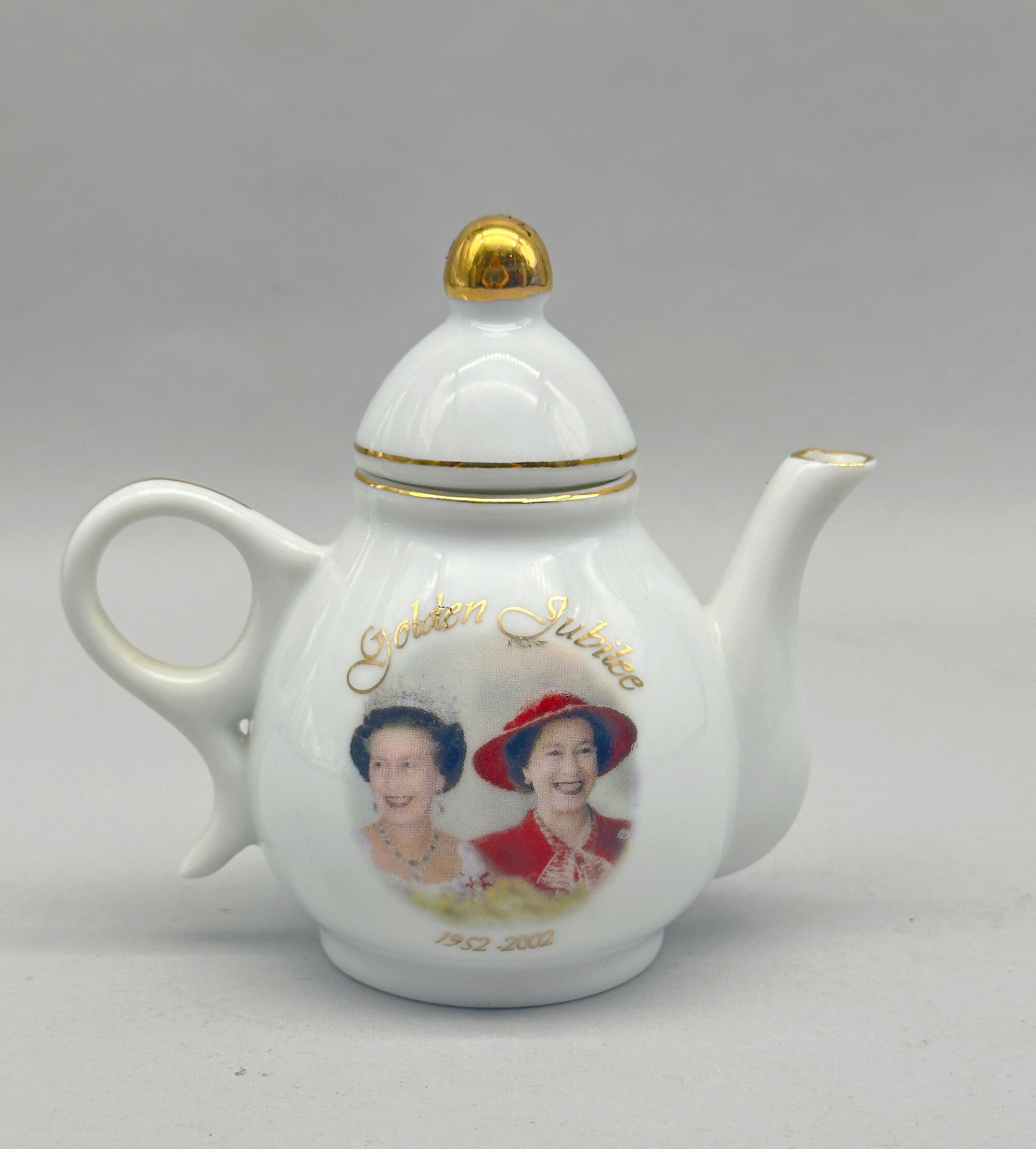
Teapot and Cover : Golden Jubilee Queen Elizabeth II, 2002
Price: £10
Large faux coral Bakelite brooch, British c1940
Price: £45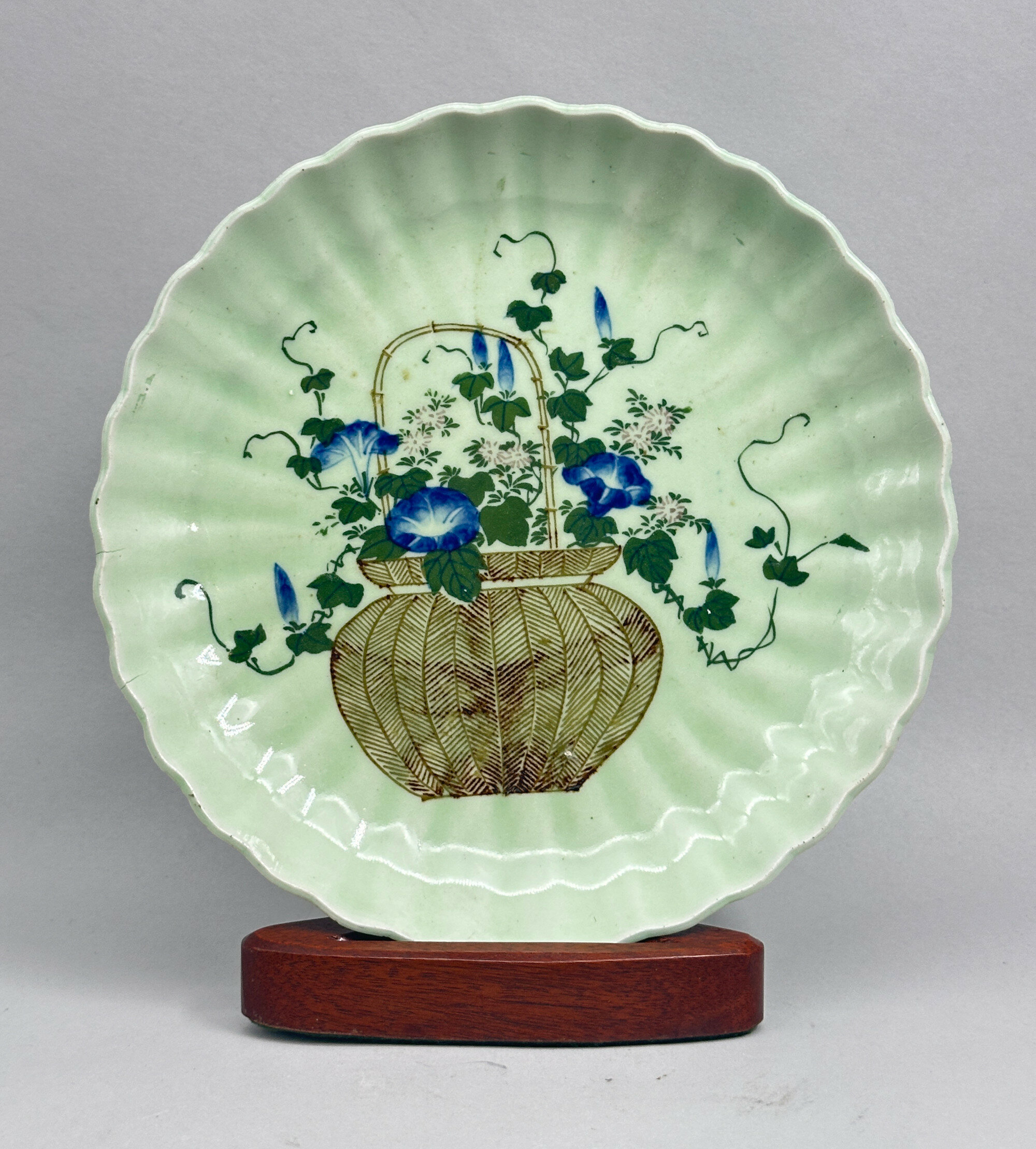
Japanese Celadon Dish decorated basket of flowers, circa 1900
Price: £45Celadon glazed wares with enamel decoration in fairly muted colours are a familiar product amongst the ceramics produced by Japanese potters at the end of the nineteenth century but examples of this type of dish are rather less commonly found. The basket of flowers is a regular decorative feature of Chinese ceramics, but given here a slightly different interpretation with the depiction of lotus, the emblem of summer. The mark probably imitates Chinese ‘commendation’ marks inscribed within the foot rim, another nod on the part of the Japanese potters towards their Chinese counterparts.
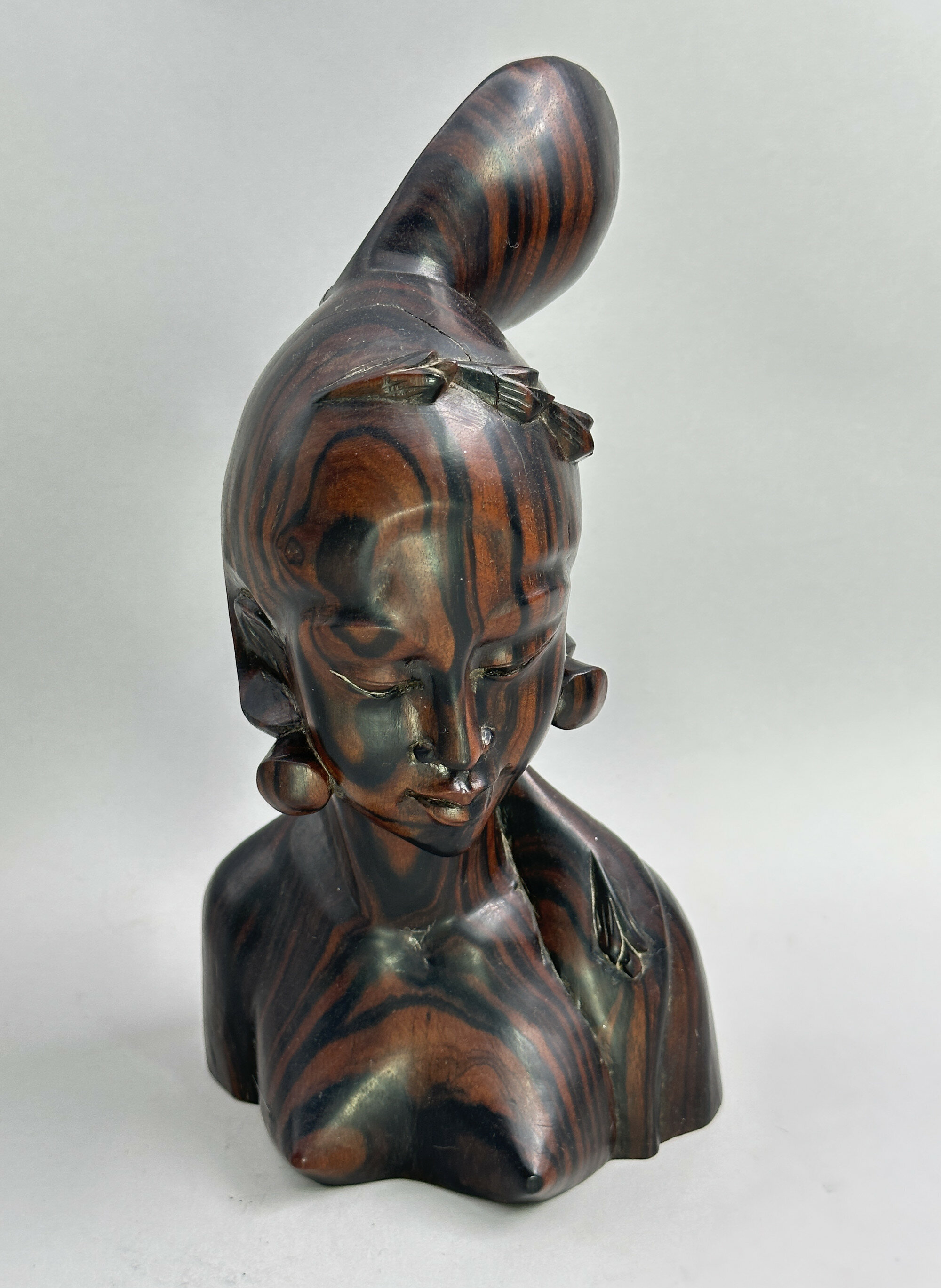
Vintage Carved wood bust of a Lady, Bali, Indonesia, second half C20th
Price: £75
Vintage Carved wood figure of a seated Man, Bali, Indonesia, second half C20th
Price: £75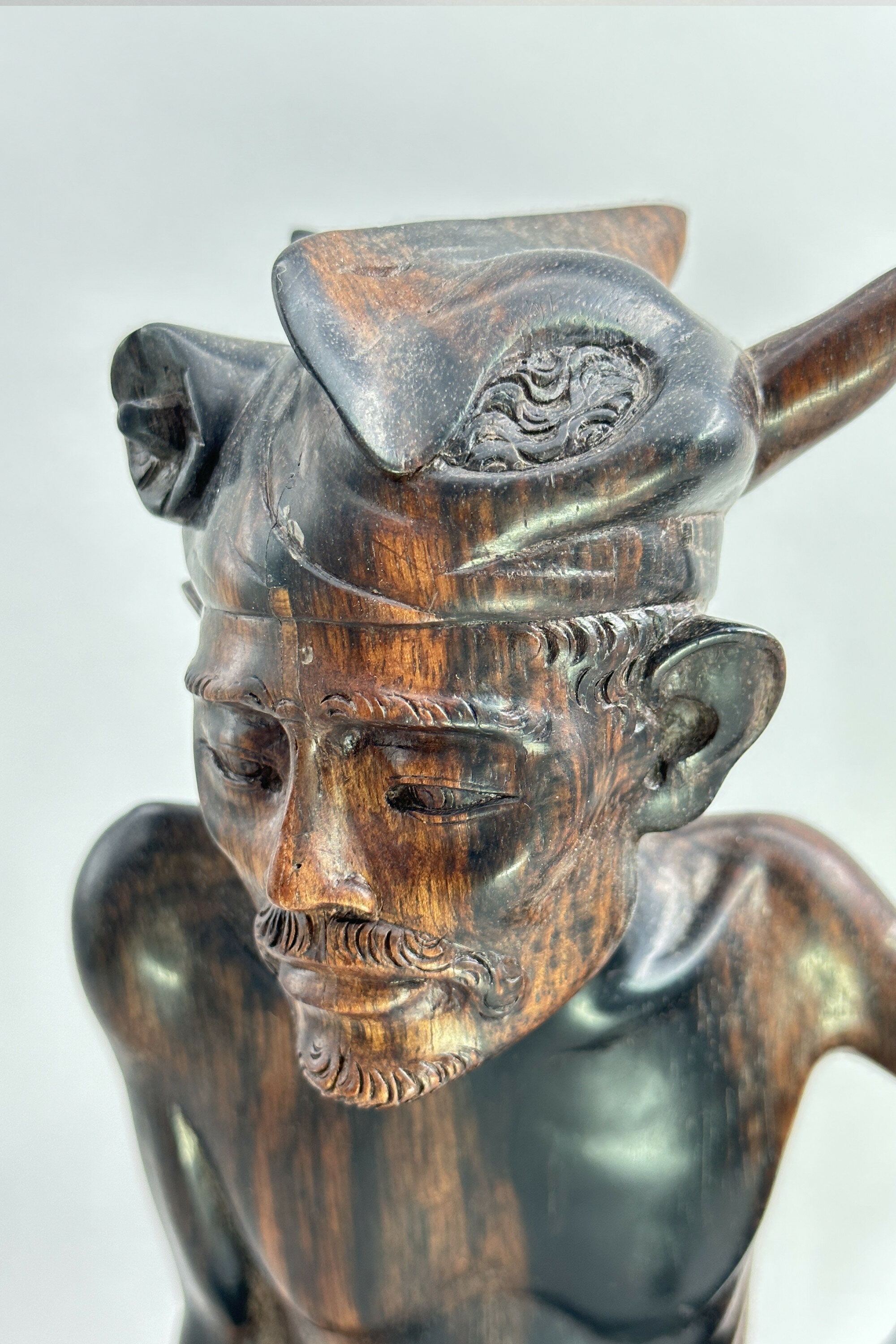
Vintage Carved wood figure of a seated Man, Bali, Indonesia, second half C20th
Price: £75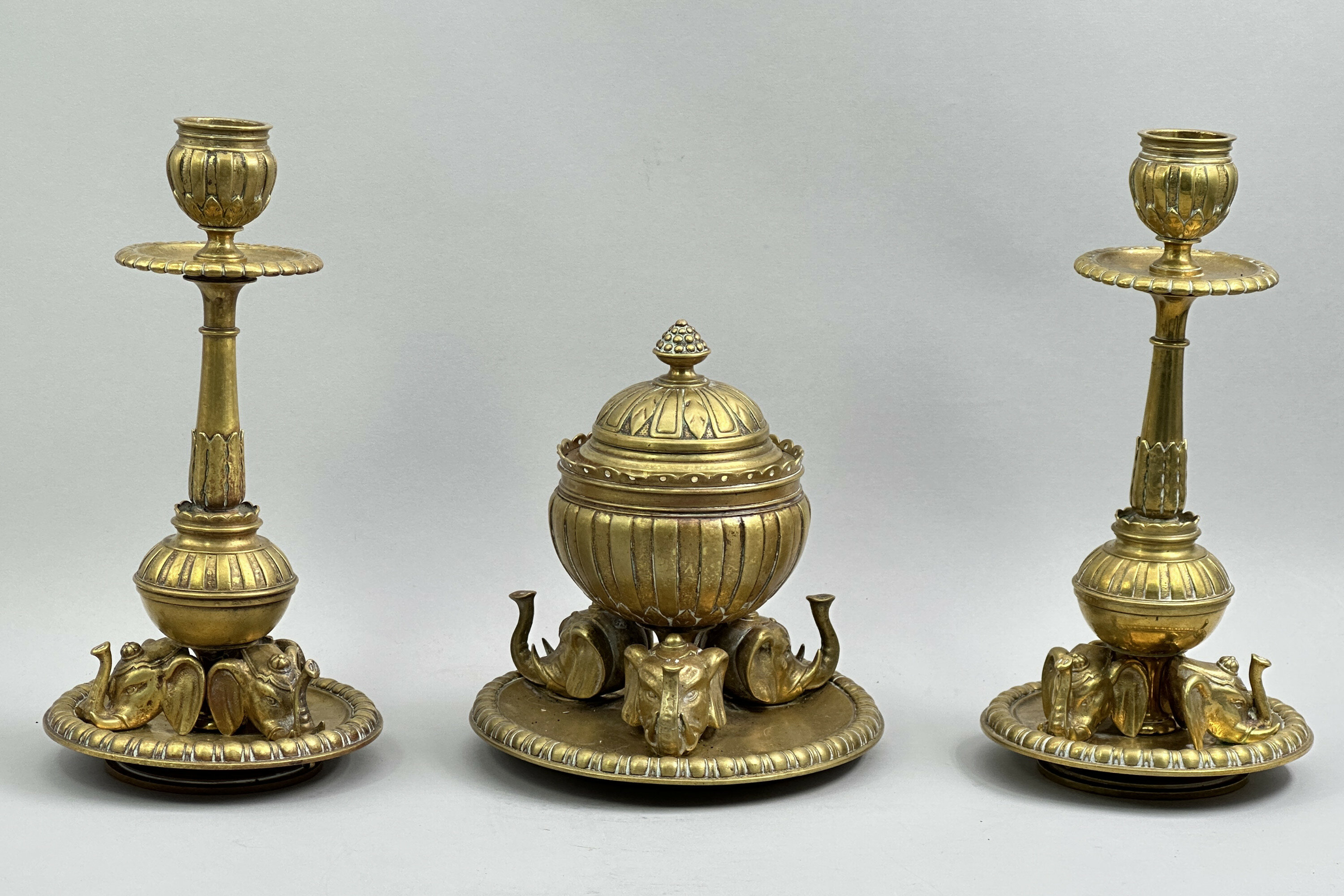
Unusual Brass Table or Desk Set with Elephant Heads, Indian, first half C20th
Price: £240The craftsmanship of this set is self evident both in the quality and weight of the brass and the casting techniques used. Its purpose is less certain and there are no easy parallels. The central vessel might have been designed for incense (although the cover is solid rather than openwork) in which case we could have a table ornament here, but the interior of the vessel can seem to resemble an inkwell in which case we might have a desk set. It's new owner will have to decide! Style of decoration suggests India in the early part of the C20th and this set would then be one of the many pieces exported to the Britain from India at that time and which became very much a feature of contemporary domestic interiors.
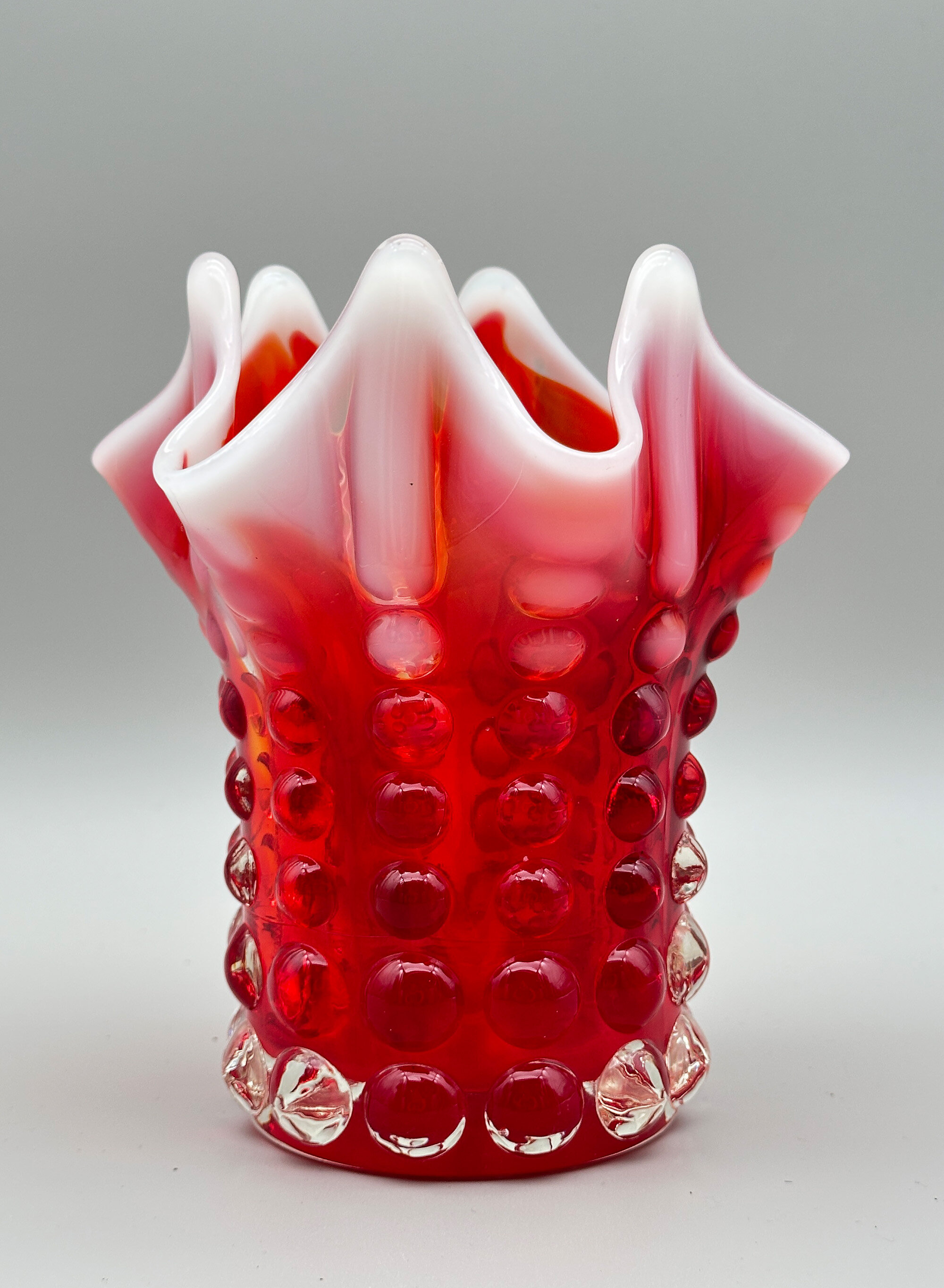
Cranberry hobnail glass Vase, Fenton Art Glass USA, mid C20th
Estimate: £30 – 40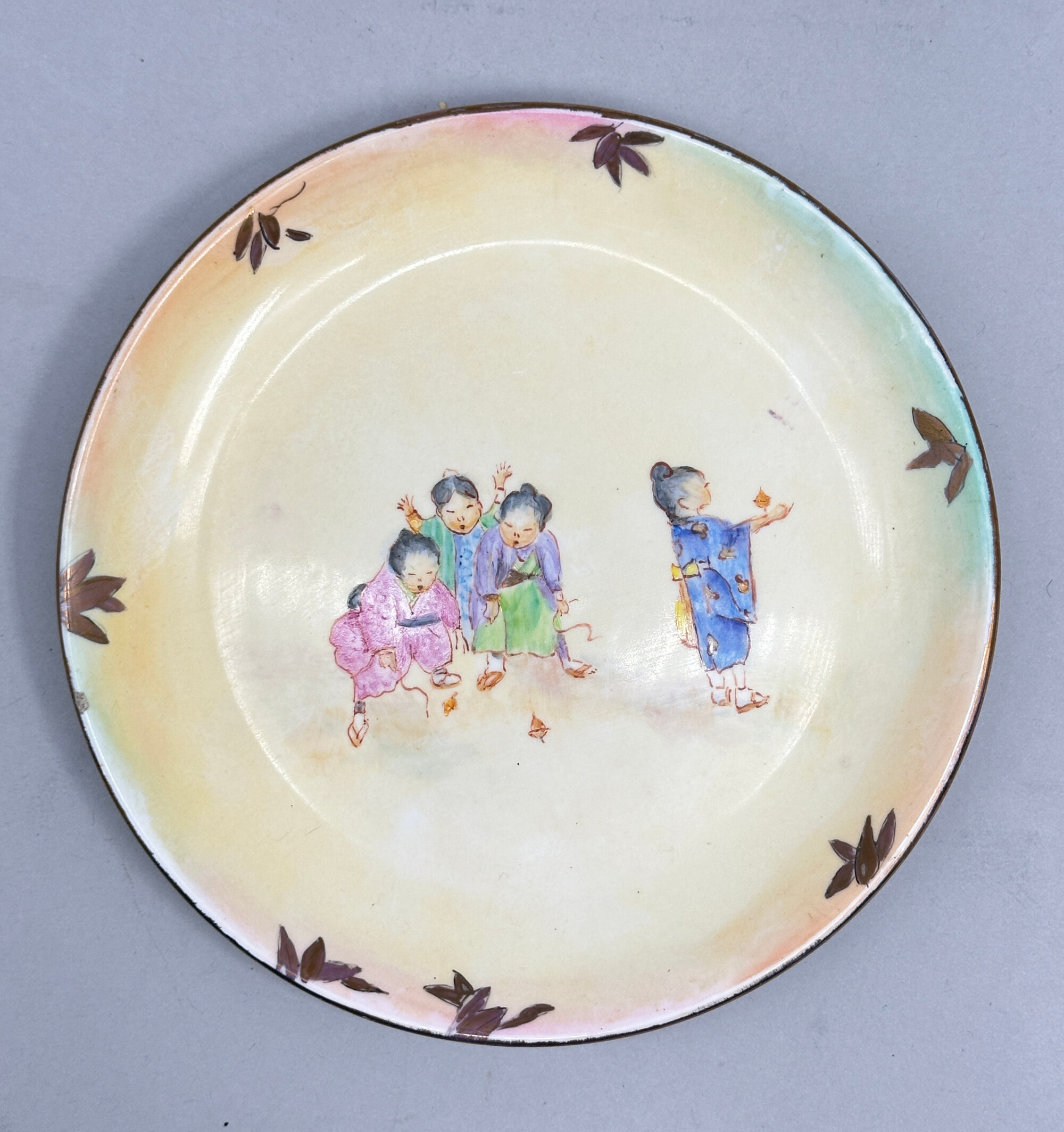
Oriental style ceramic plate, signed Alice Smith, possibly American mid C20th
Price: £10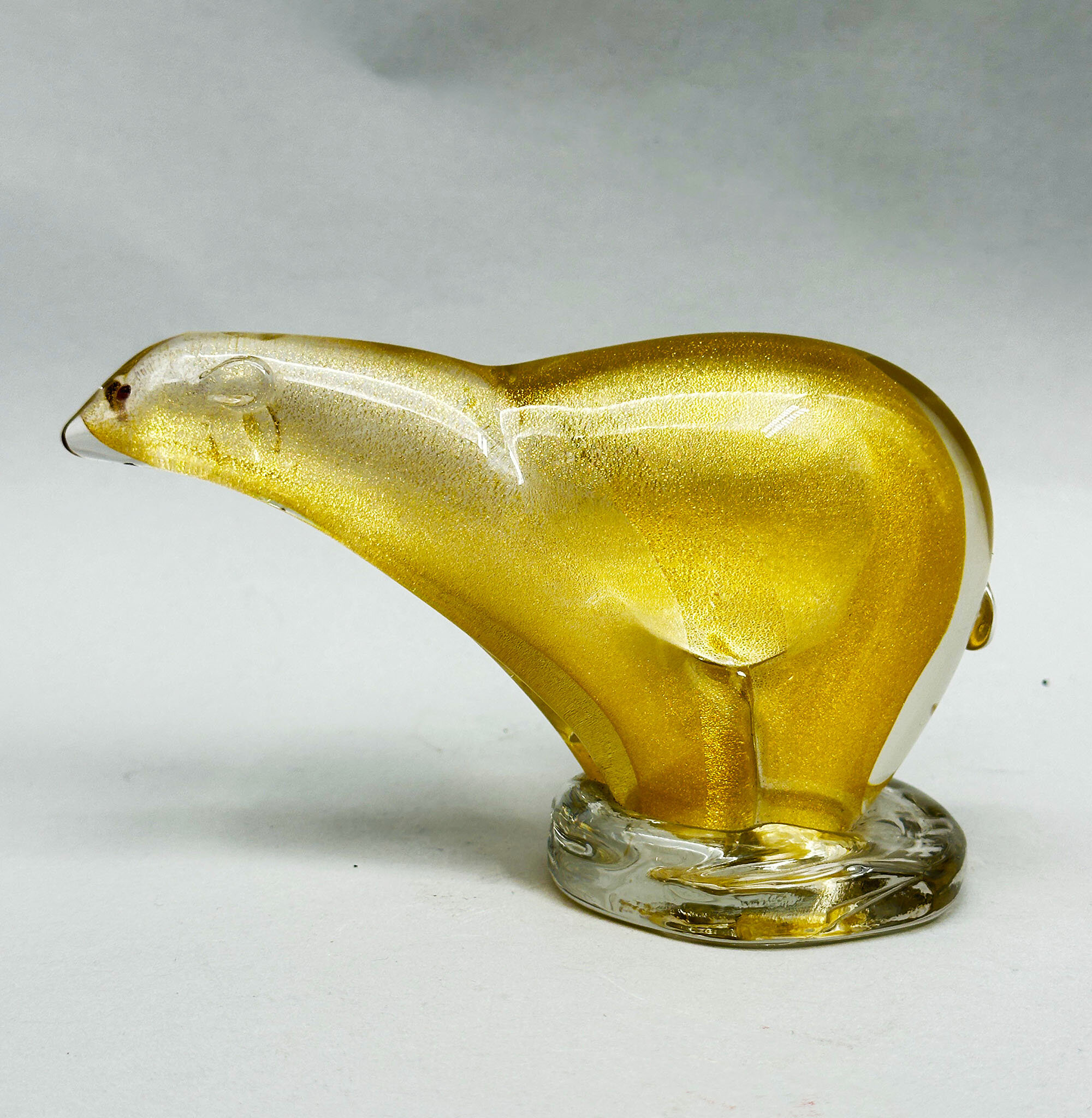
Murano glass Polar Bear probably by Alfredo Barbini, second half C20th
Estimate: £60 – 80
Two Amelia Art Glass Vases, Apple and Pear
Price: £30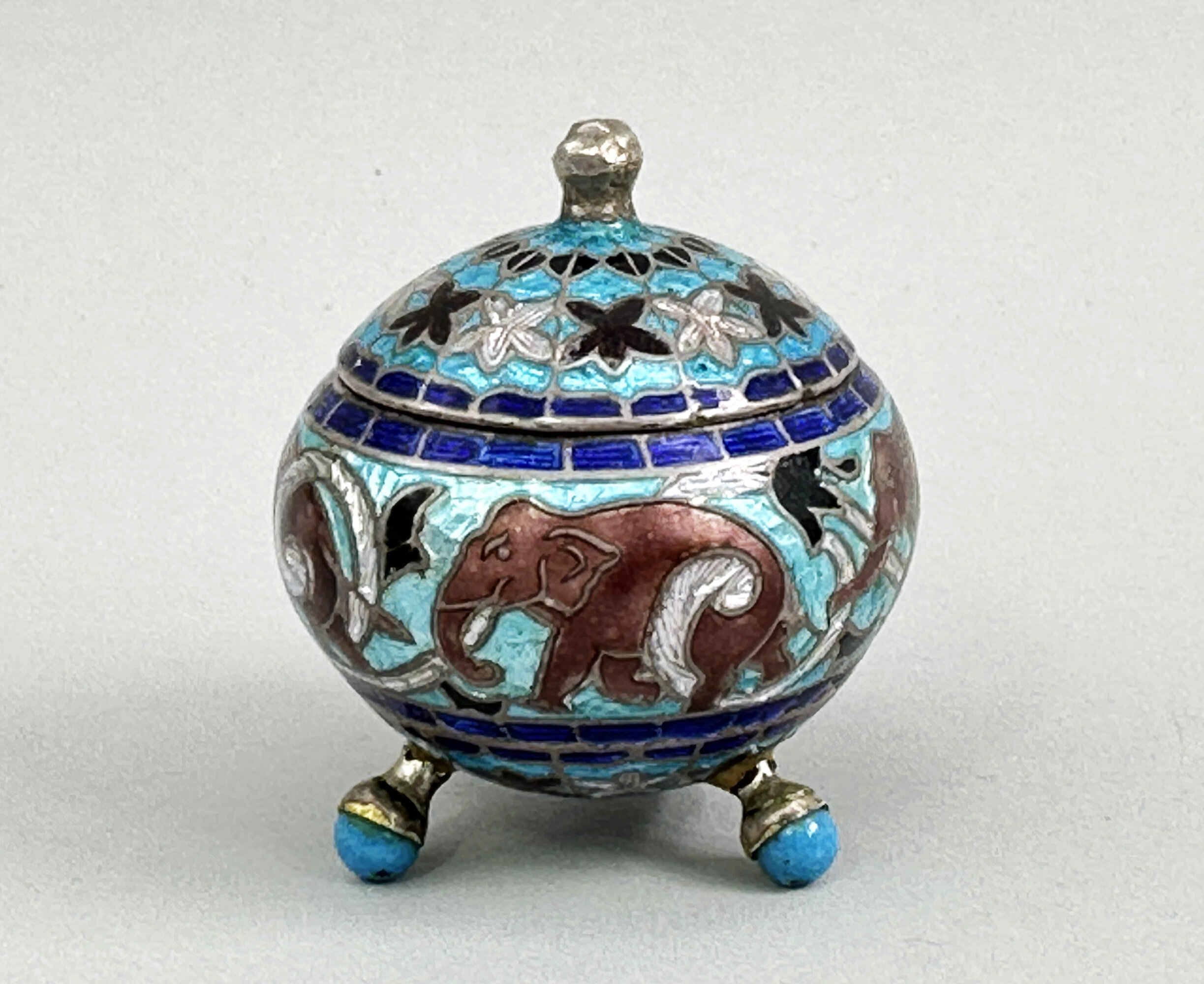
Indian Silver and Enamel pill or trinket Box, early C20th
Price: £55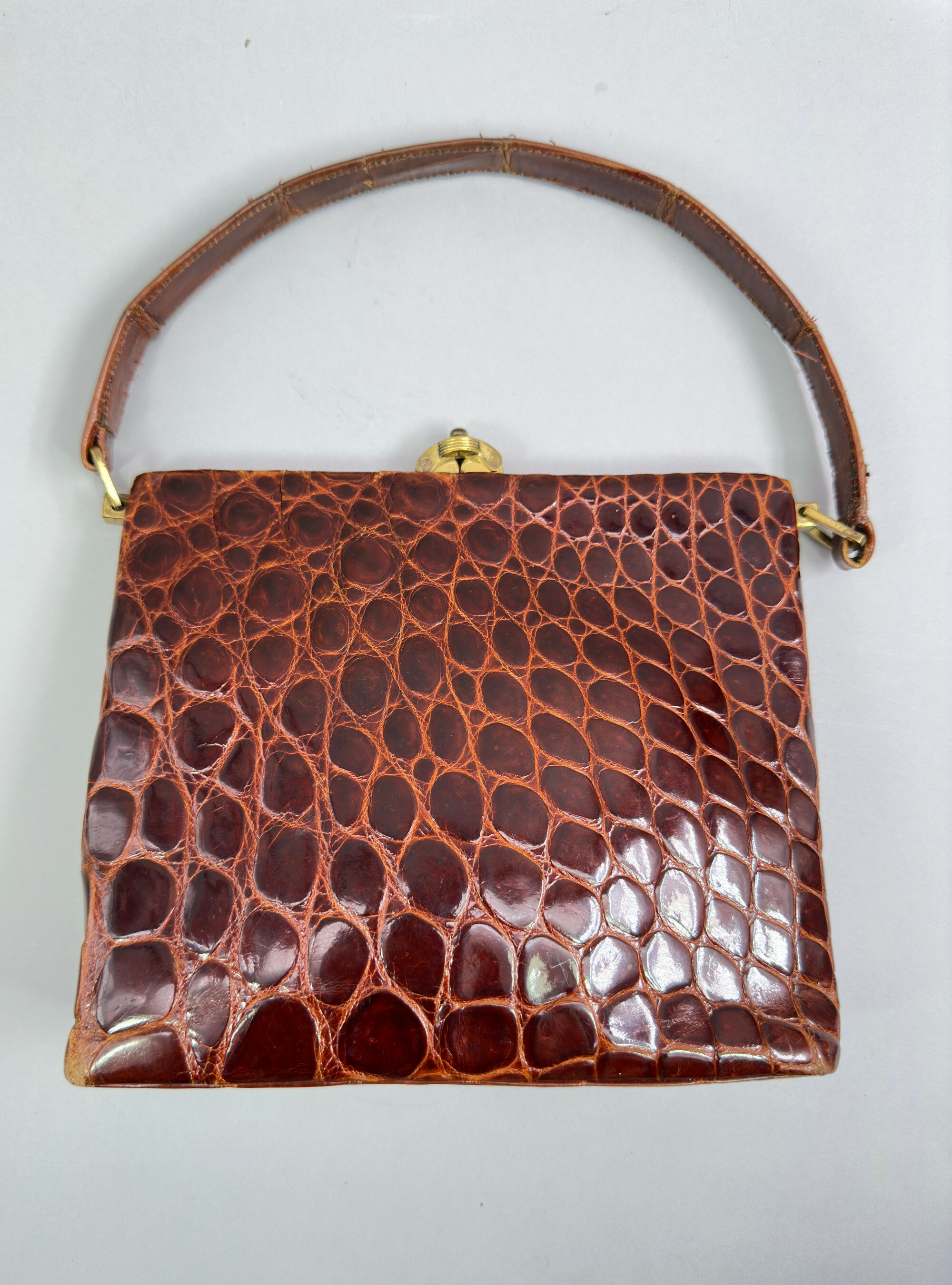
Dark chestnut crocodile handbag 1940s
Price: £75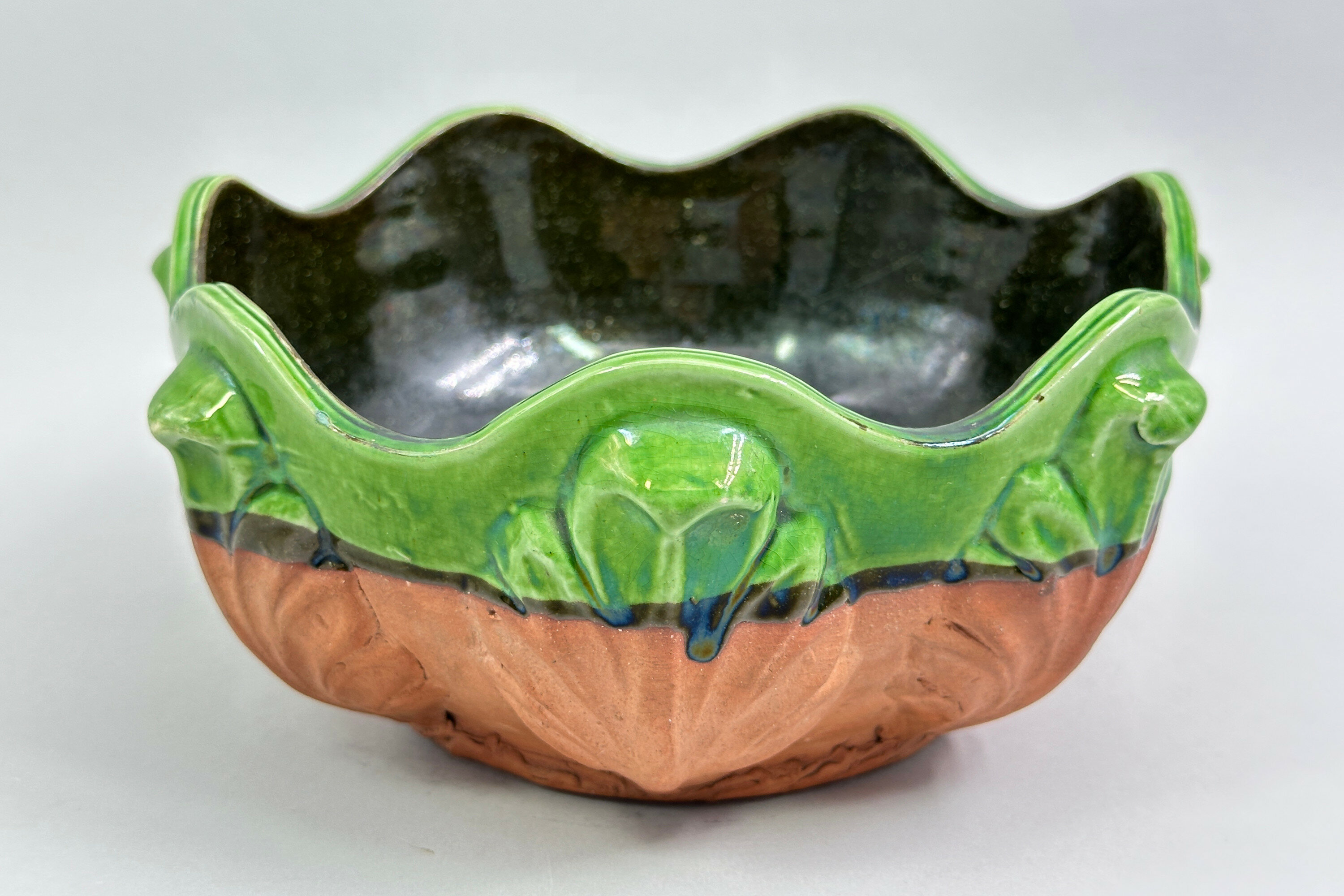
A Brannam Bowl, Barum ware, Terracotta and Glaze, marked C.H.Brannam, circa 1900
Price: £45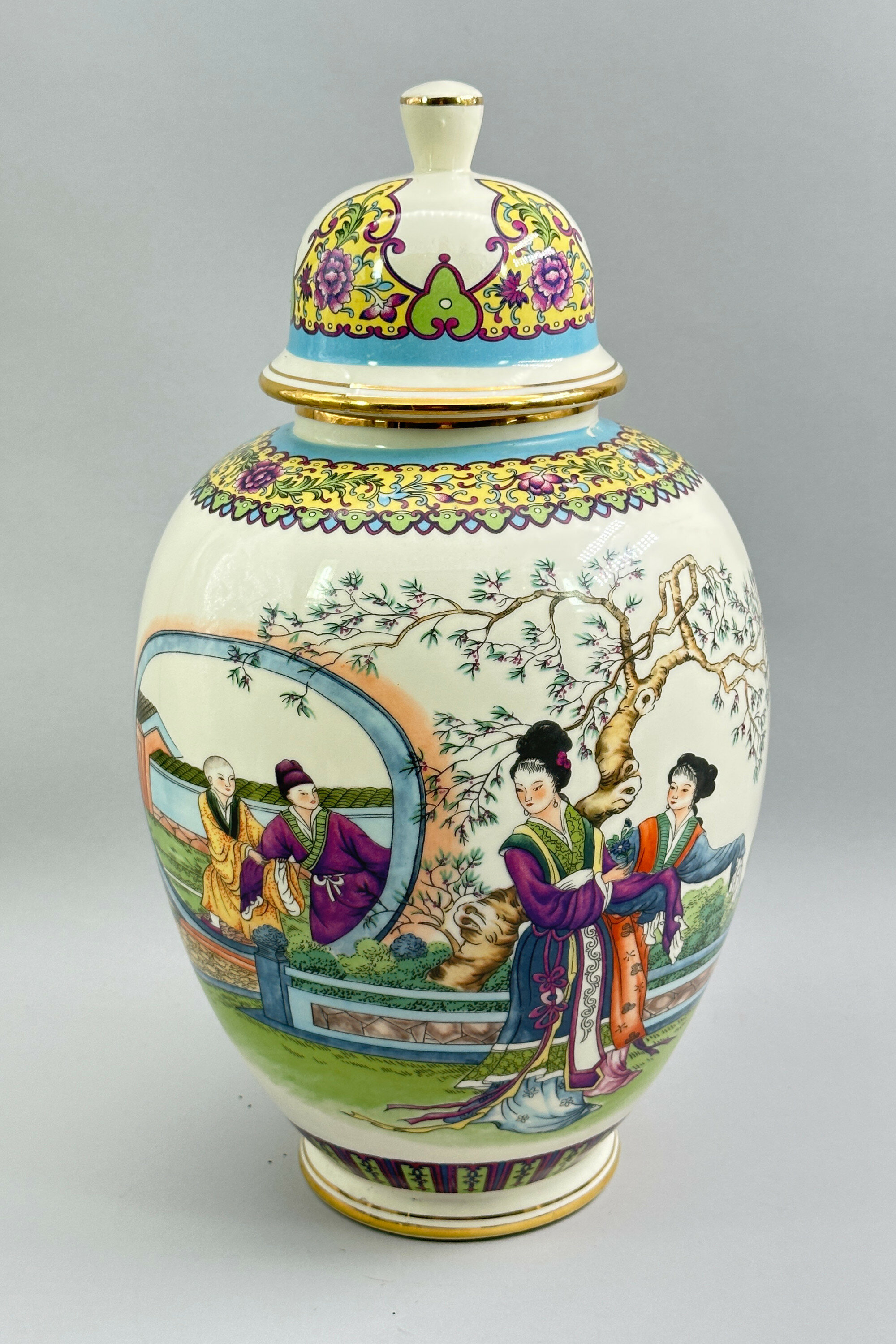
Chinese style Vase and Cover decorated with ladies and courtiers in a garden scene, C20th
Price: £55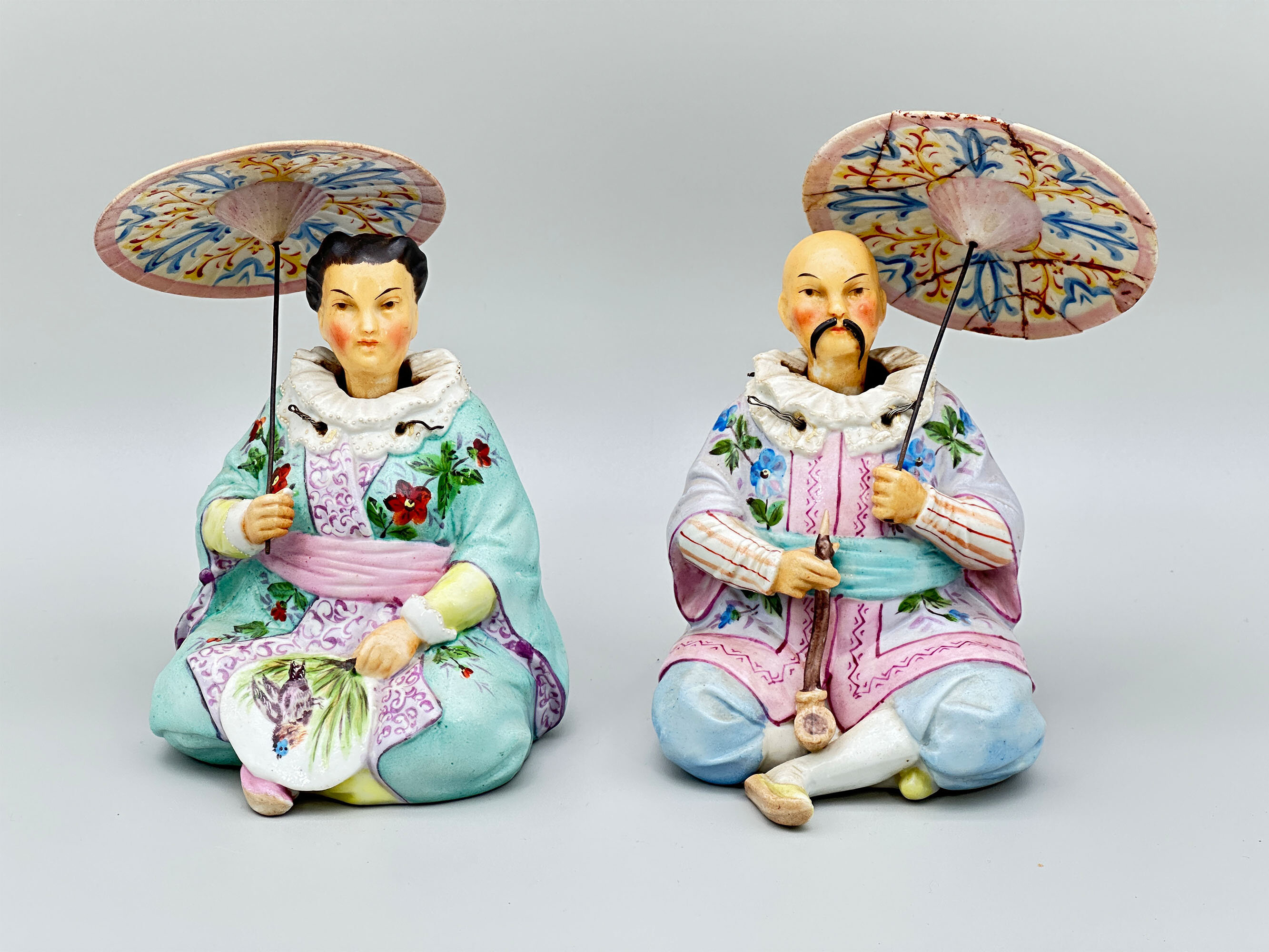
Pair of Nodding Head Figures, Chinese Emperor and Empress, Germany circa 1900
Estimate: £200 – 300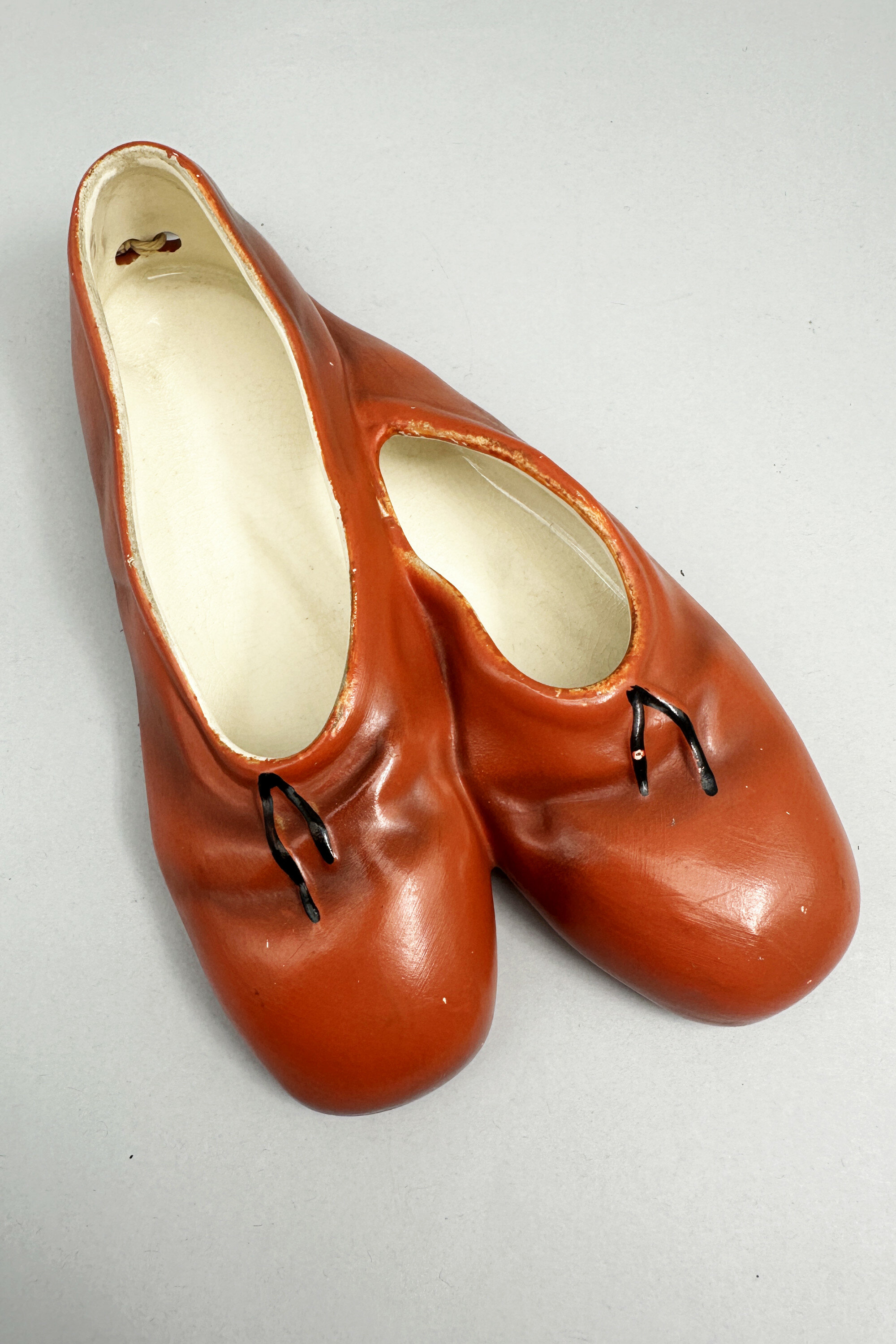
Pair of Brentleigh Ware Wall Hanging Ballet Shoes, 1930s
Price: £35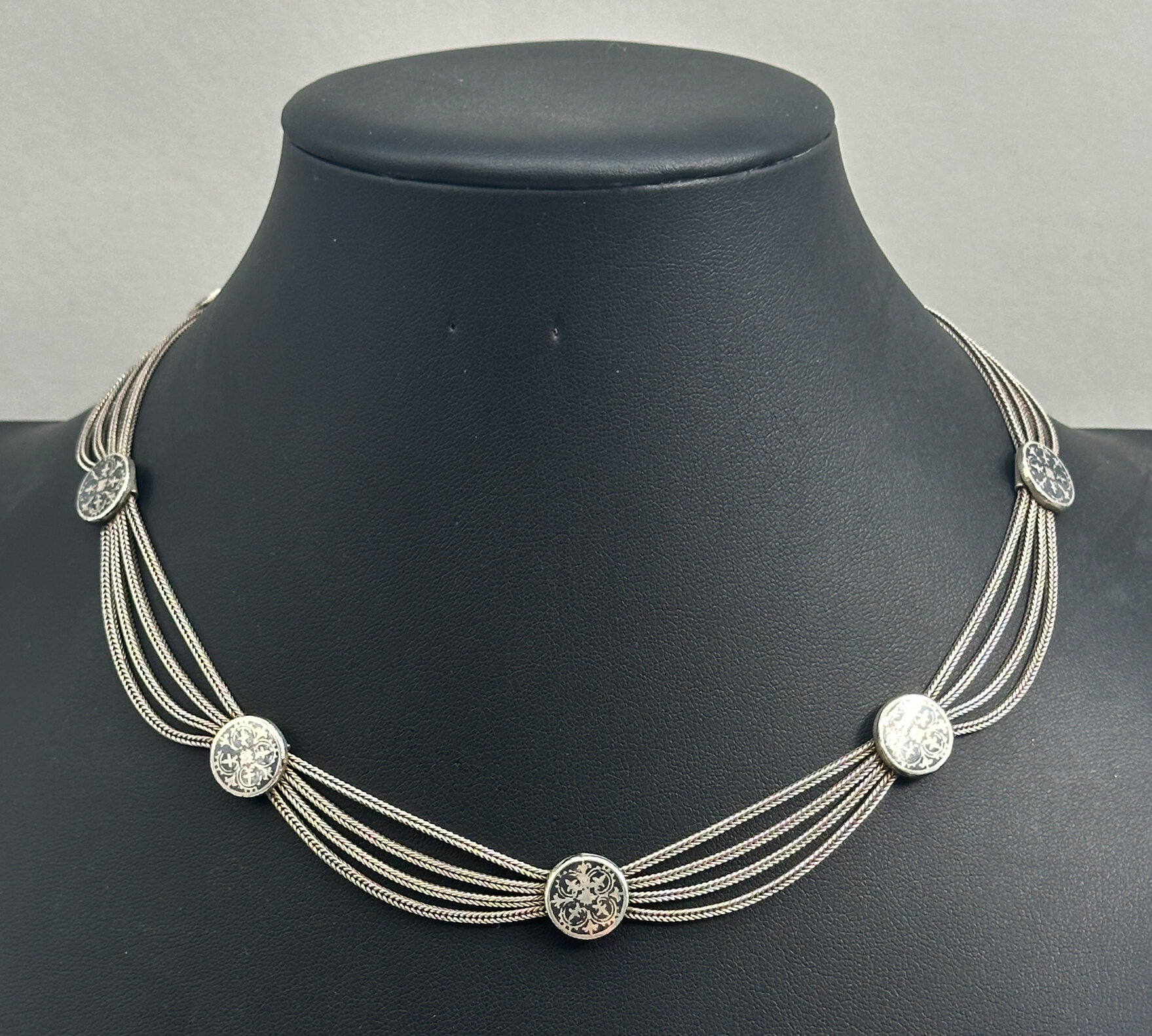
Islamic Silver Necklace with Niello work plaques, c1930
Price: £75The technique used is that of ‘niello’ work. (The word derives either from the classical Latin word ‘nigellum’ or the later mediaeval words ‘nigello’ or ‘neelo’.) Niello is a black mixture, usually of sulphur, copper, silver, and lead and used as an inlay on engraved or etched metal, especially silver. Added as a paste, it hardens to a black colour after firing and is then polished. Here it is the ground that formed from niello while the design shows though in silver, a less common version.
There is much skill in the craftsmanship here and the result is a piece of classic and timeless simplicity.
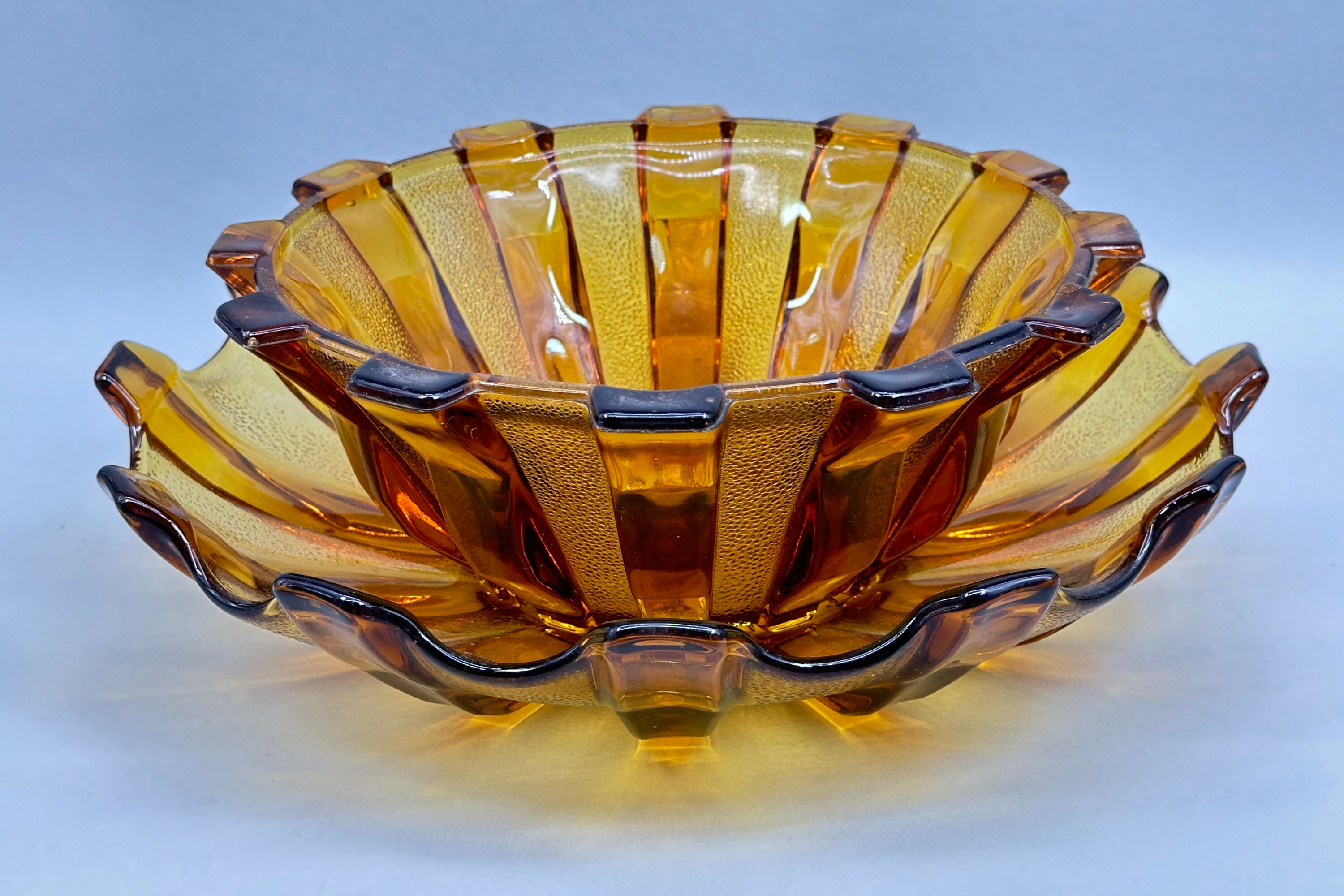
Amber Glass Bowl and stand, Stölzle Hermanova Hut factory, Czech 1930s
Estimate: £40 – 60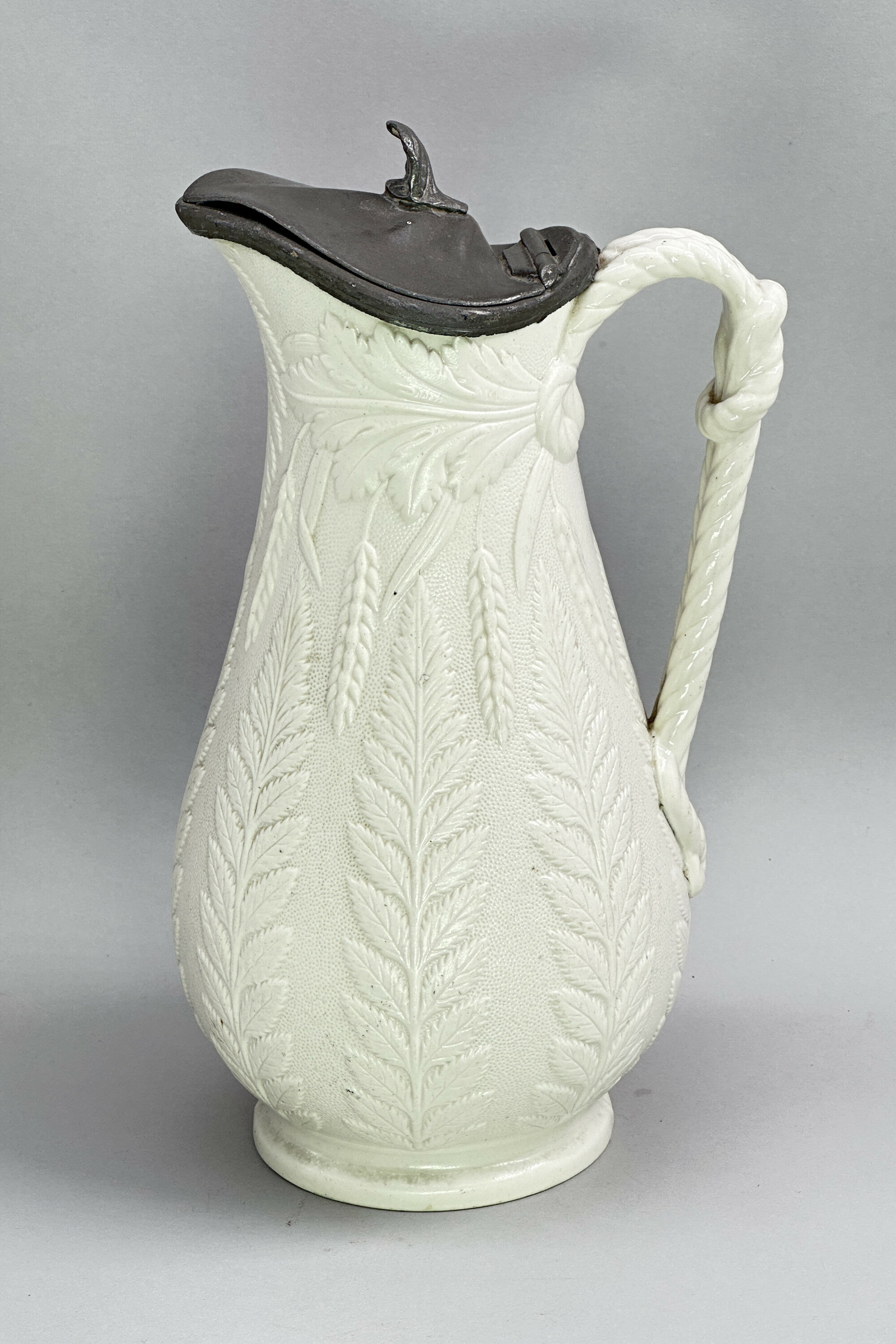
Antique English Staffordshire pitcher, William Brownfield and Sons, circa 1860.
Price: £55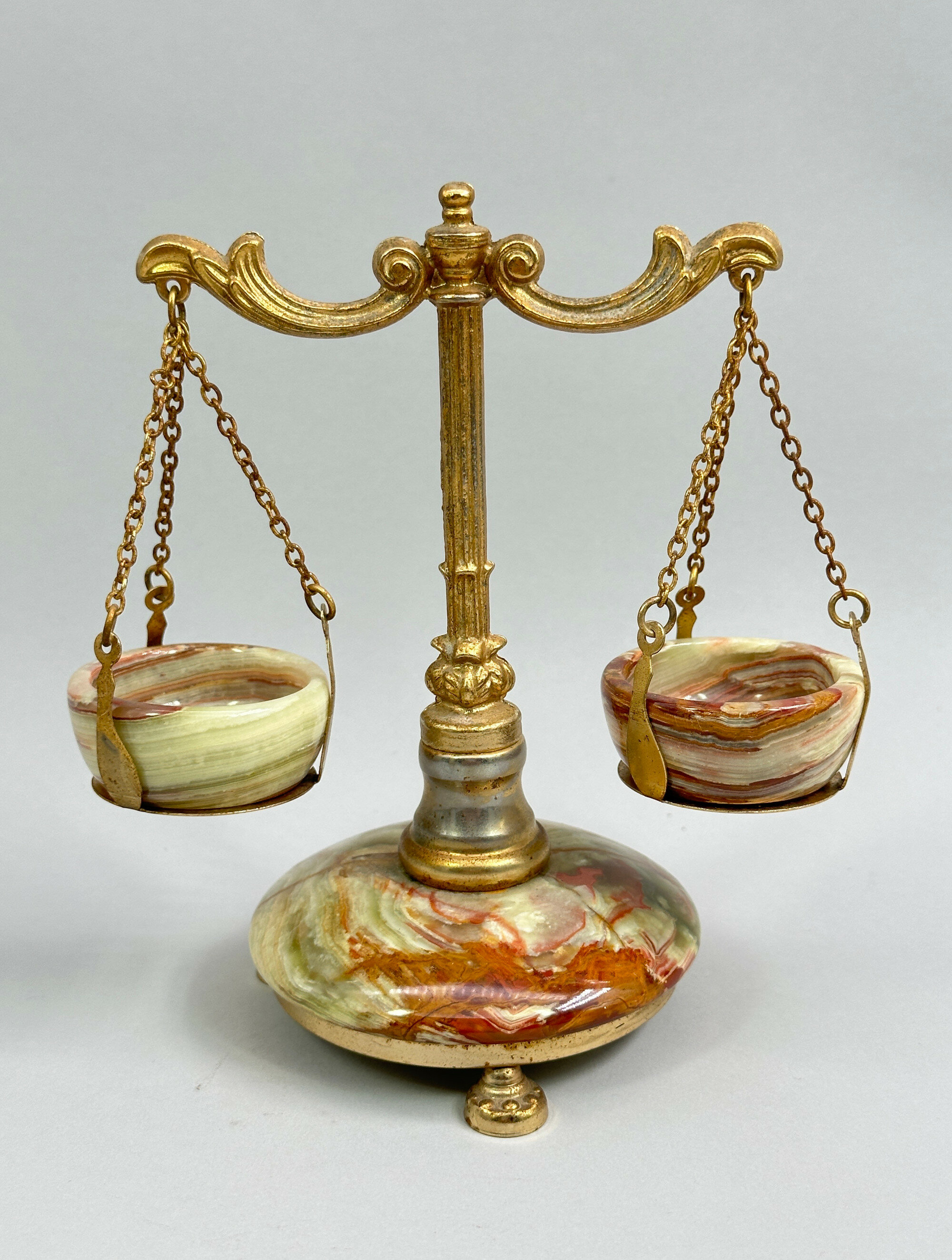
Pair of Gilt Metal and Onyx Scales, probably French, C20th
Price: £55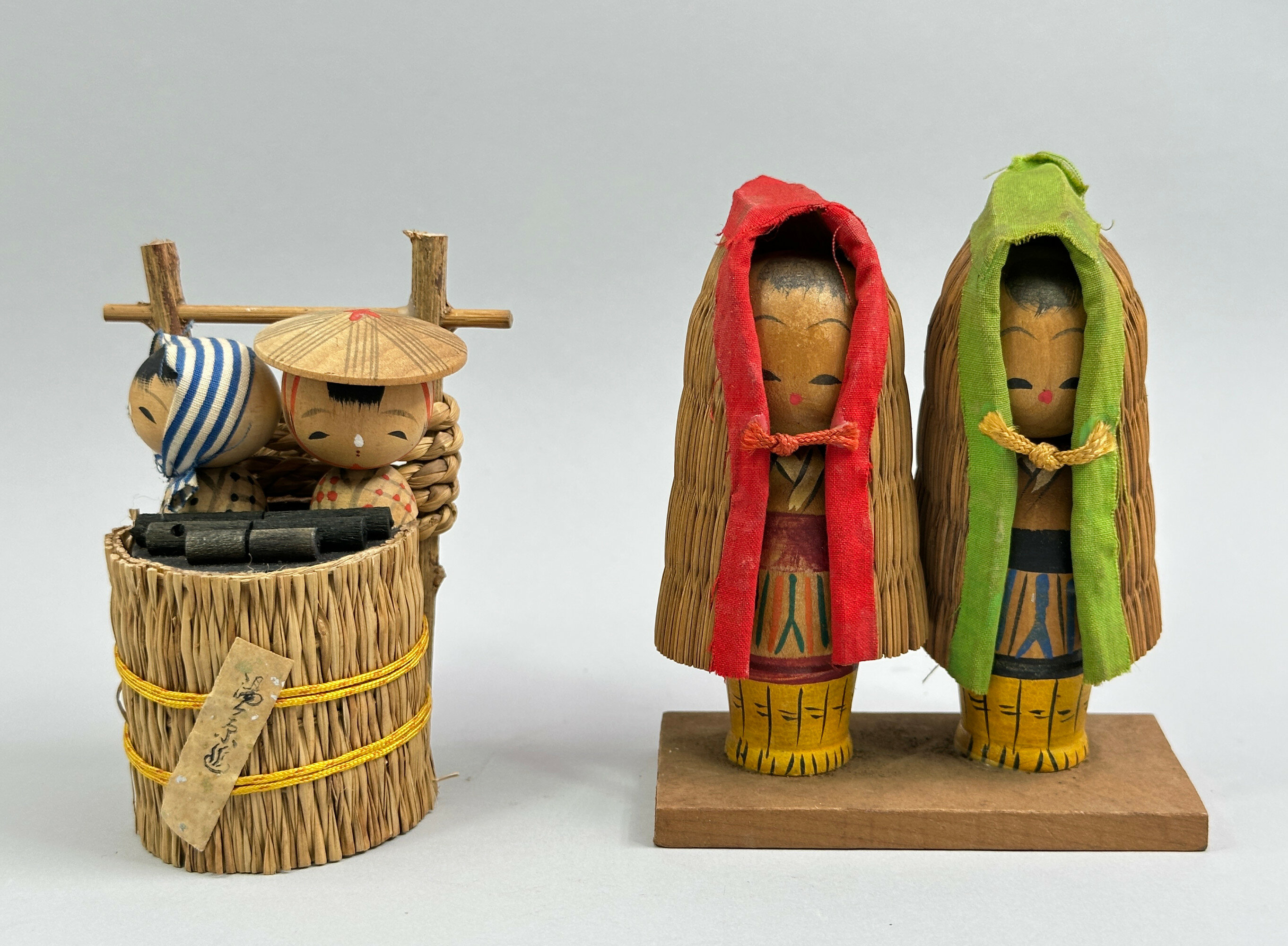
Two Vintage Japanese Kokeshi Doll Groups, C20th
Price: £25
Vintage hand carved Fossil Stone Trinket Box and Cover, C20th
Price: £25
A streaky dark grey/green and clear glass knobbly bowl, Whitefriars, 1960s/1970s
Estimate: £30 – 40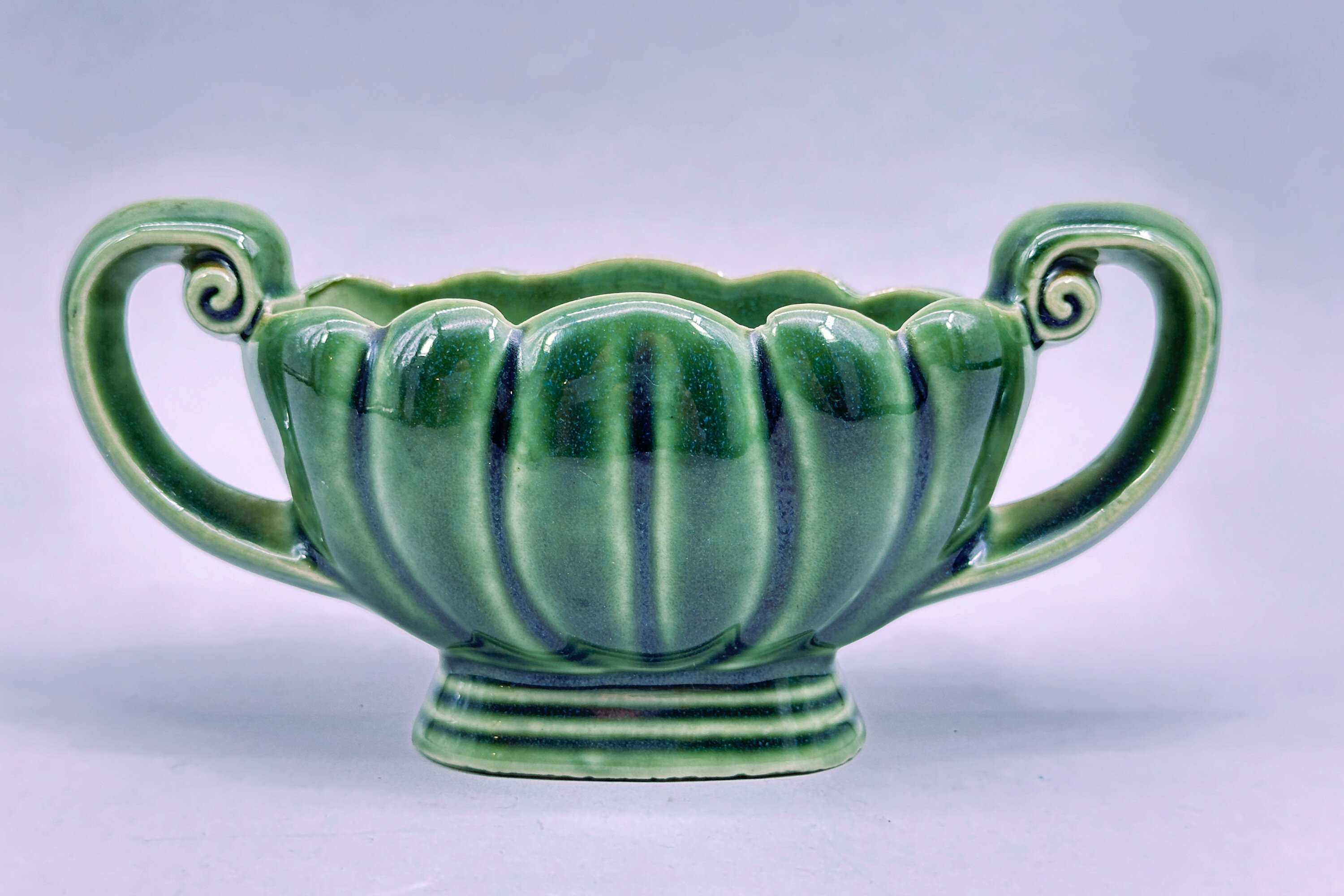
Wade green glazed Posy Vase, 1950s
Price: £20Wade Ceramics Ltd was a manufacturer of porcelain and earthenware, headquartered in Stoke-on-Trent, England. Founded in 1867, it was run by various members of the Wade family until the death of George Anthony Wade in 1987 after which there was a succession of management buyouts. Despite substantial investment in 2009, the firm eventually went into administration in 2022. Wade produced a wide variety of ceramics, including the well known Wade Whimsies animal figurines.
This vase was designed to hold a small bunch of flowers and was produced in a variety of sizes and colours, green being the most common. The form has an almost ‘neo classical’ feel but the piece dates to the 1950s when this particular format of the factory mark was used.
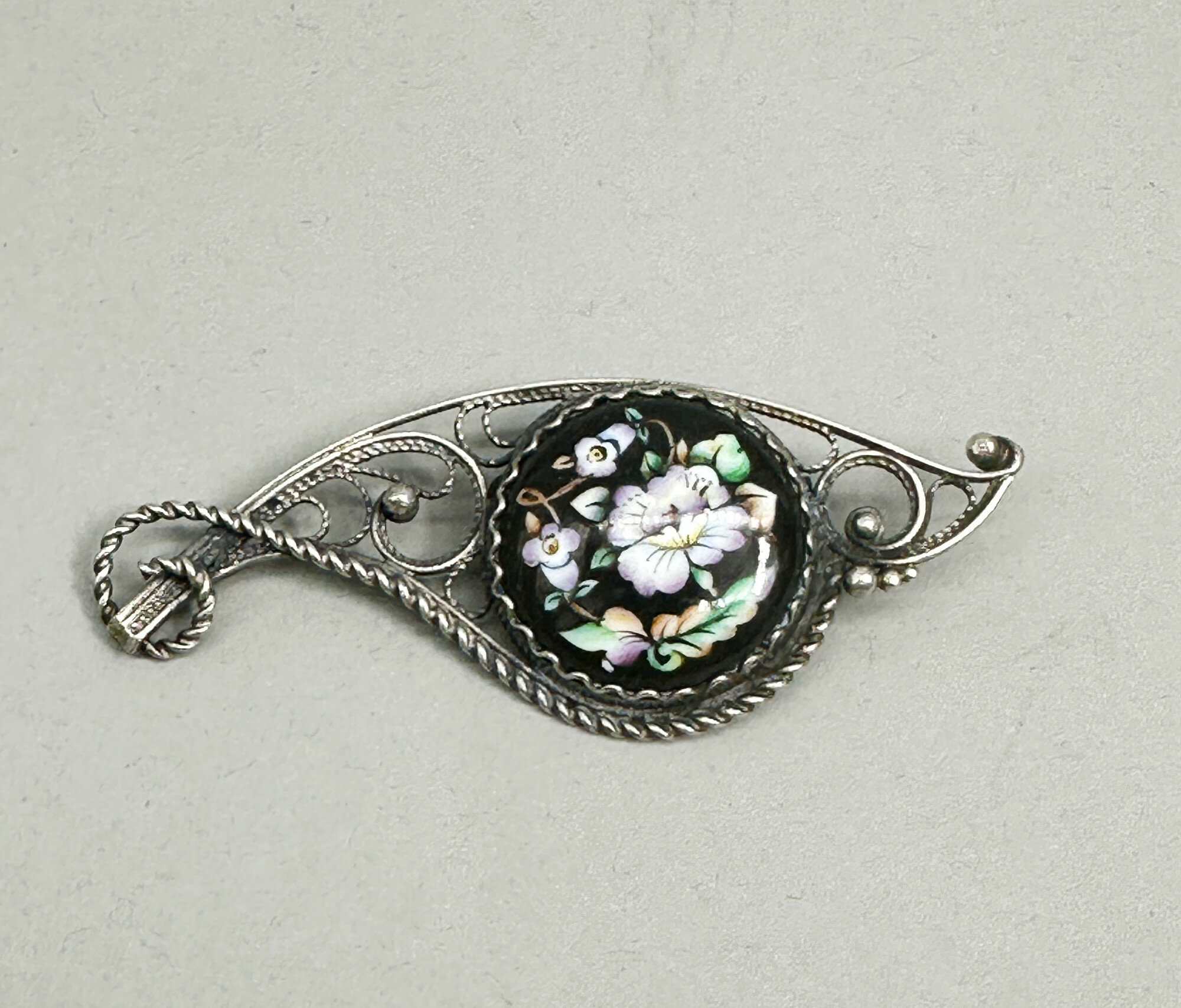
Russian Enamel Brooch, probably Rostov Finift, mid C20th
Price: £20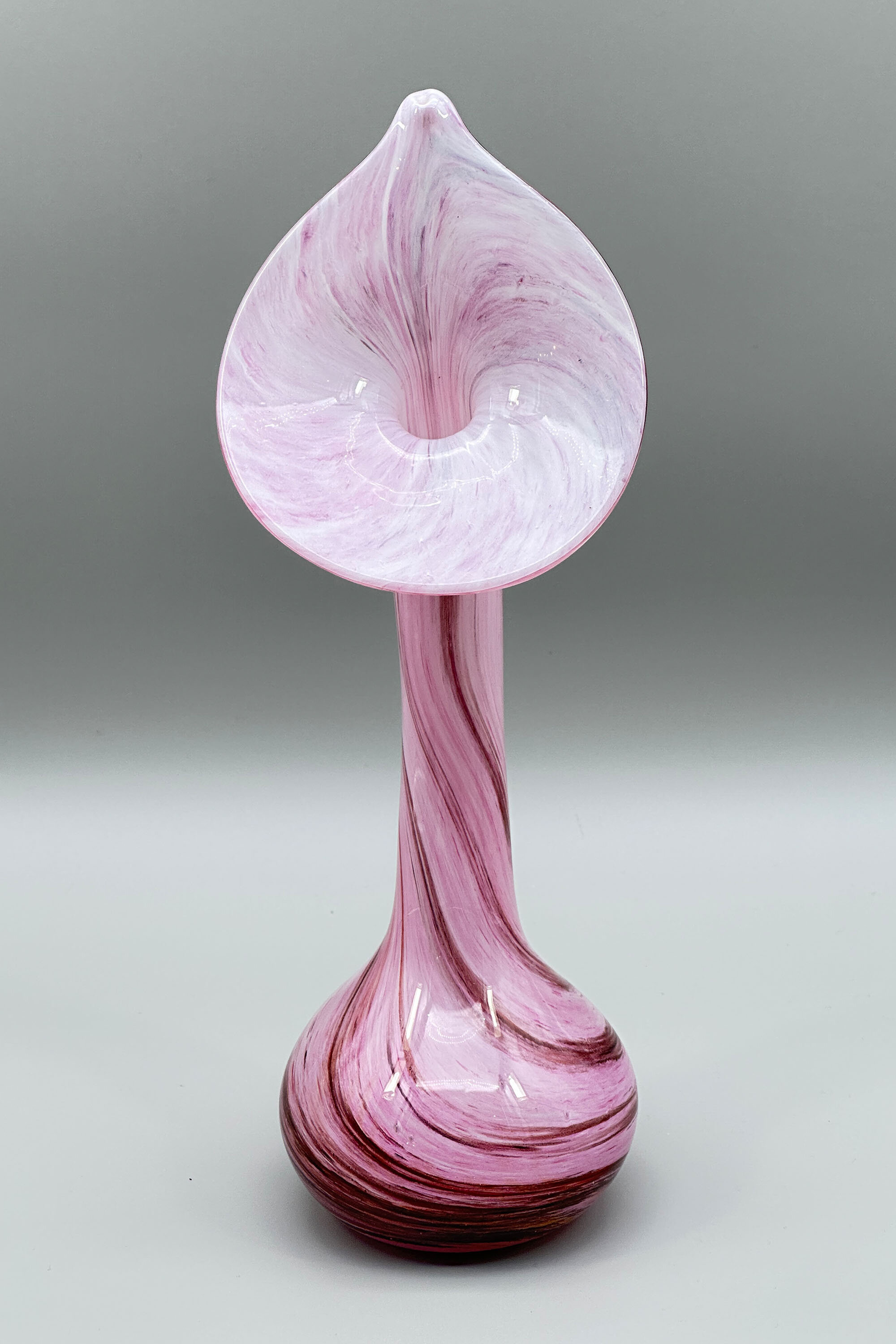
Jack in the Pulpit Vase, Alum Bay Glass, Isle of Wight, with label, late C20th
Estimate: £20 – 30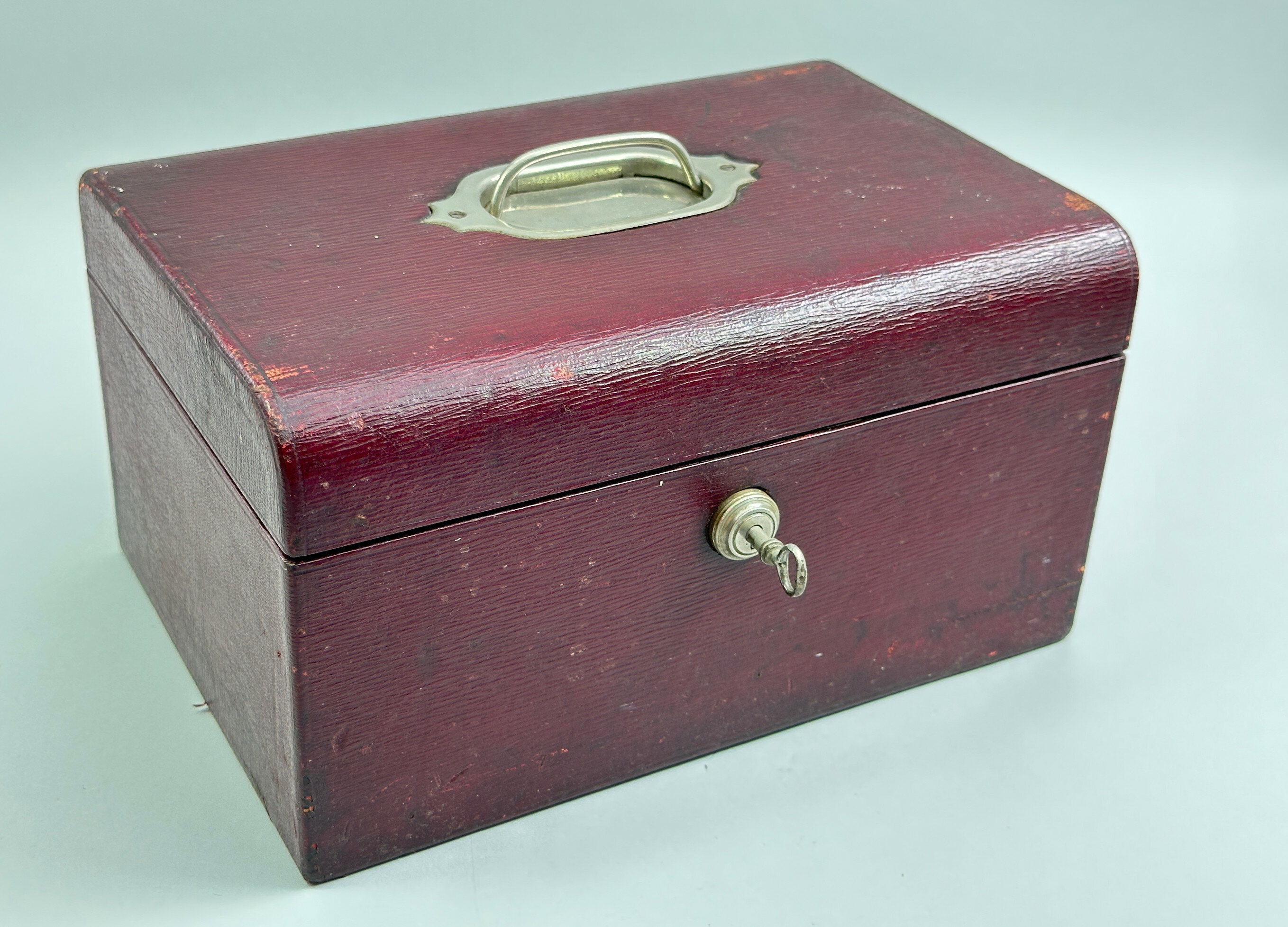
Burgundy Leather Jewellery Box with Bramah Lock, early C20th
Price: £95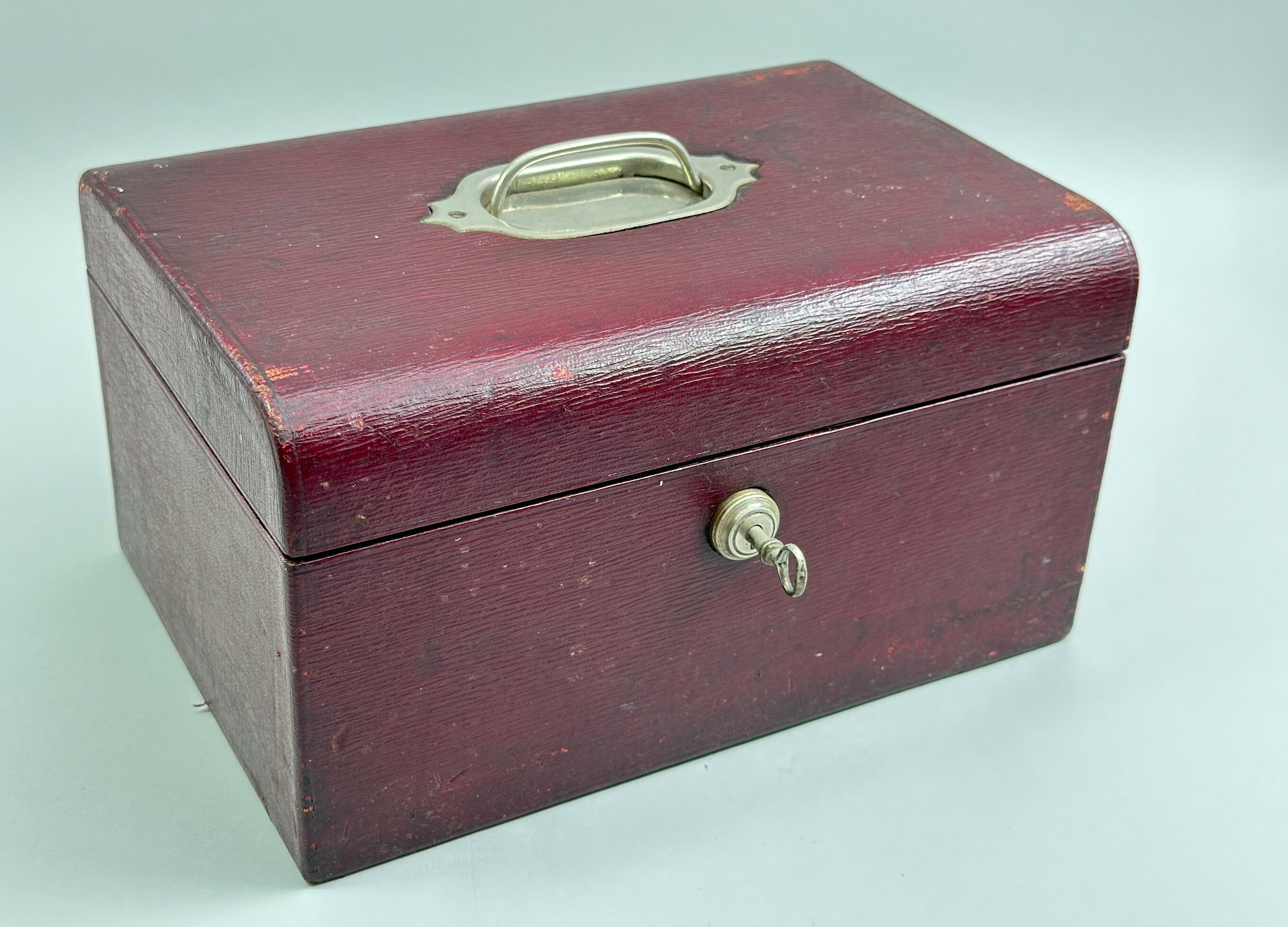
Burgundy Leather Jewellery Box with Bramah Lock, early C20th
Price: £95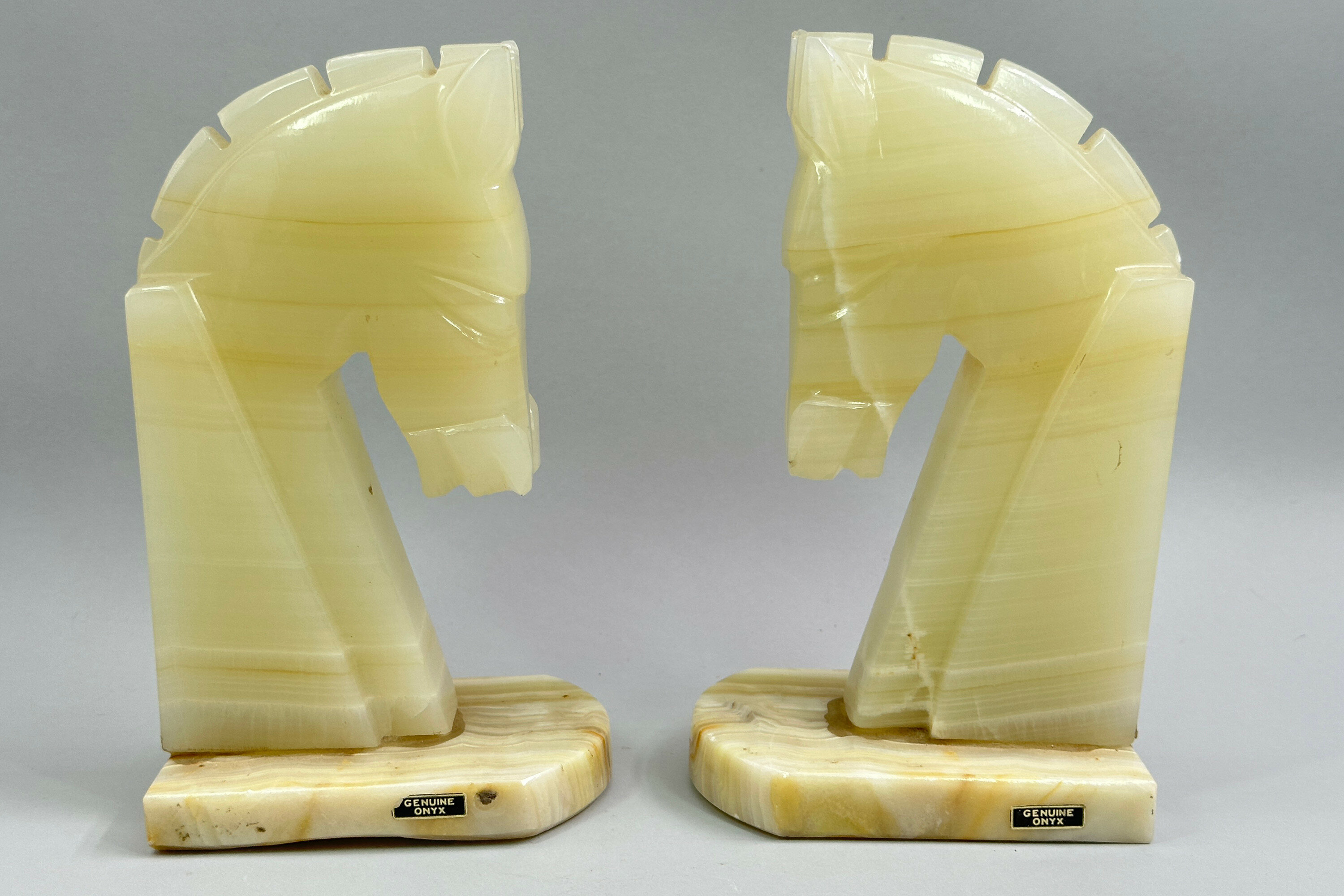
A pair of Art Deco style Onyx Bookends, C20th
Price: £35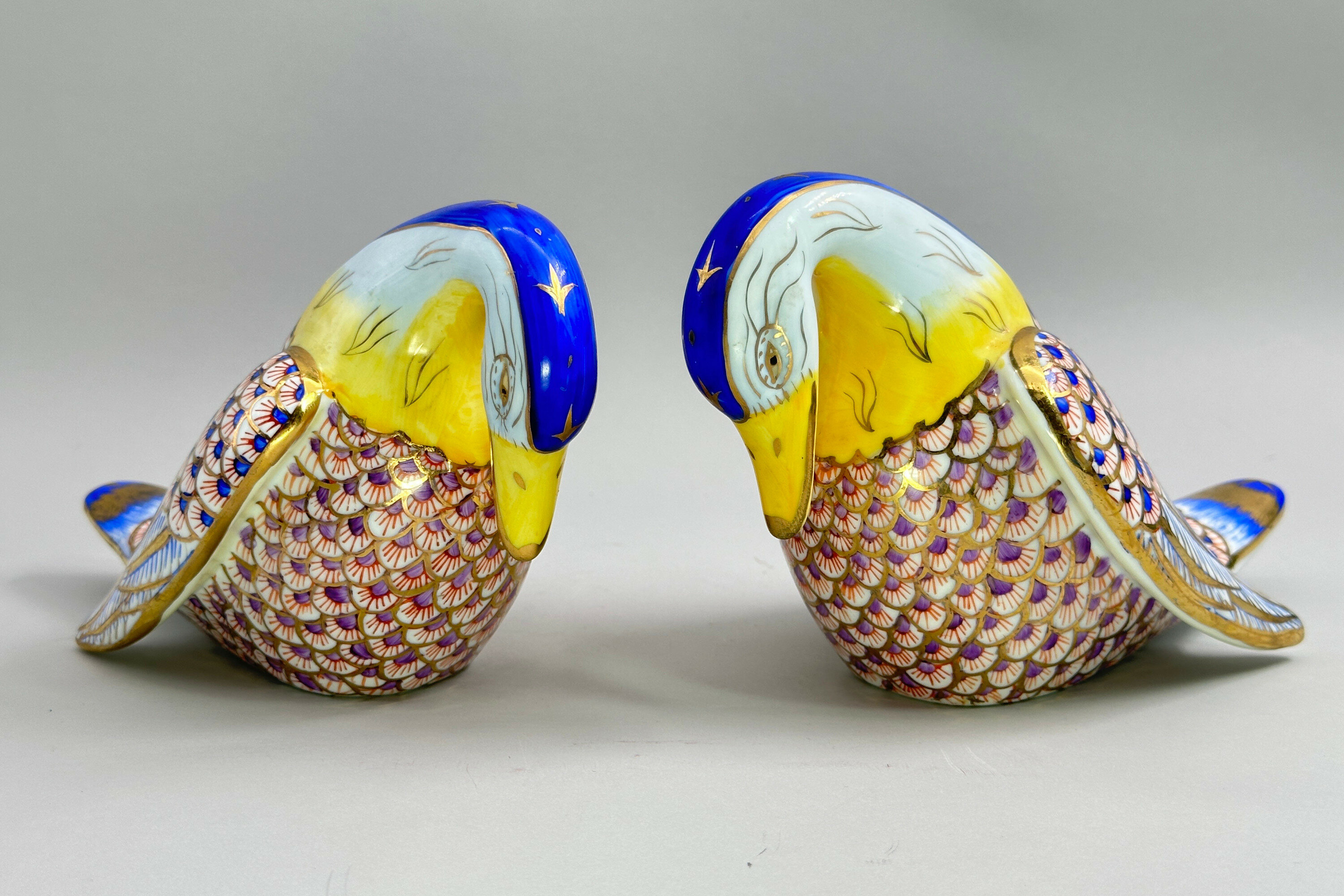
Pair of Ceramic Figures of Swans, probably continental, C20th
Price: £45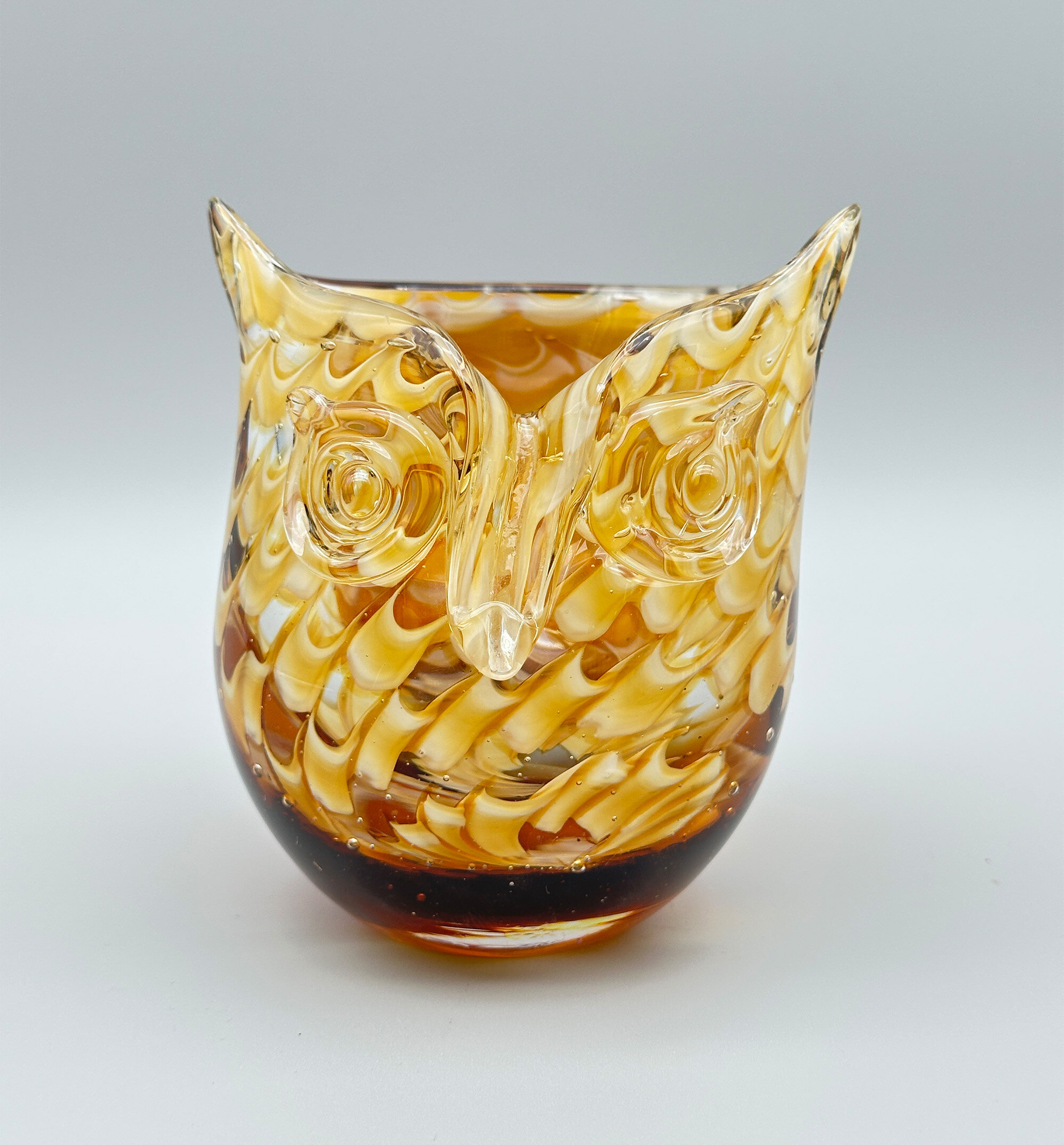
Owl glass Vase, Italian probably Murano, second half C20th
Estimate: £30 – 40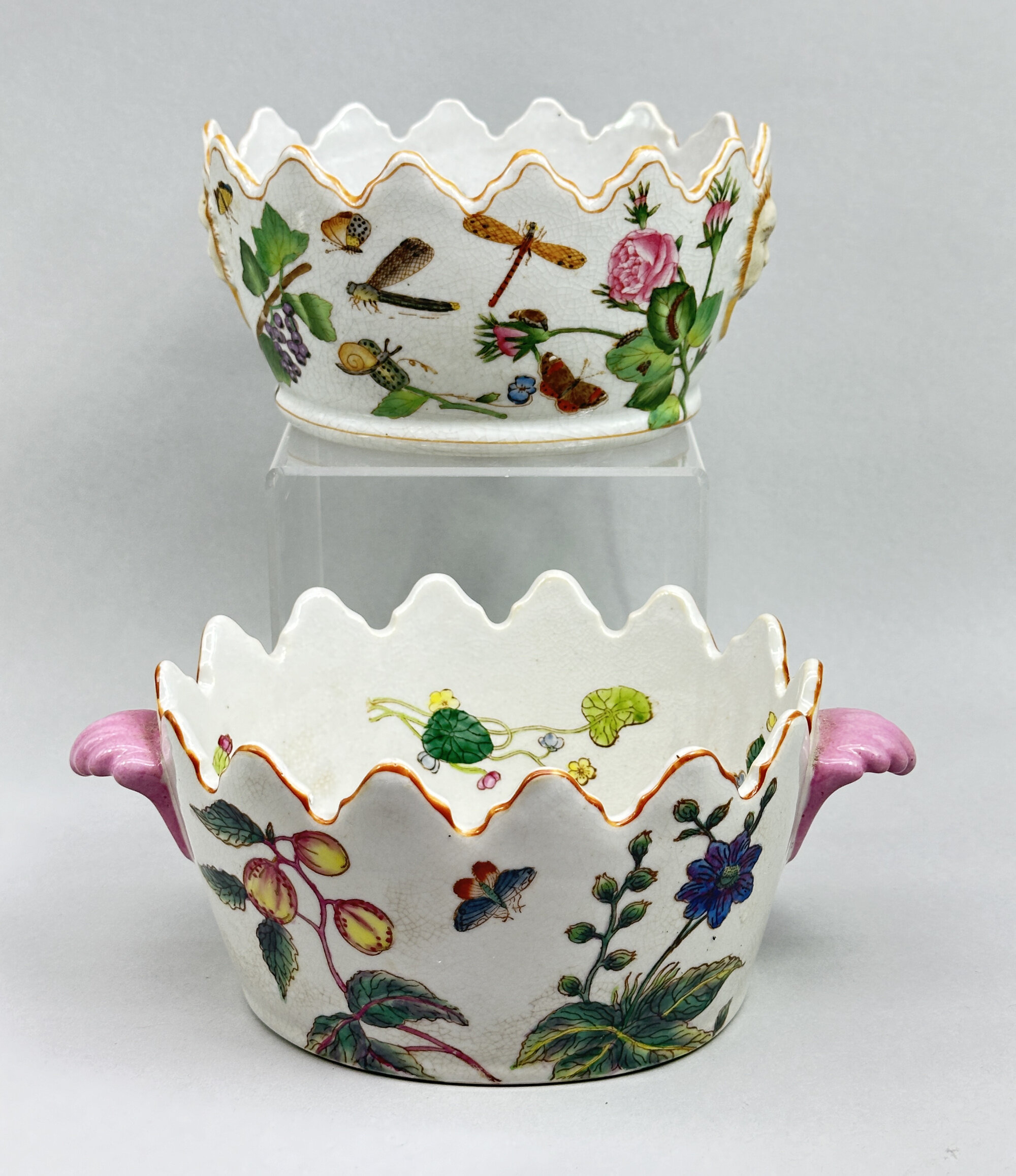
Two similar Chinese Export Style Monteith Form Jardinieres, C20th
Price: £75The form here is a miniature version of the Chinese ‘Monteith’ first produced in the early to mid eighteenth century. The wavy rim was designed to hold the stems of glasses which were stood to cool in iced water placed in the interior. The style of the decoration is in Chinese Export taste as well, but dating here is to the C20th probably around the 1960s. Some similar examples have Chinese seal marks and one the name of a Chinese manufacturer implying that these pieces were most likely made in China but this does not assist with establishing their age. Purely decorative objects then with no intent to deceive but amusing creations in themselves and pleasing to a contemporary eye.
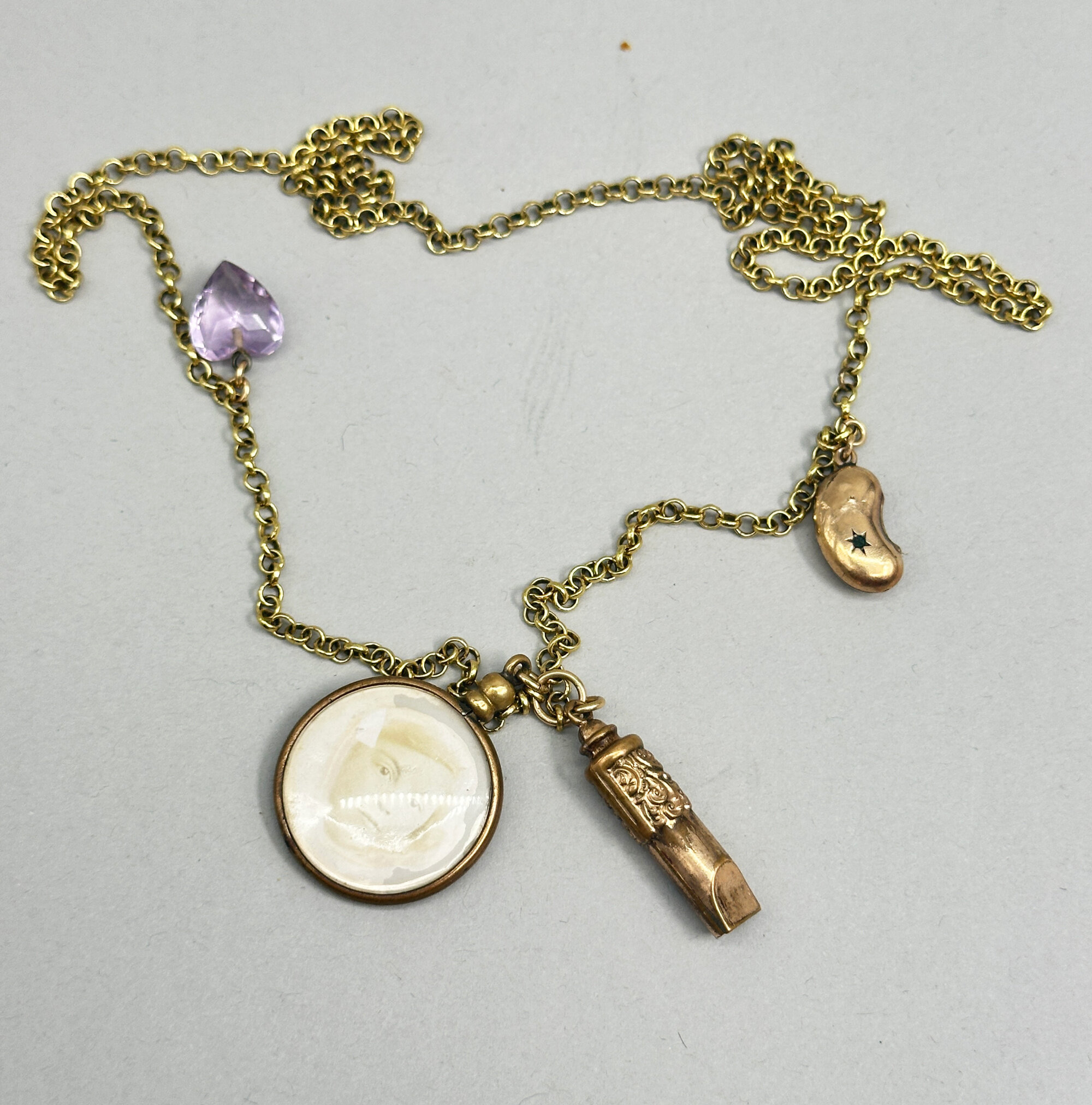
Victorian Rolled Gold Necklace with Pendants, late C19th
Price: £45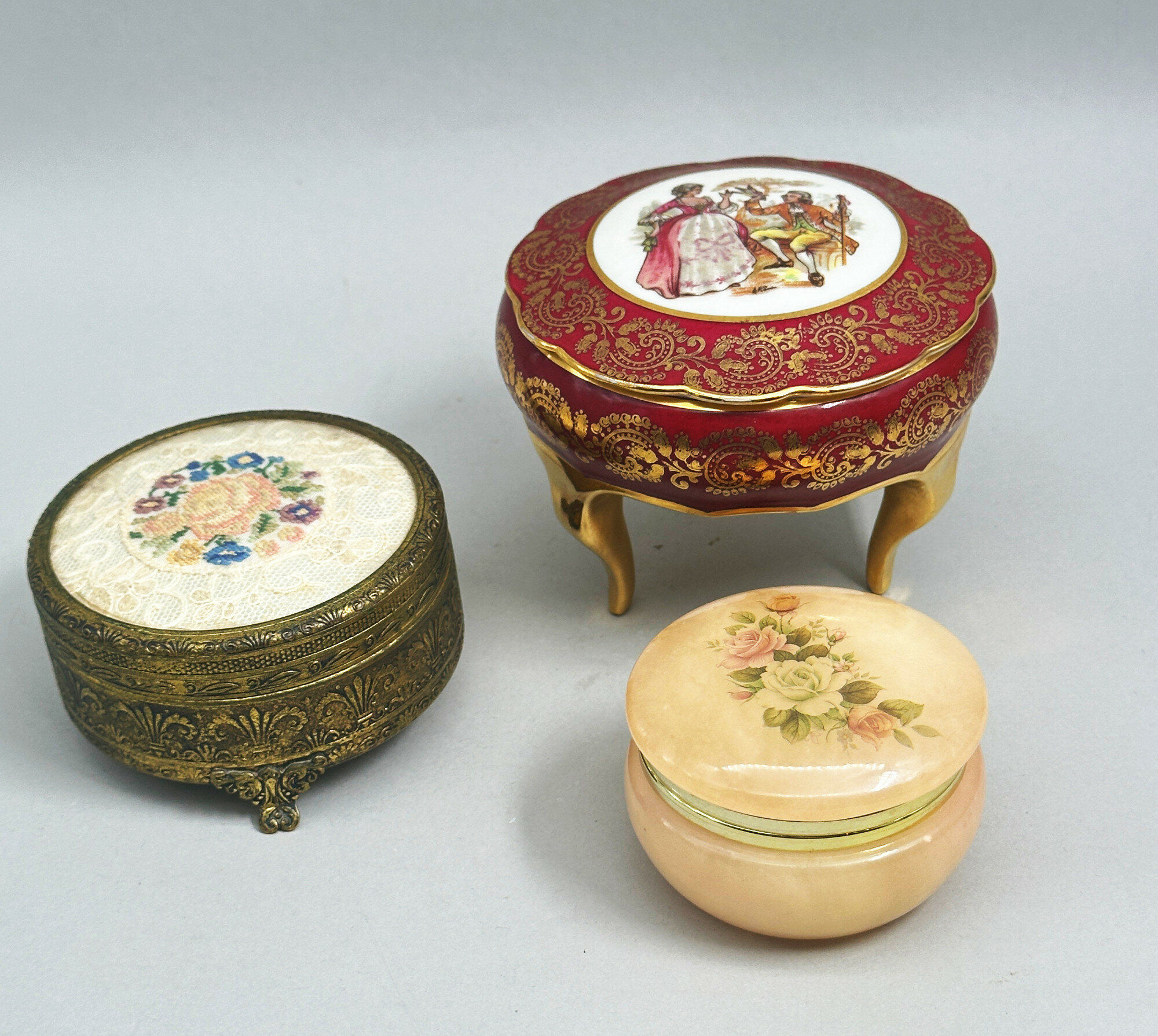
Three Powder Boxes, gilt metal, alabaster and porcelain, mid C20th
Price: £45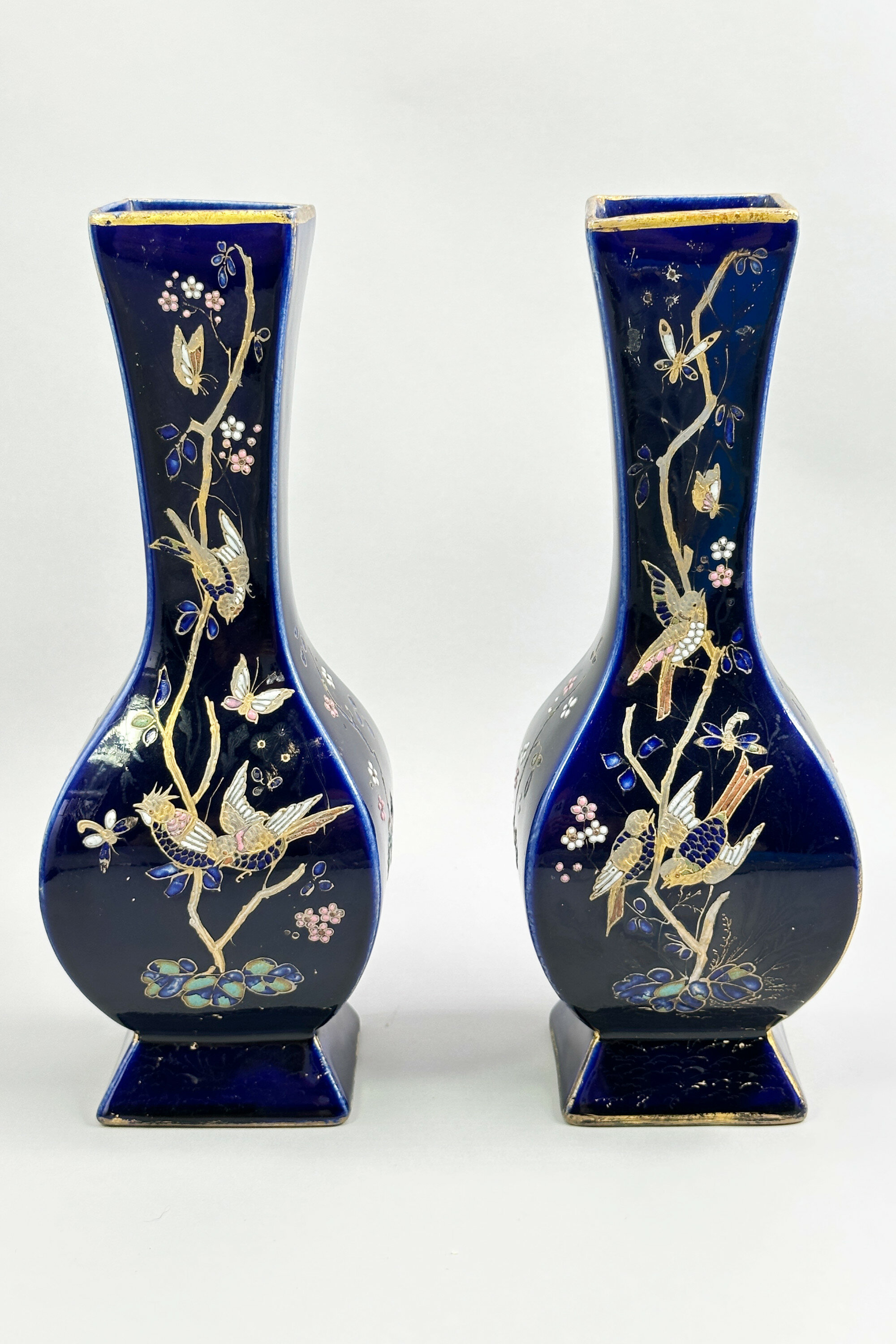
Pair of French Blue Ground Square Vases Choisy Le Roi, late C19th
Price: £45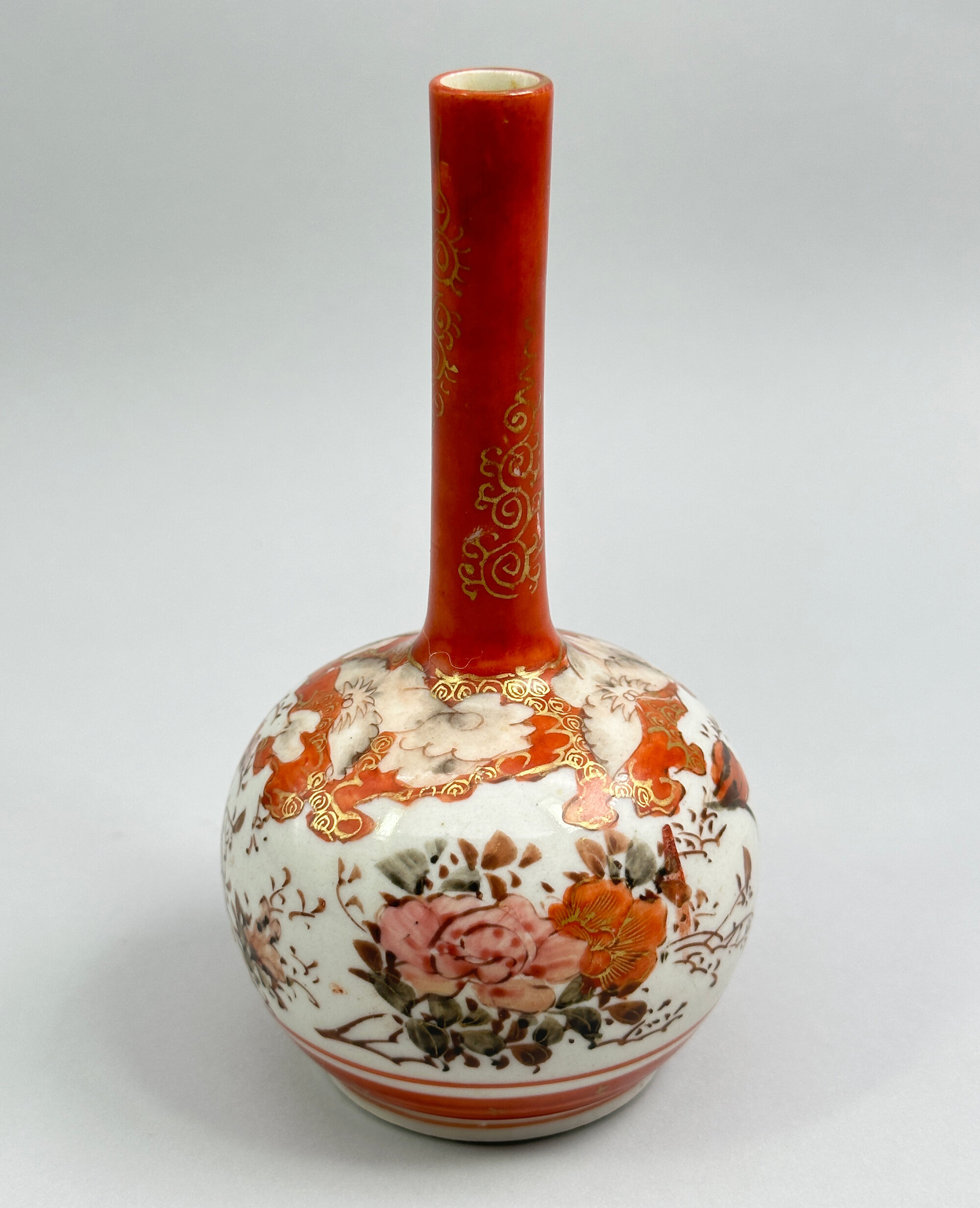
Japanese Kutani Vase of Water Dropper form, circa 1880
Price: £45Kutani (the word means 'nine valleys') porcelain was made at various factories in the former Kaga province of Japan. The earliest pieces were in a completely different style employing a palette of colours emphasising green, the so called 'Ko Kutani'. Production of this ceased around 1730, and manufacturing was not revived until the early nineteenth century when the more familiar colourings of iron red and gold were introduced. This small vase is typical of pieces exported to the West in fairly large quantities at the end of the nineteenth century. The form suggests a water dropper and is found in Imari colourings as well. Many of the Kutani pieces were marked, sometimes simply 'Ku' 'Tani' as here. The glaze was sometimes unstable with a tendency to craze as can be seen here, but this is original to the manufacture and does not detract from the piece's decorative appeal.
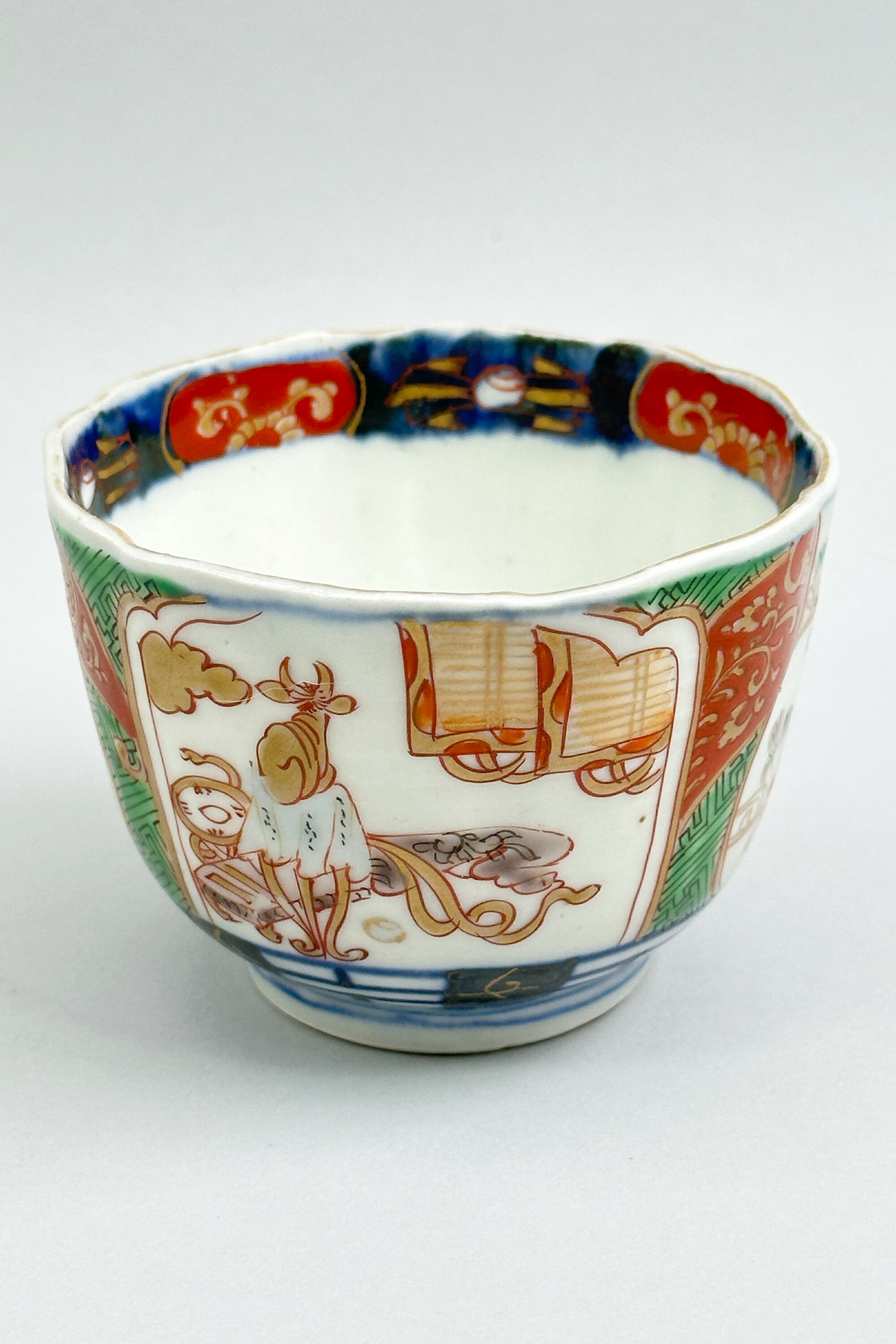
Japanese Arita Bowl decorated with panels of flowers and interior Scenes, circa 1820
Price: £45The rather more elaborate style of decoration here and the addition of enamel colours to the standard imari palette of underglaze blue, iron red and gold resembles 'kenjo imari' pieces produced in Japan in the eighteenth century and in the early nineteenth century, a specific type of Imari that was highly decorated and meant for domestic consumption, Kenjo, meaning 'for presentation'. The paste of the foot, harder and smoother than that used in the later nineteenth century, suggests a dating here to around 1820 before trade with the West was temporarily paused. The form suggests a cup for Sake and this piece was probably one of an original set of five, but it stands on its own as a decorative item in miniature.
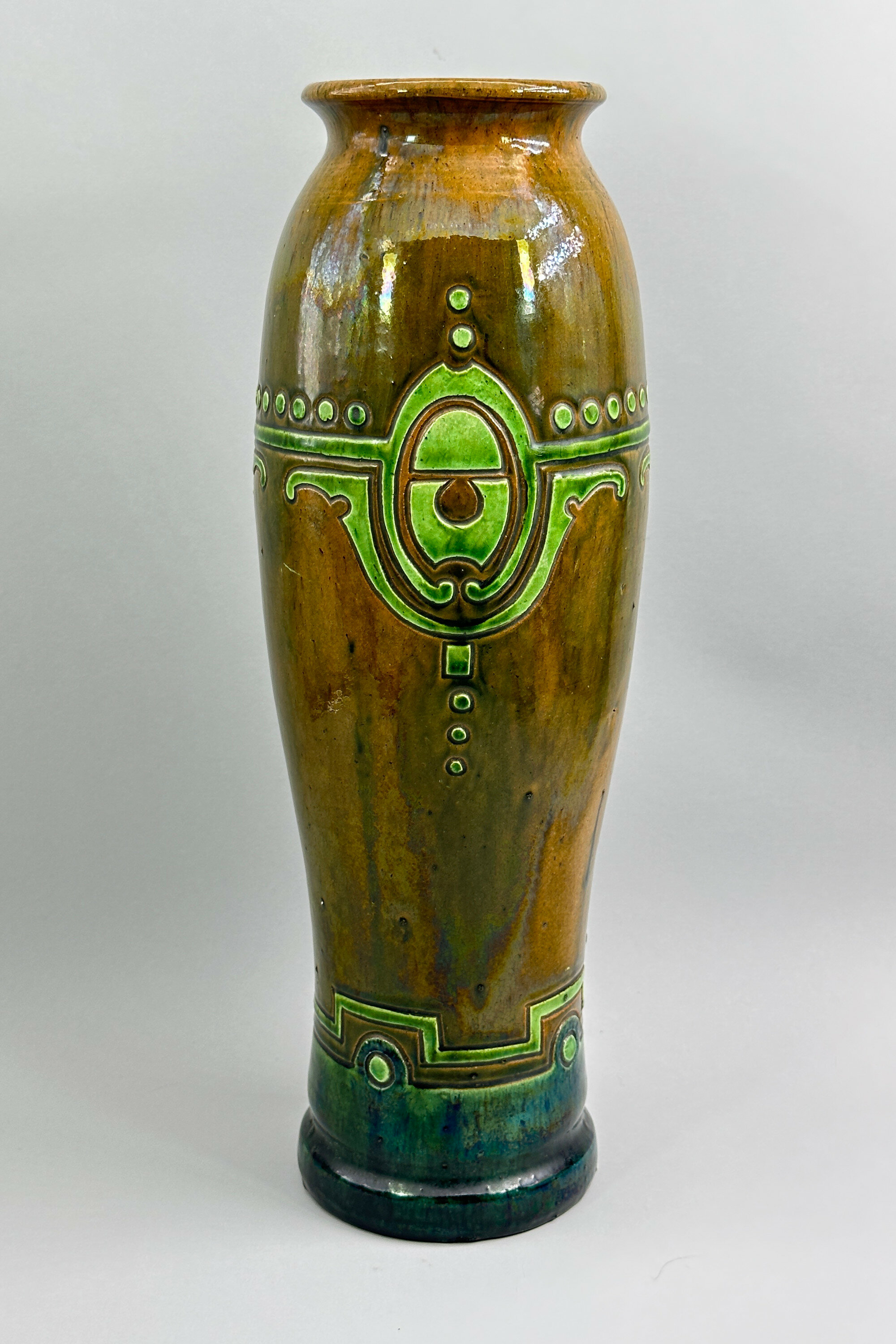
Art Pottery Vase with Geometric Motifs, C20th
Price: £55The style of decoration suggests Art Nouveau designs but there are no obvious parallels. Continental manufacture seems likely, perhaps France or Germany.
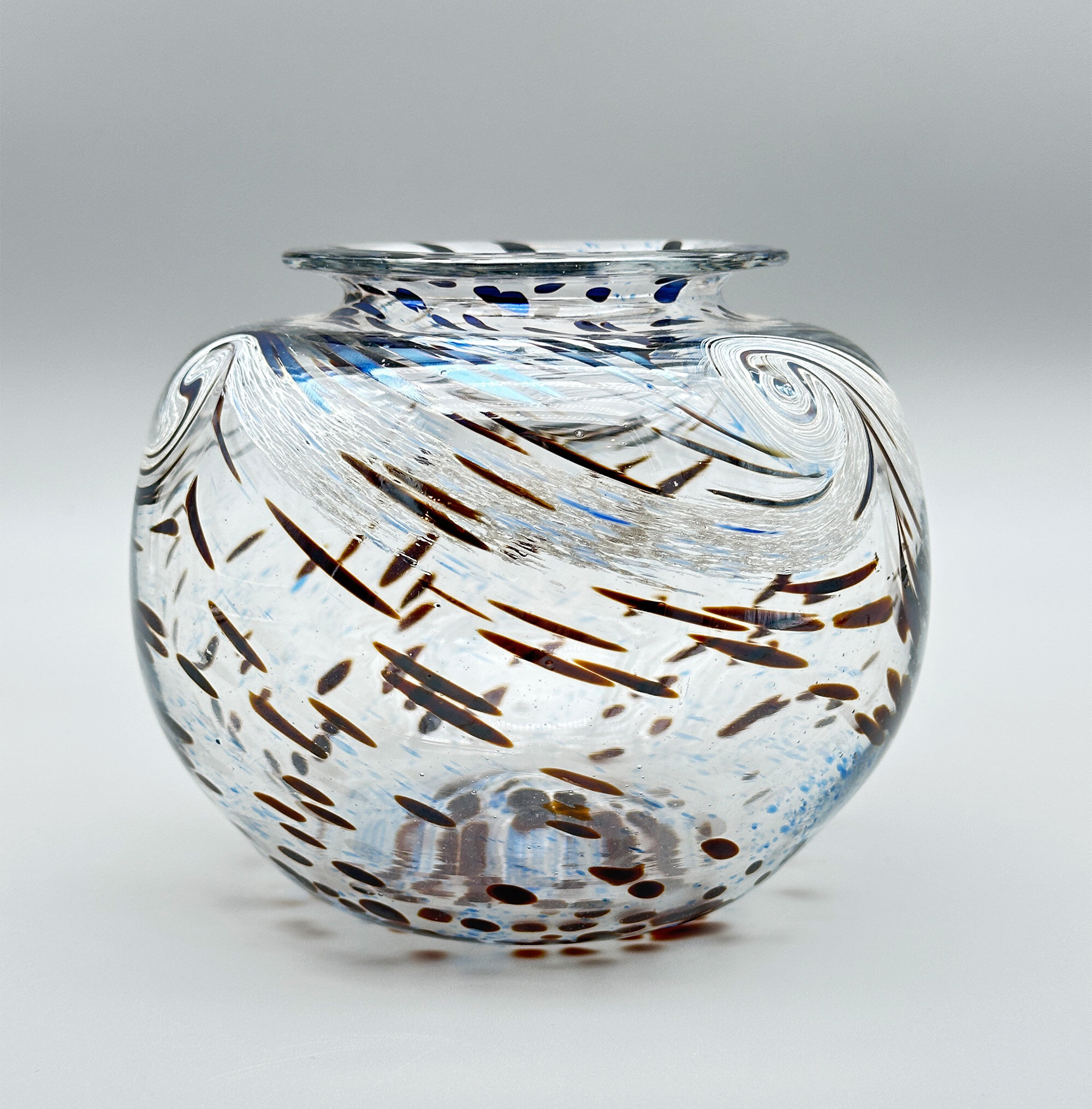
Globular art glass Vase with trailing swirls, signed and dated 1994
Estimate: £30 – 40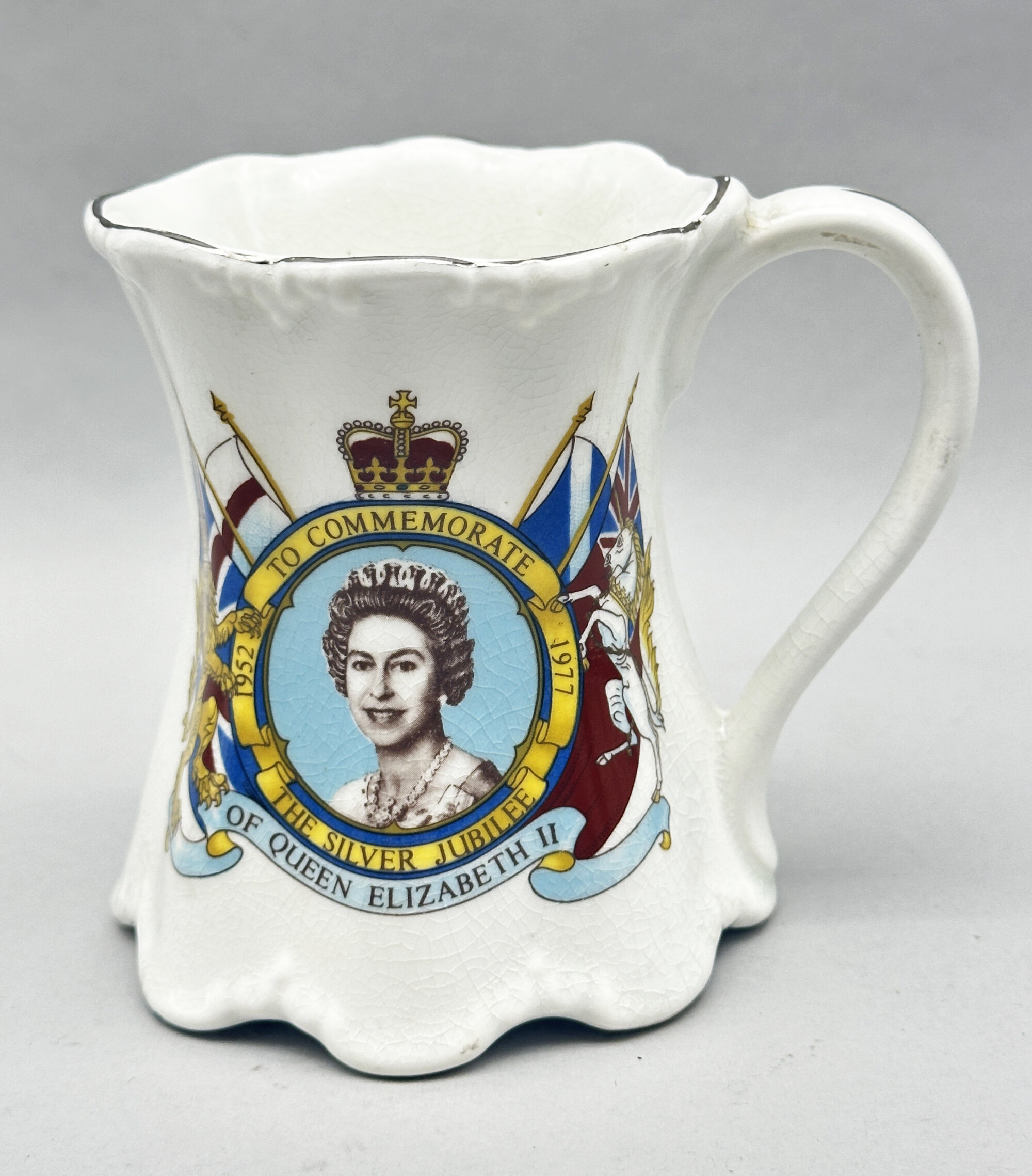
Queen Elizabeth II Silver Jubilee China Mug, 1977
Price: £10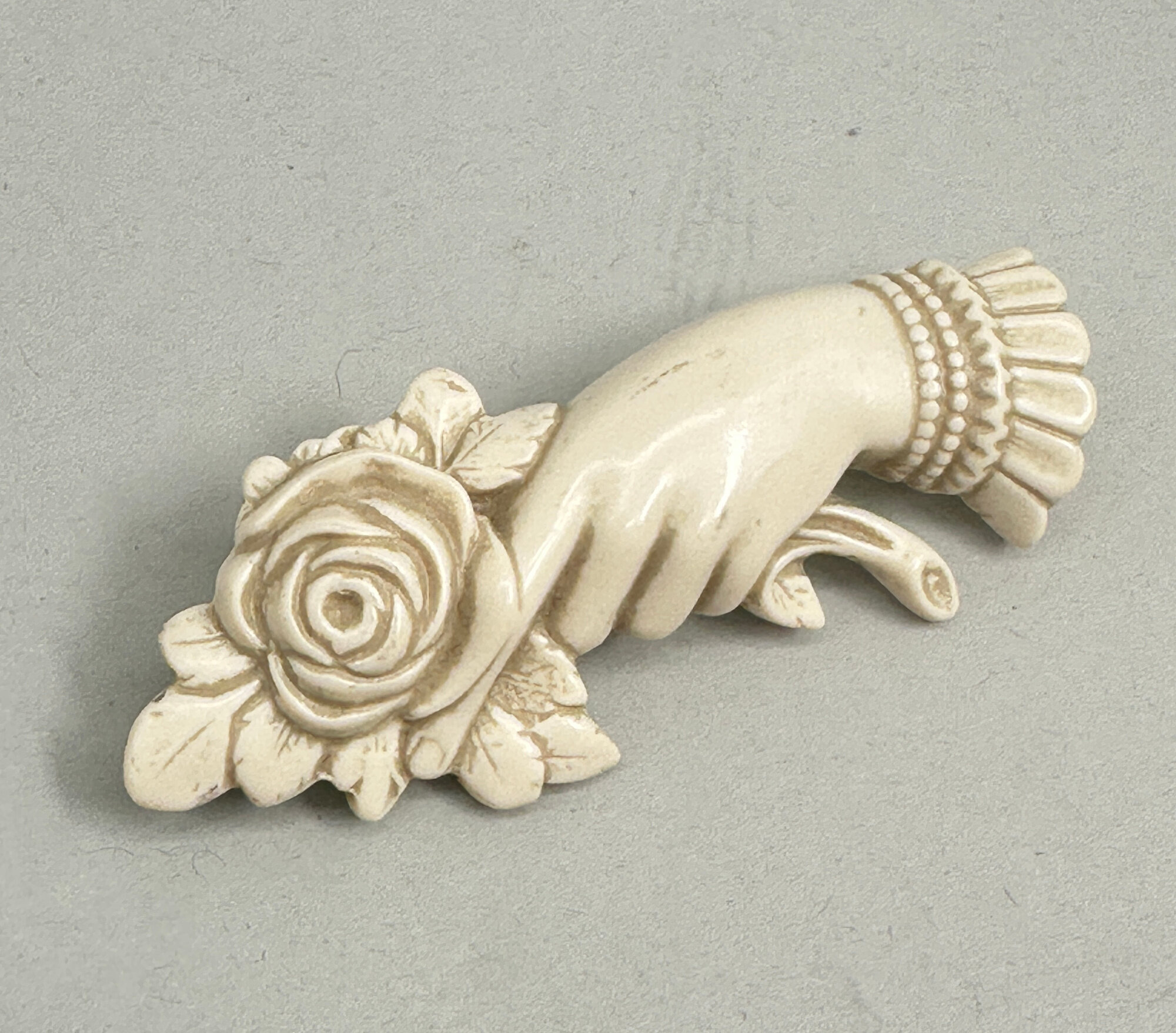
Bakelite Ivorine Mourning Brooch, British c1930
Price: £25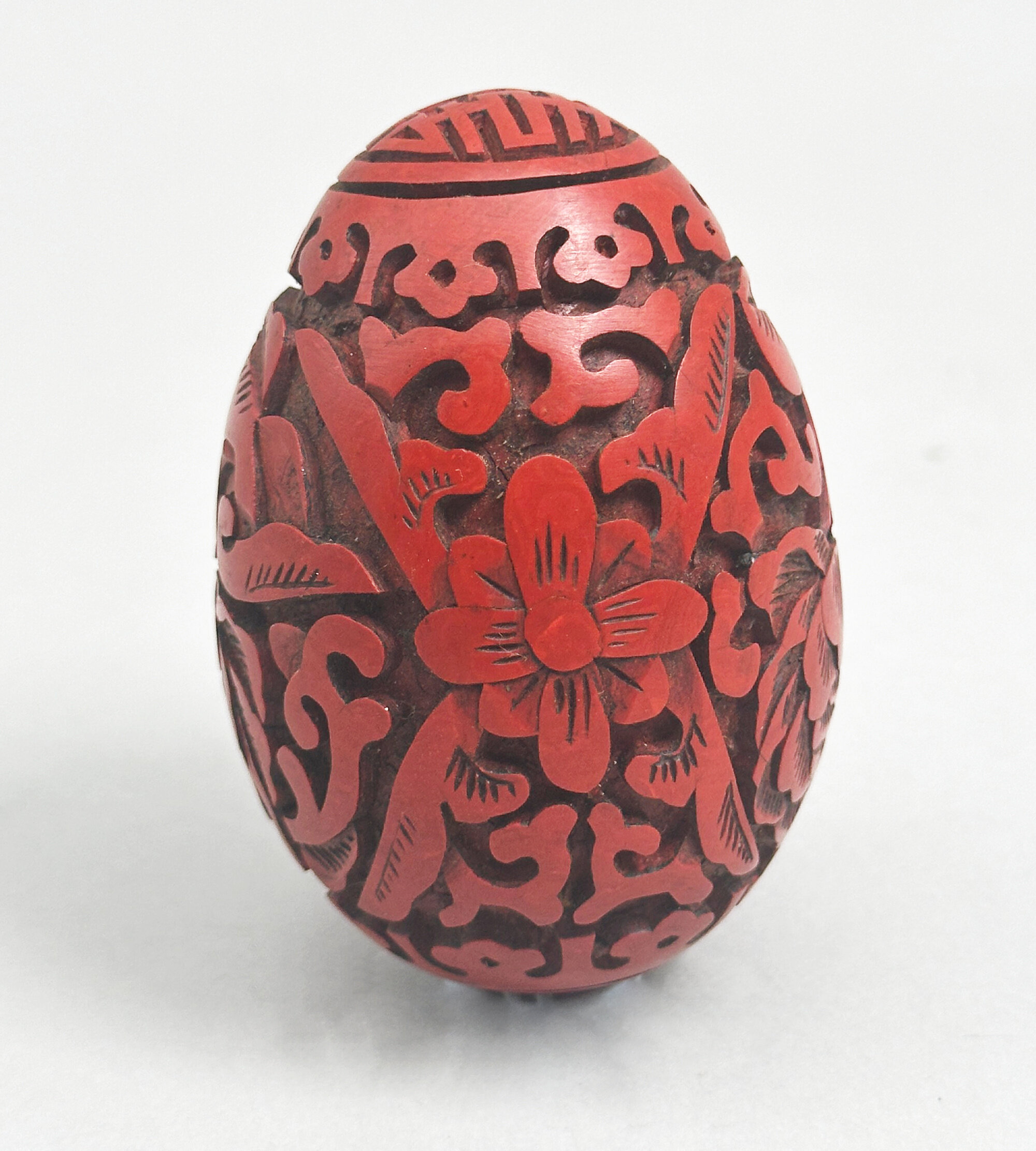
Chinese Cinnabar Lacquer Egg, C20th
Price: £55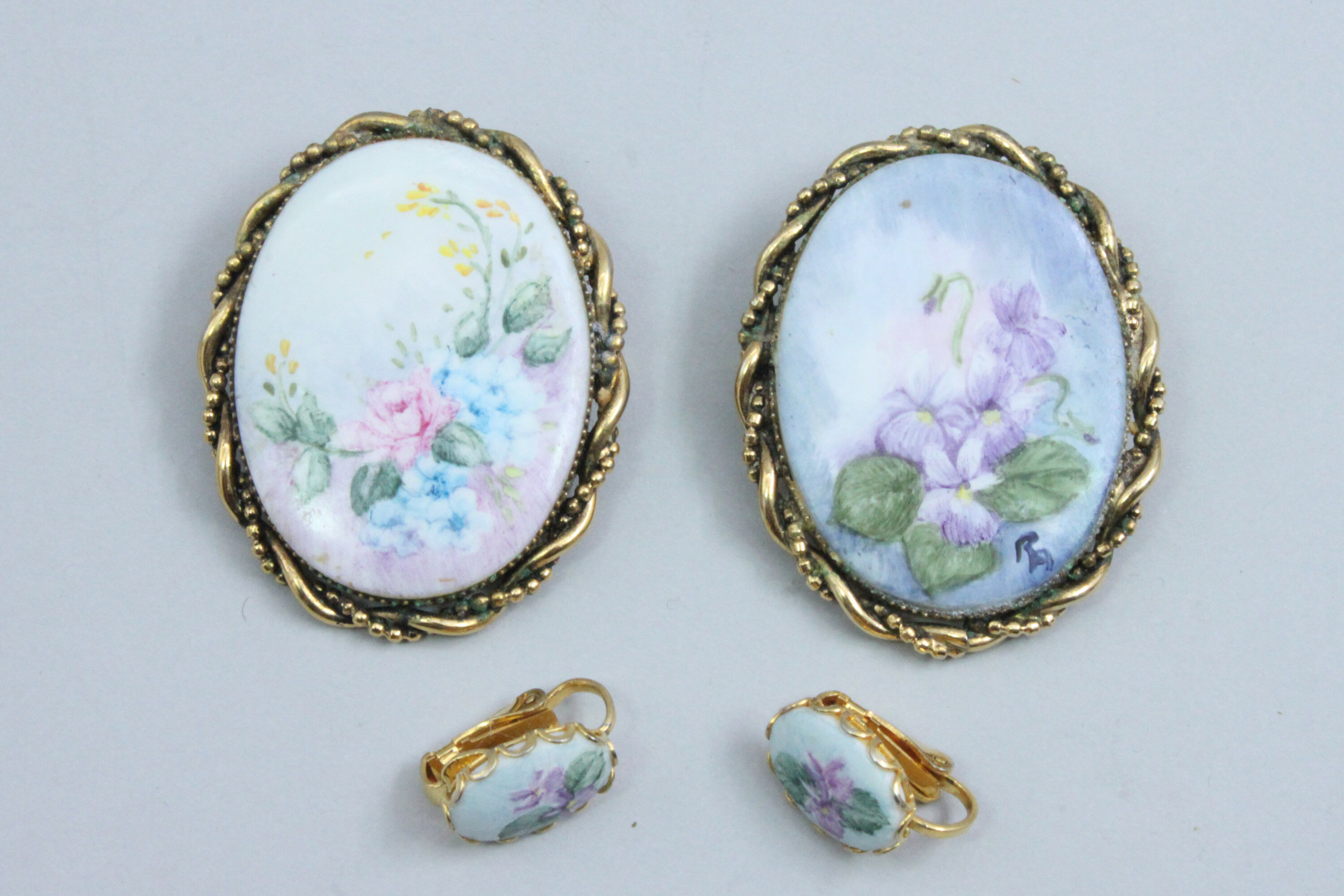
Fun group of two porcelain brooches with paid of small earrings 1960s
Price: £15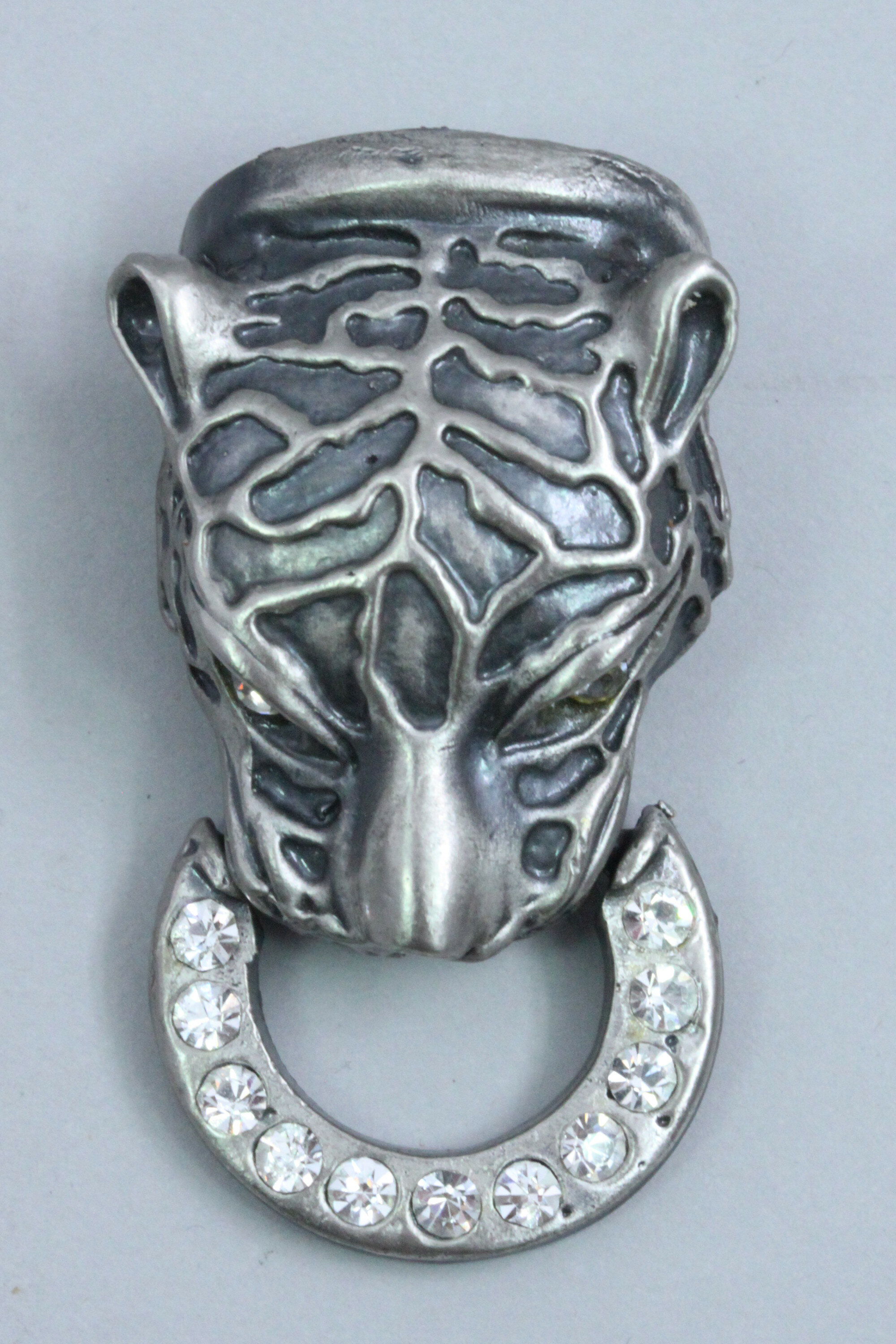
Celtic Style Pewter Brooch in the form of a Panthers Head, C20th
Price: £10PLEASE NOTE THAT THERE IS FREE UK SHIPPING ON THIS ITEM. For international buyers the shipping cost will be reduced by the UK shipping cost, so don't worry if you are outside the UK, you still receive this benefit!
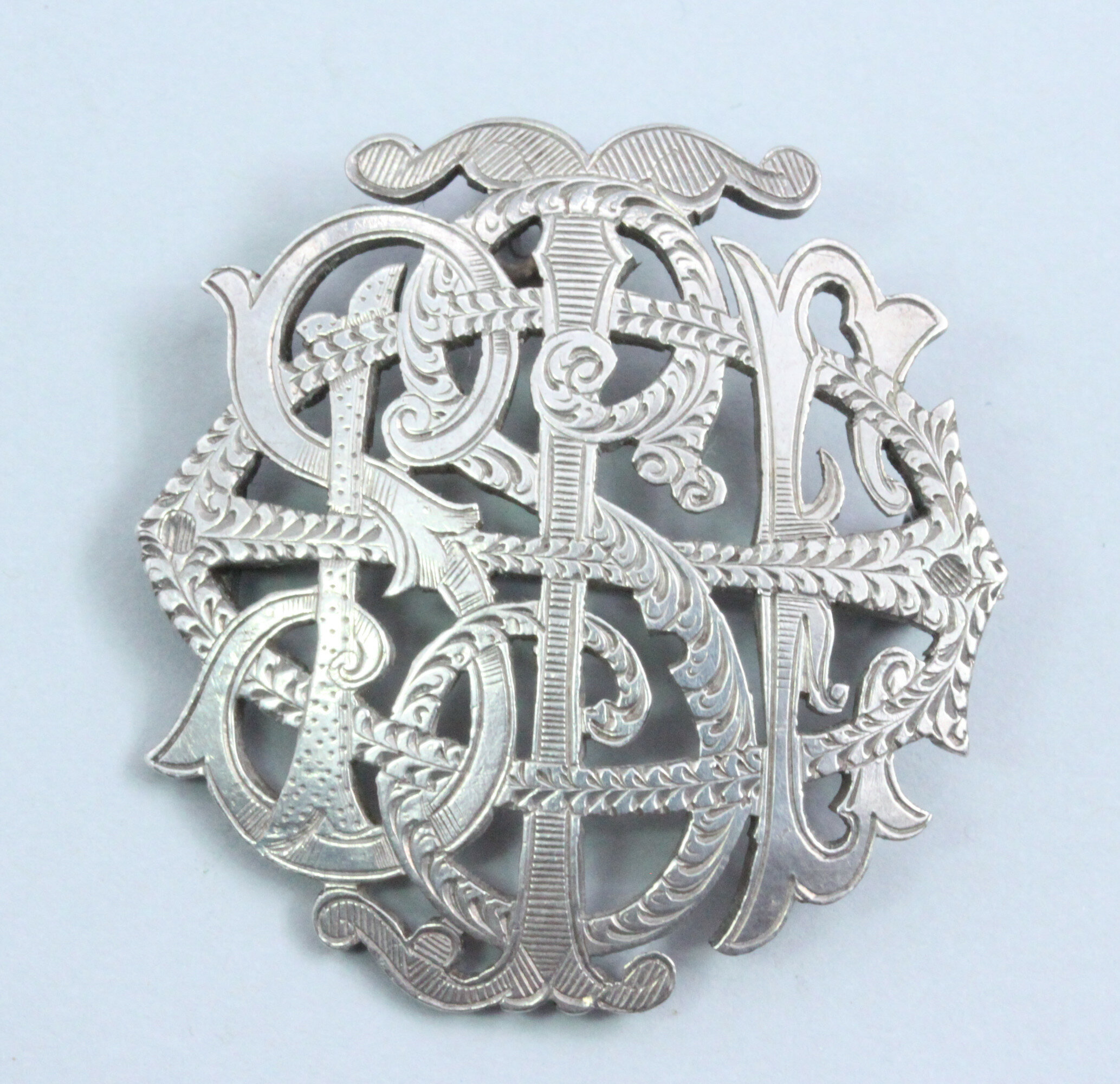
Silver Monogram Celtic Style Brooch Hallmarked 1878/1879
Price: £45An advert for Edwin Umfreville appeared in 'The Bazaar, The Exchange and Mart - 19th April 1879' where one of his pieces is described. "Like all the “ E. U." jewellery that we have seen, the workmanship is first-class, and the design most tasteful."
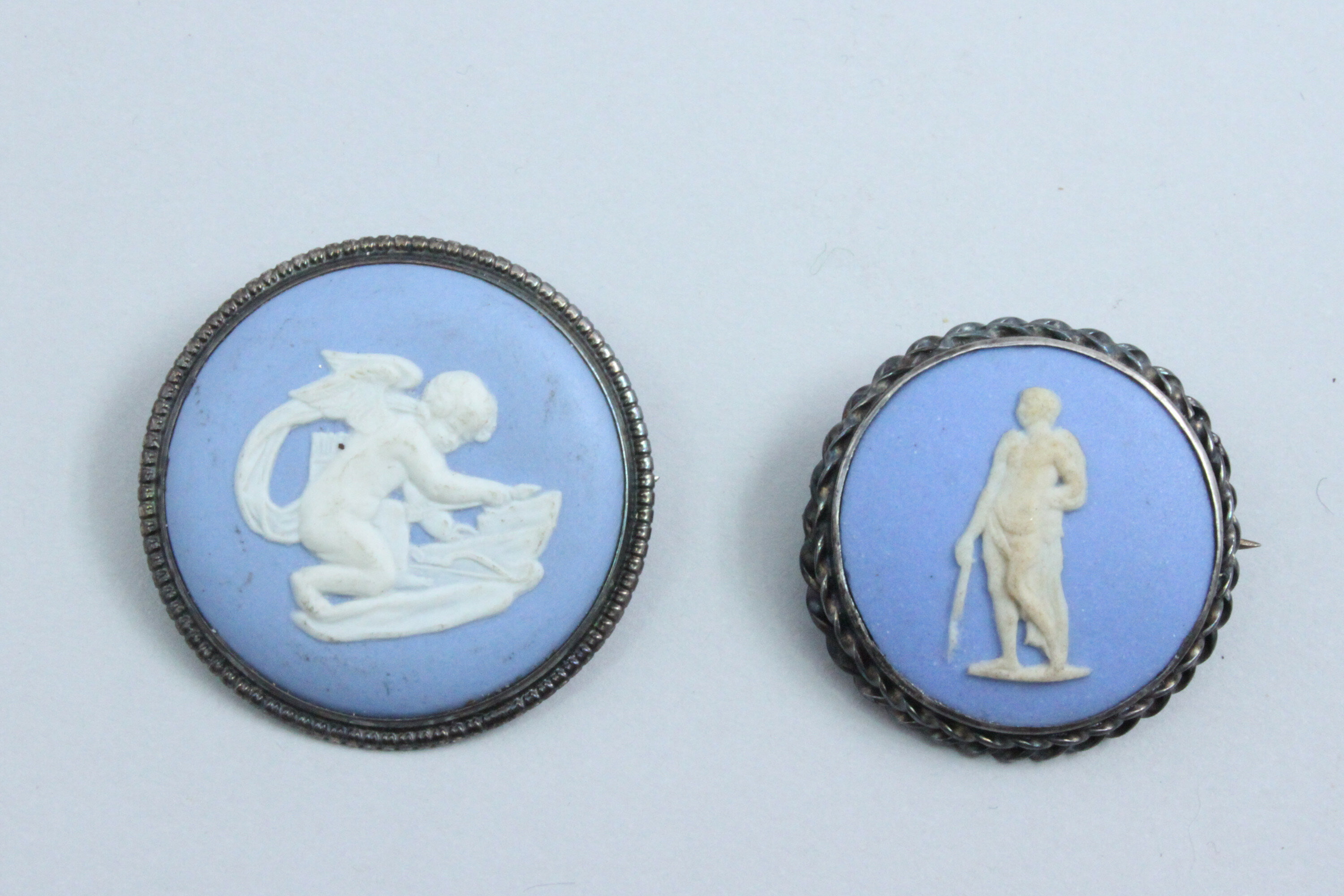
Two mounted Wedgwood blue jasperware Cameo Brooches, C19th, C20th
Price: £10PLEASE NOTE THAT THERE IS FREE UK SHIPPING ON THIS ITEM. For international buyers the shipping cost will be reduced by the UK shipping cost, so don't worry if you are outside the UK, you still receive this benefit!
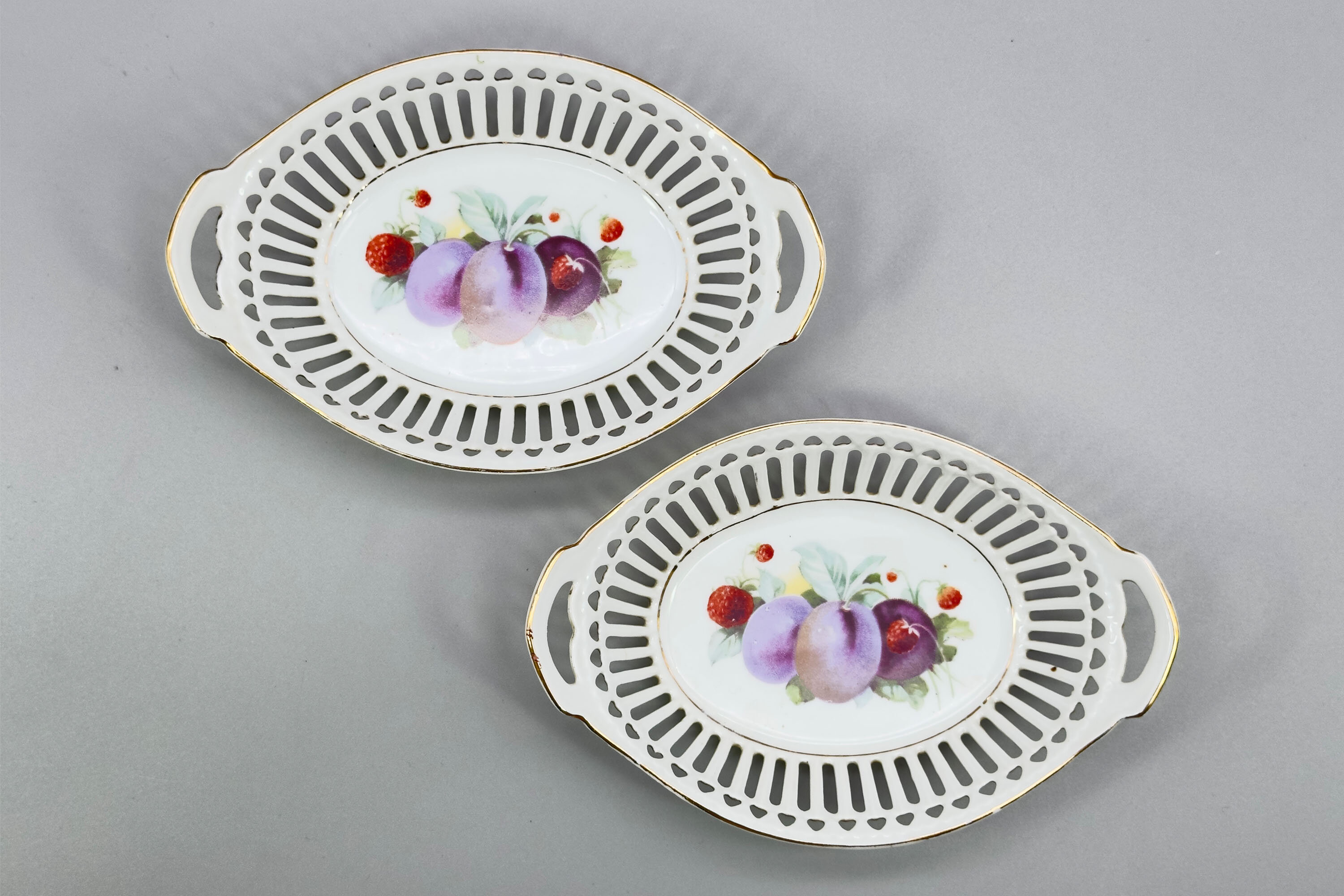
Pair of continental style openwork border Dishes, probably Chinese C20th
Price: £20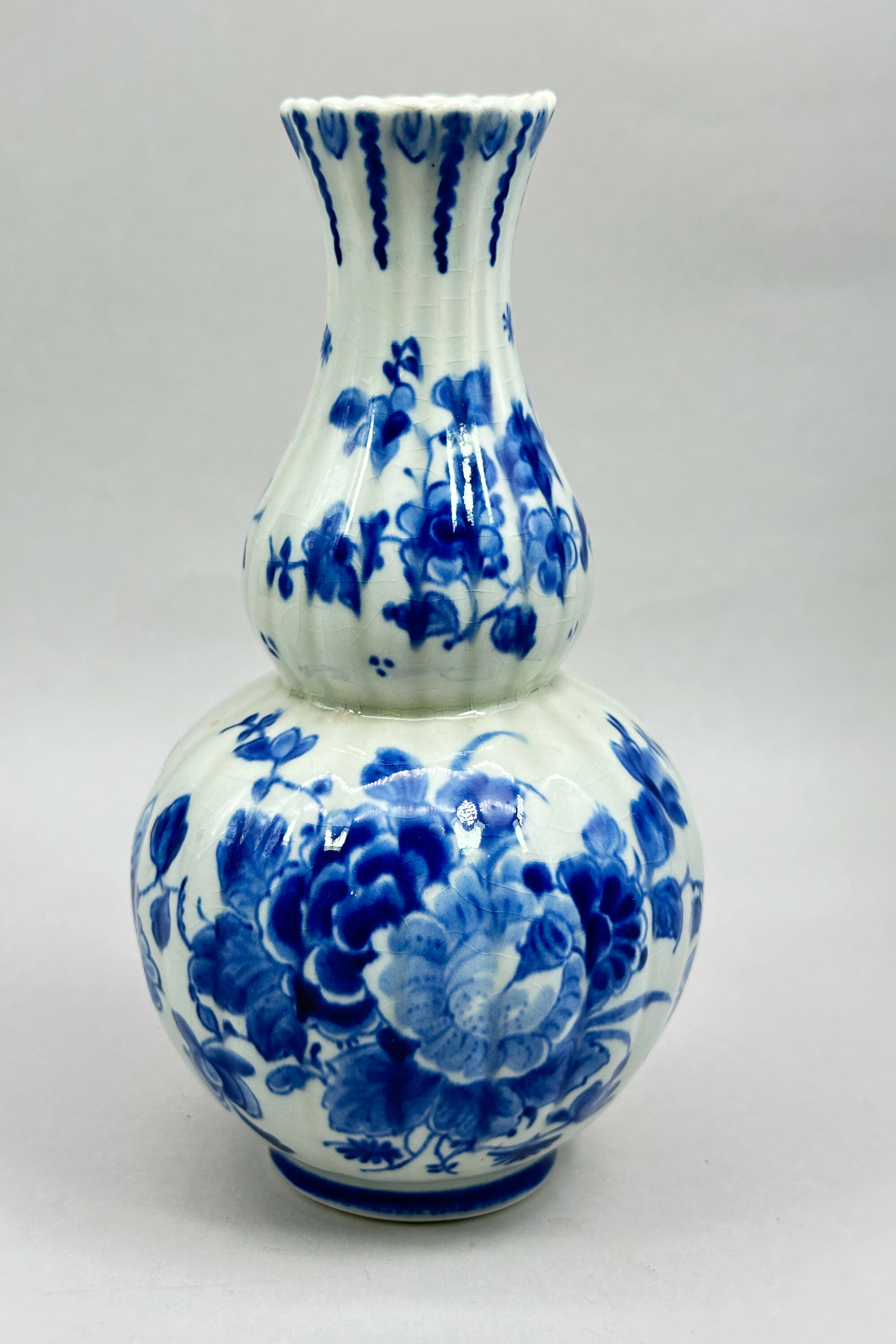
Dutch Delft Blue and White Gourd Vase in C18th Style, late C20th
Price: £25This vase is typical of one of these later creations and copies an eighteenth century original which itself was based on Chinese pieces. The marks underneath, although some of them are blurred, offer a clue to the dating. Below an ‘A’ at the top can be seen a vase which stands for ‘De Porcelyne Fles (The Porcelain Bottle) a factory which was established in 1653 and continues production today. There follow the initials ‘JT’ as a monogram standing for Joost Thooft who bought the factory in 1876 and below this ‘Delft’. At the bottom are usually found the painter’s initials to the left and letters to the right which are the date mark. On this vase these are unclear but the painter’s initials read ‘MA’ which appears to stand for M.H.van Aalst who worked for the firm from 1941to 1983. This would fit with a likely dating here to the second half of the twentieth century, but the artist has successfully recreated the work of his predecessors and produced a piece of great charm.
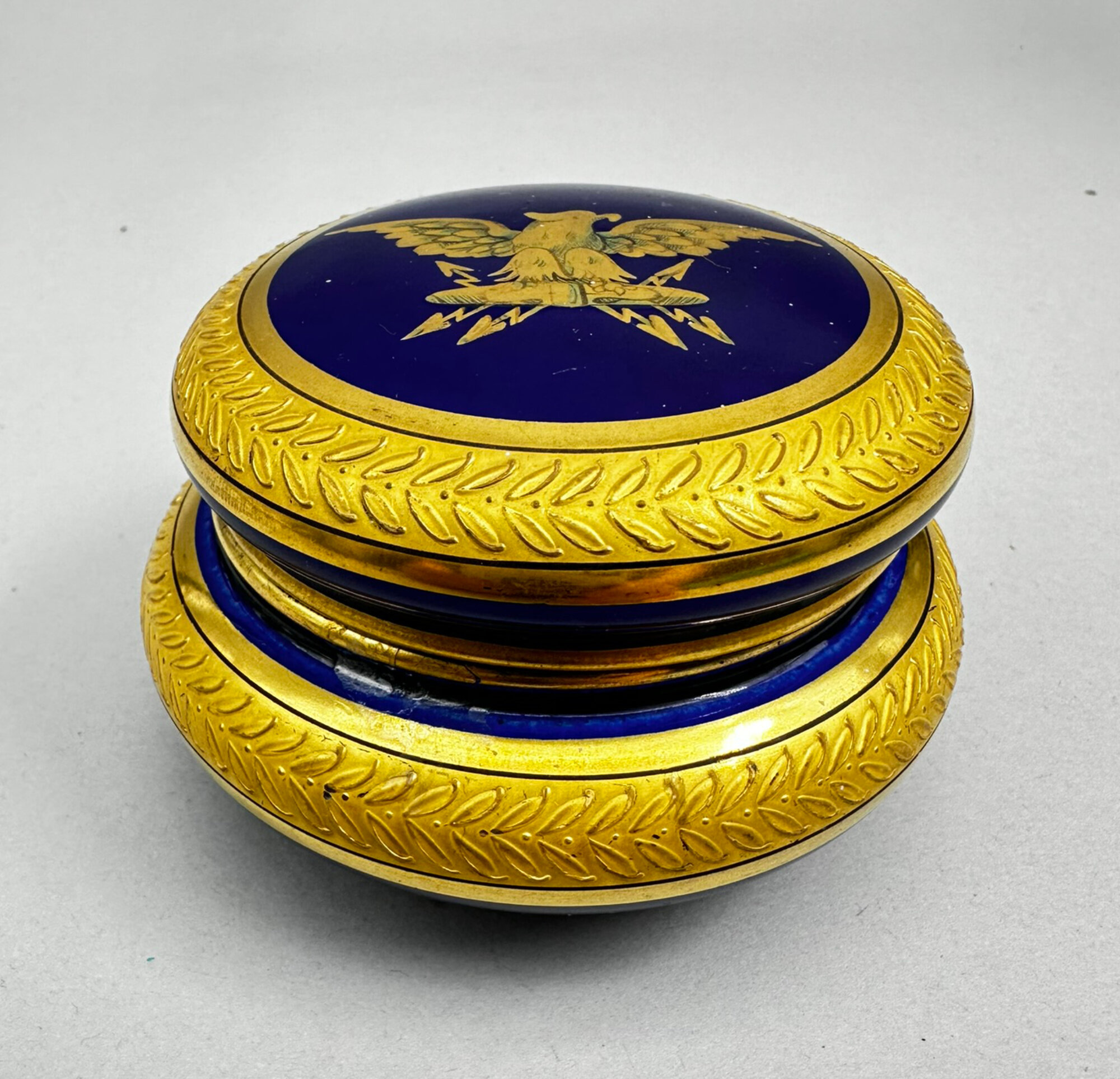
Blue Ground Empire Style Powder Box and Cover, Jean Pouyat, Limoges circa 1900
Price: £75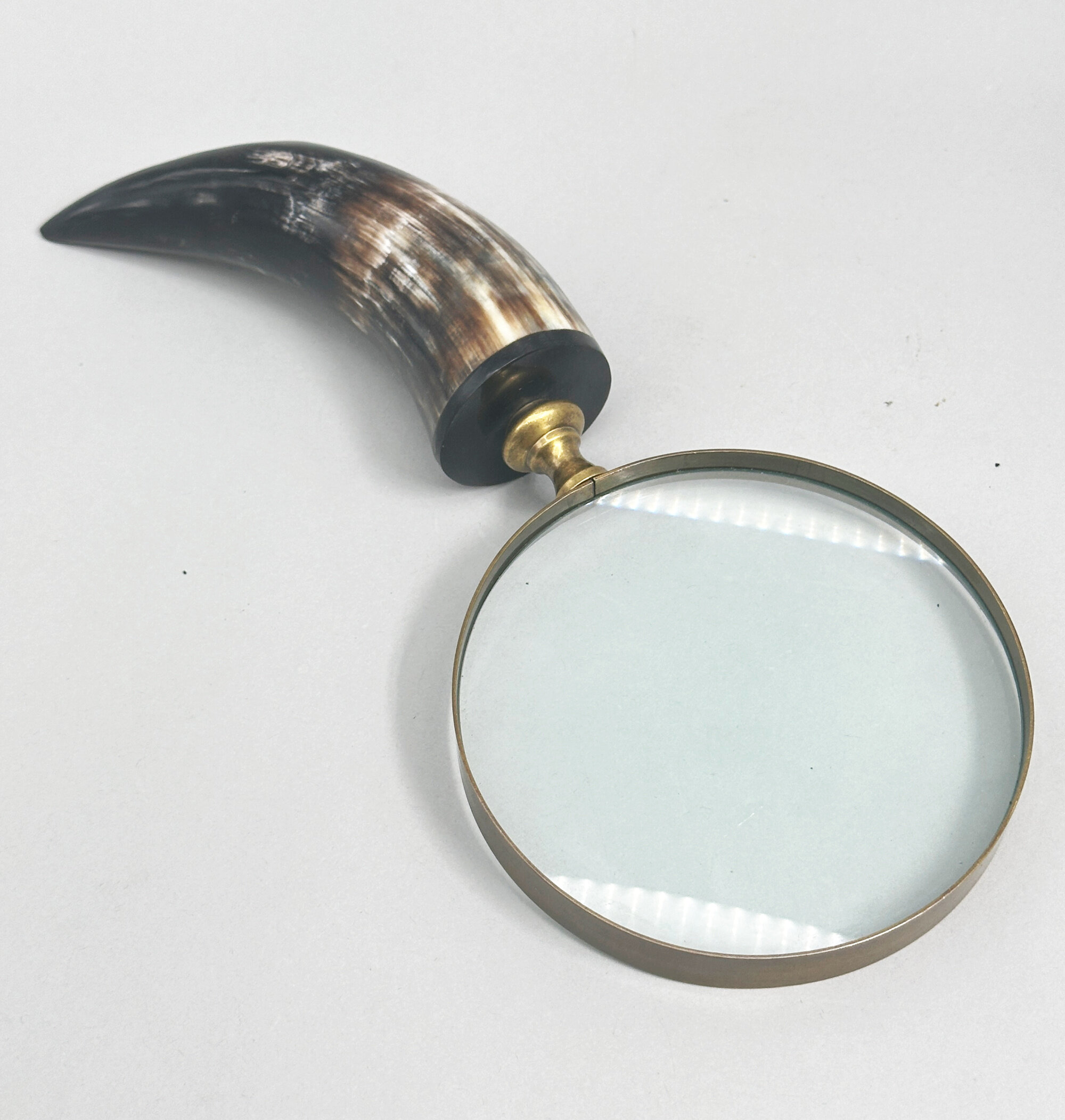
Edwardian large text magnifying glass with horn handle, early C20th
Price: £25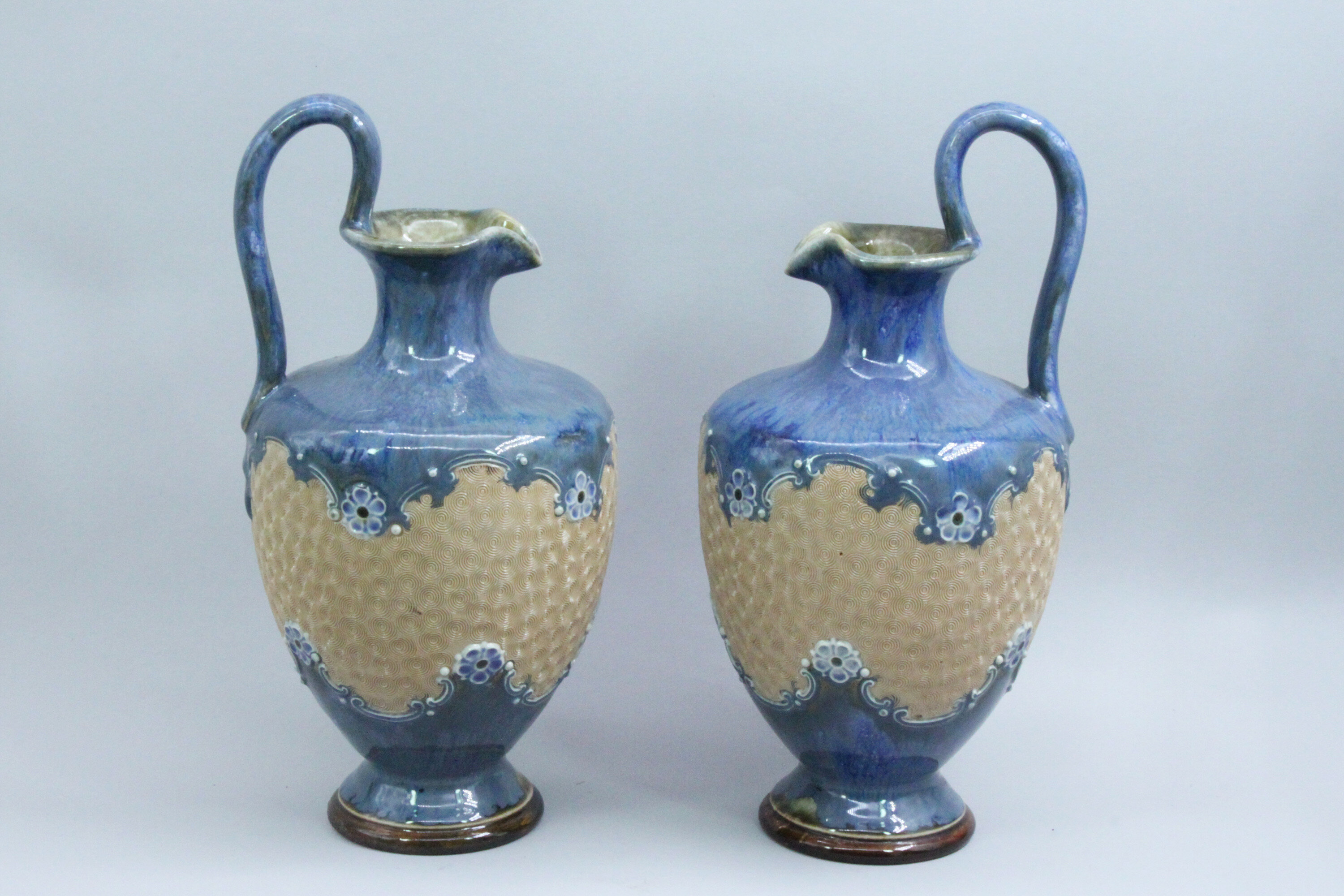
A Pair of Royal Doulton Ewers, marked, early C20th
Price: £150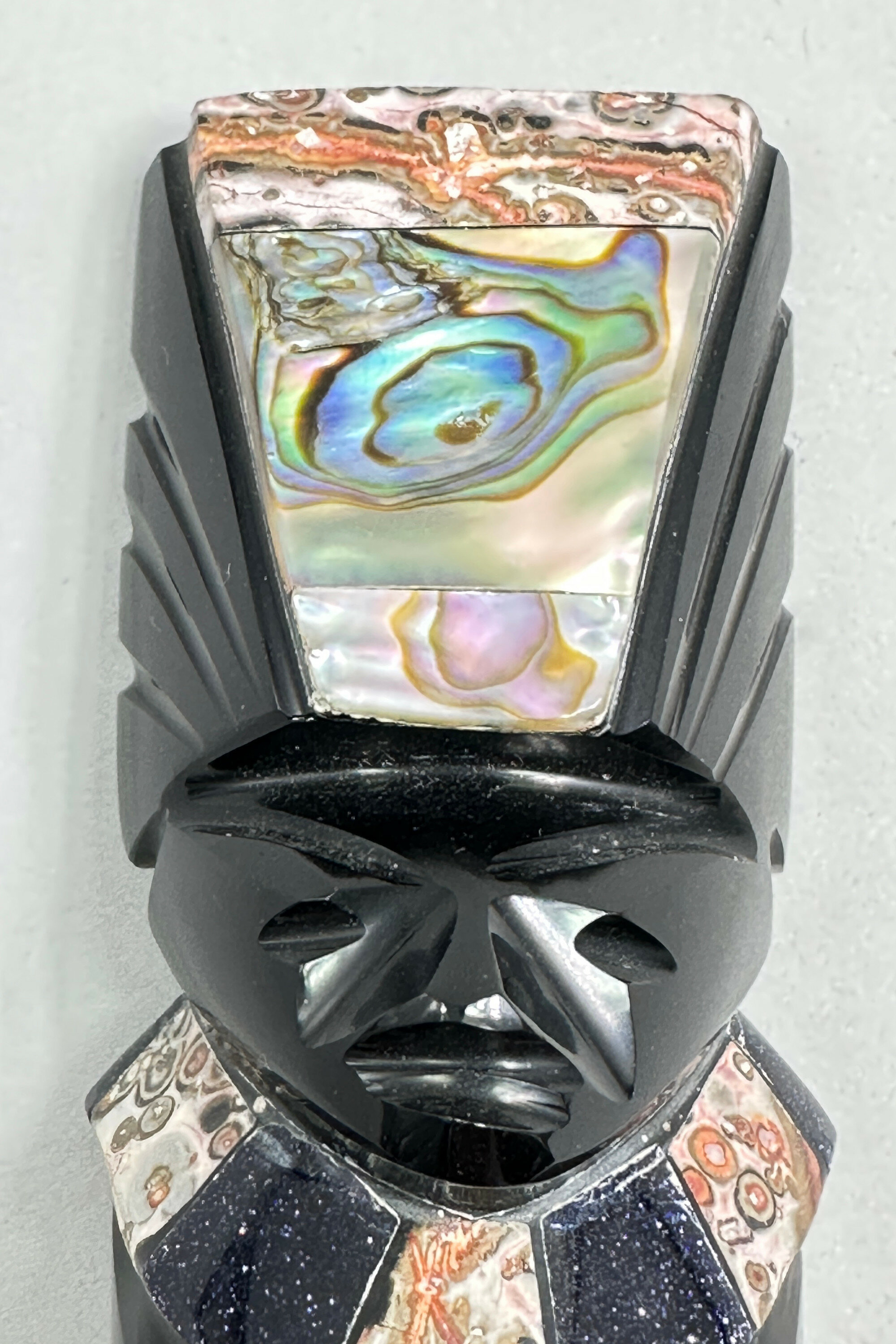
Obsidian Mayan Statuette inlaid with semi precious stones, C20th
Price: £35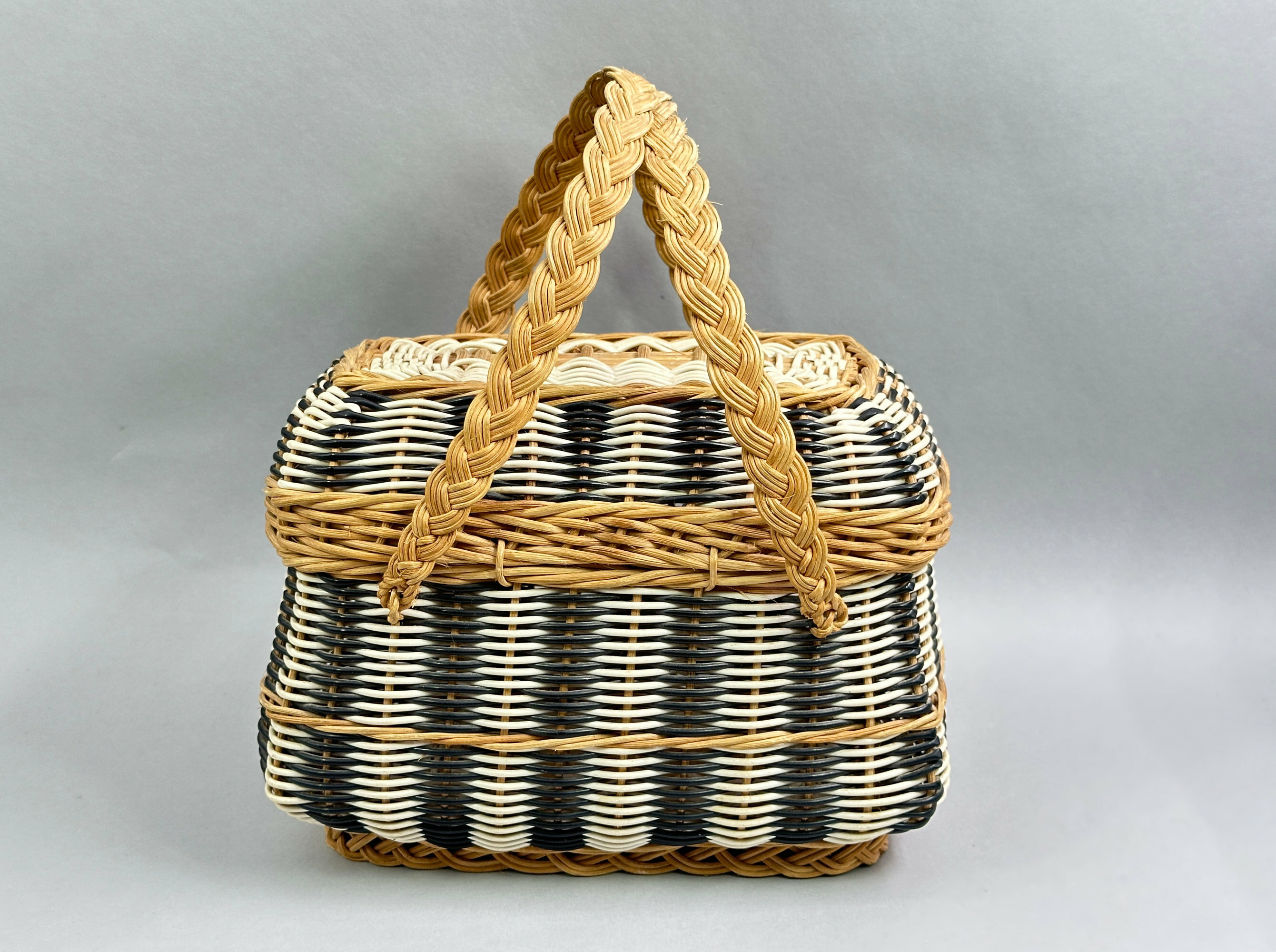
Vintage Wicker and Plastic Woven Basket with Handles, probably mid C20th
Price: £45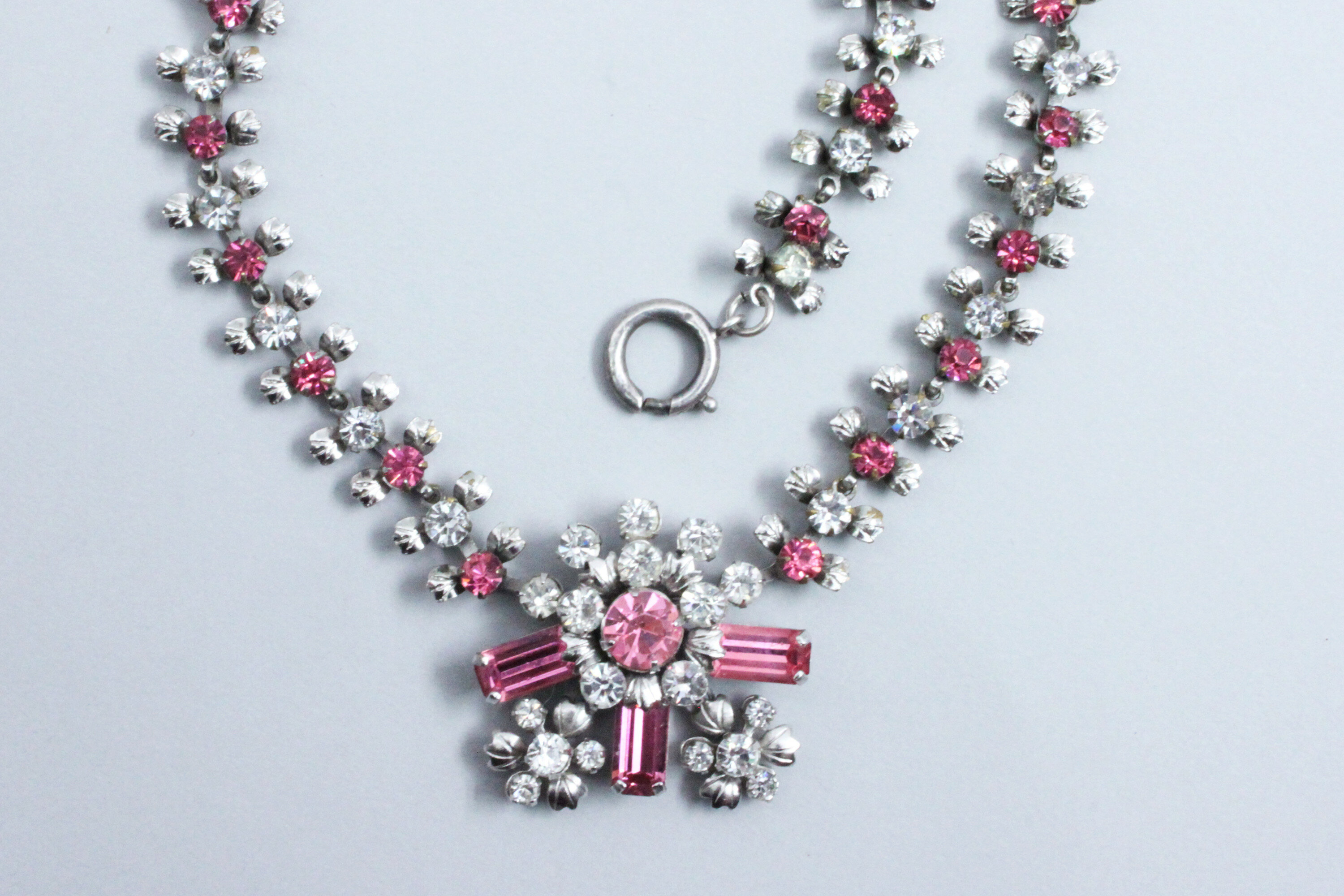
Beautiful paste evening necklace c1940
Price: £25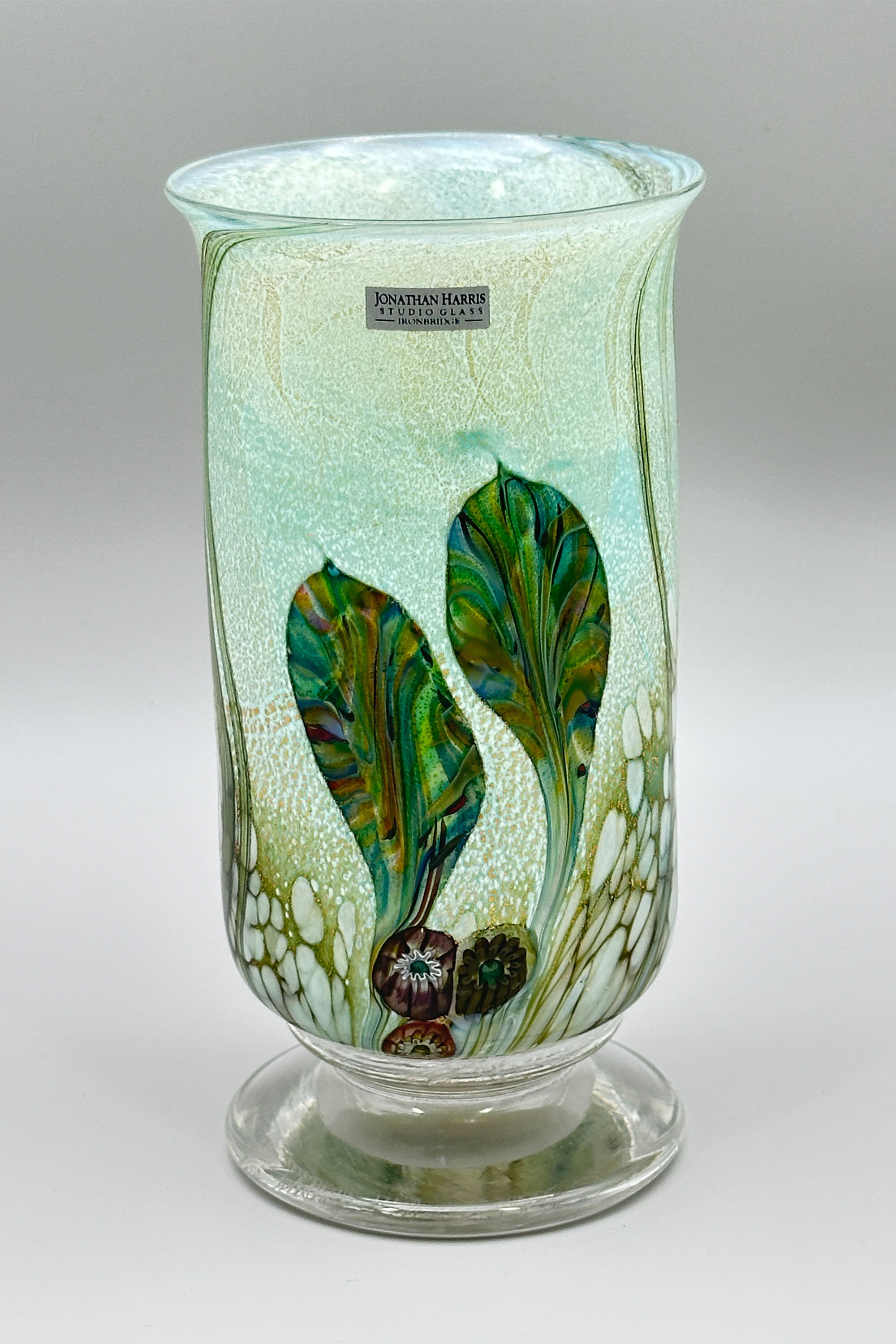
Cameo art glass Vase decorated lilies, Jonathan Harris Glass, signed and dated 2006
Estimate: £60 – 80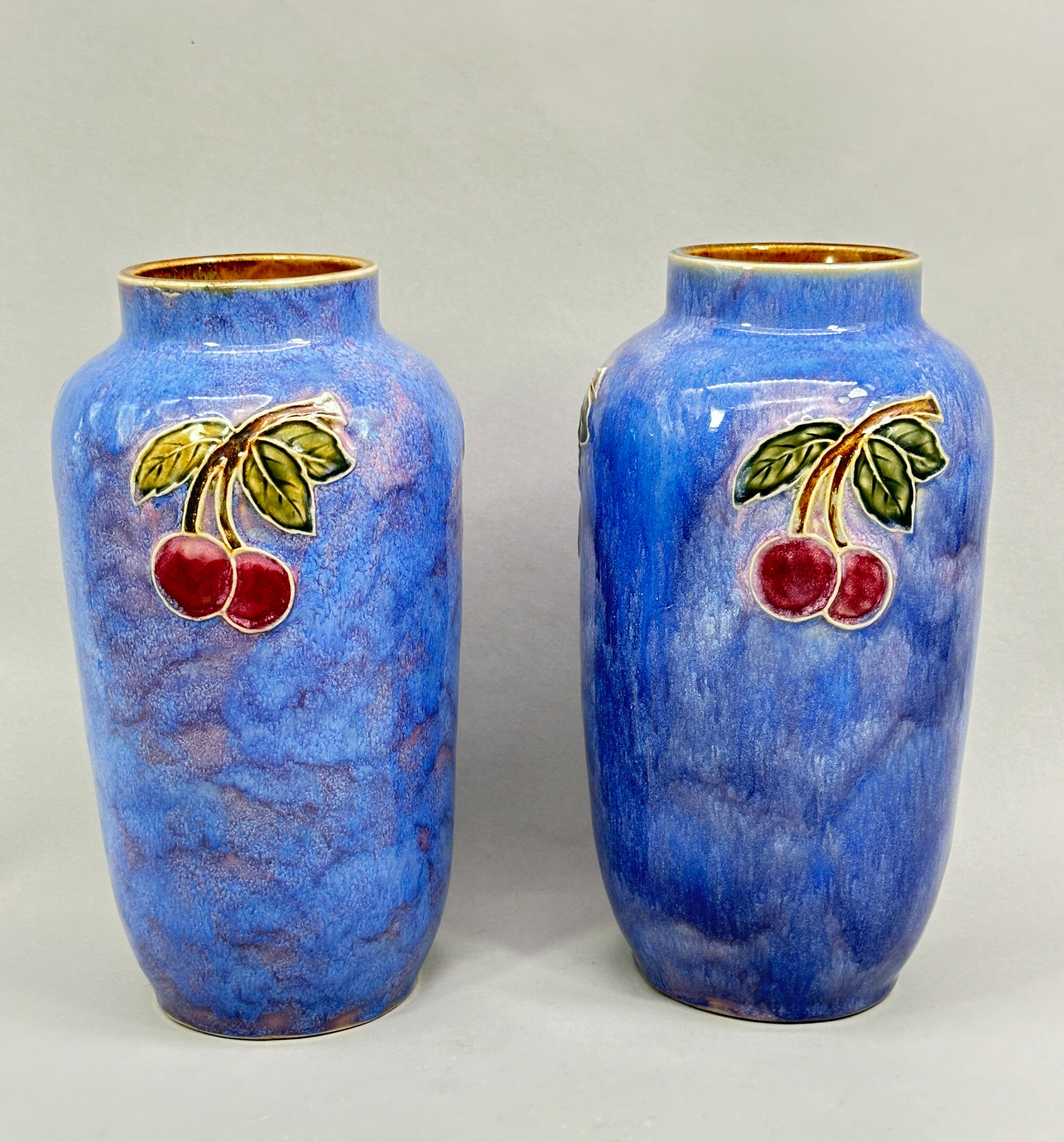
Pair of Royal Doulton Vases decorated Cherries, early C20th
Price: £95The mark for Doulton is one of the standard impressed 'Royal Doulton England' marks where the lettering forms part of a circle combined with three thick lines and the centre is filled with four interlocking 'D's. The addition of a lion but not with the usual accompanying crown allows a fairly precise dating to between 1923 and 1927 which matches with the pattern number ‘8546’, one of the range of numbers used between 1924 and 1927. The artist’s signature cannot be identified but he/she produced a pair of vases of great skill and charm which follow the Art Deco trends fashionable at the time.
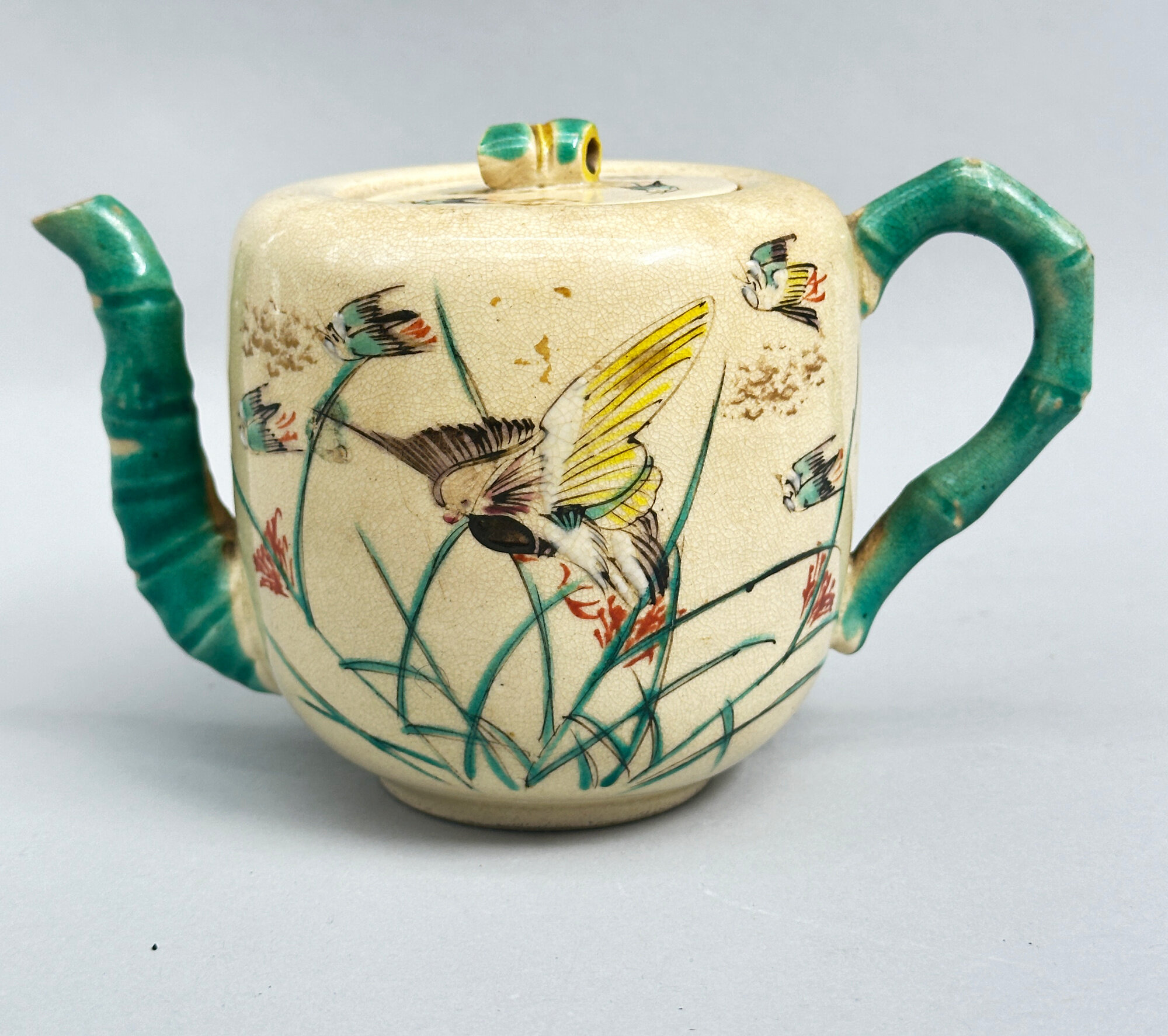
Japanese Awata ware Teapot and Cover, signed, circa 1900
Price: £25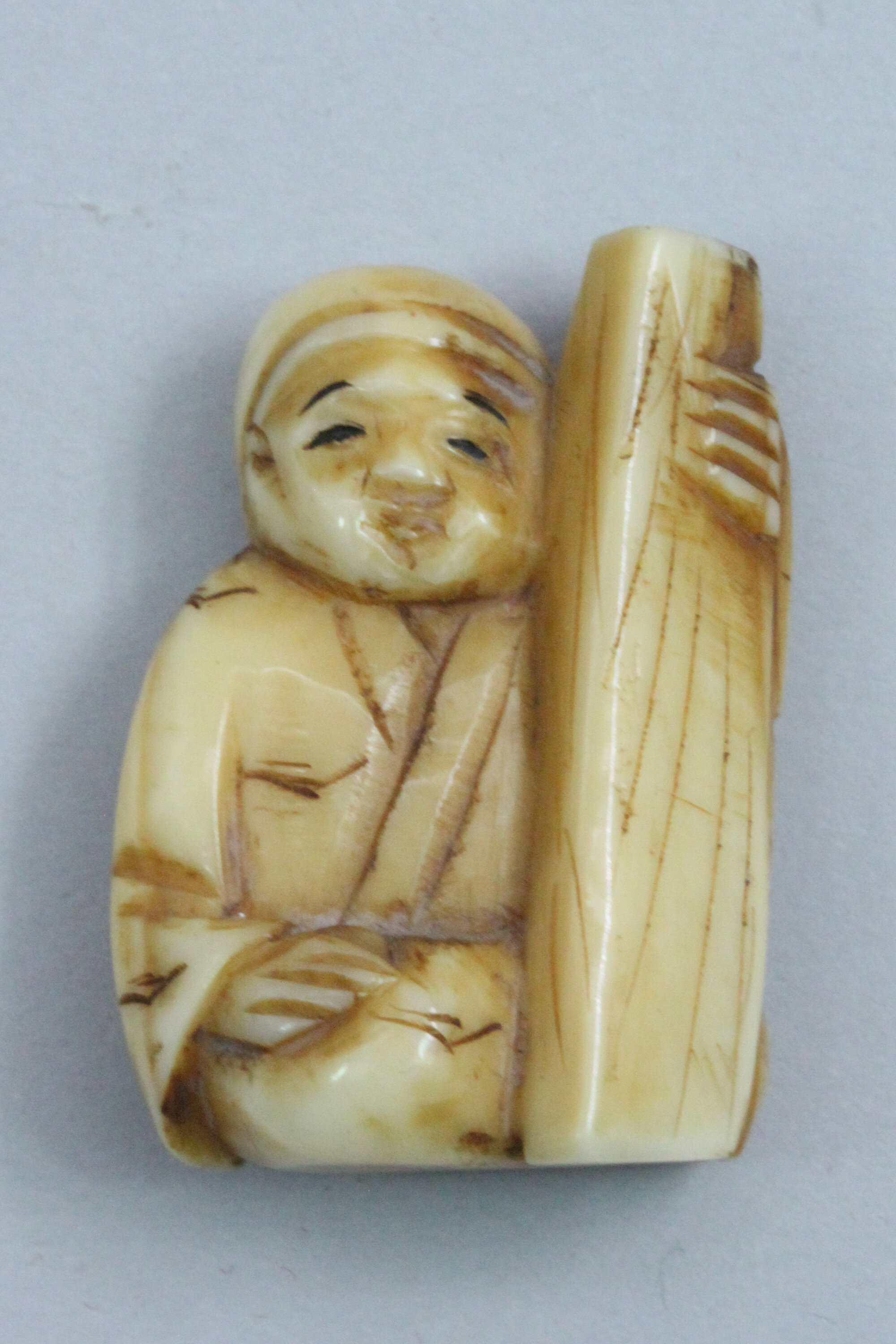
Chinese Bone Netsuke carving of a man holding a musical instrument, early C20th
Price: £25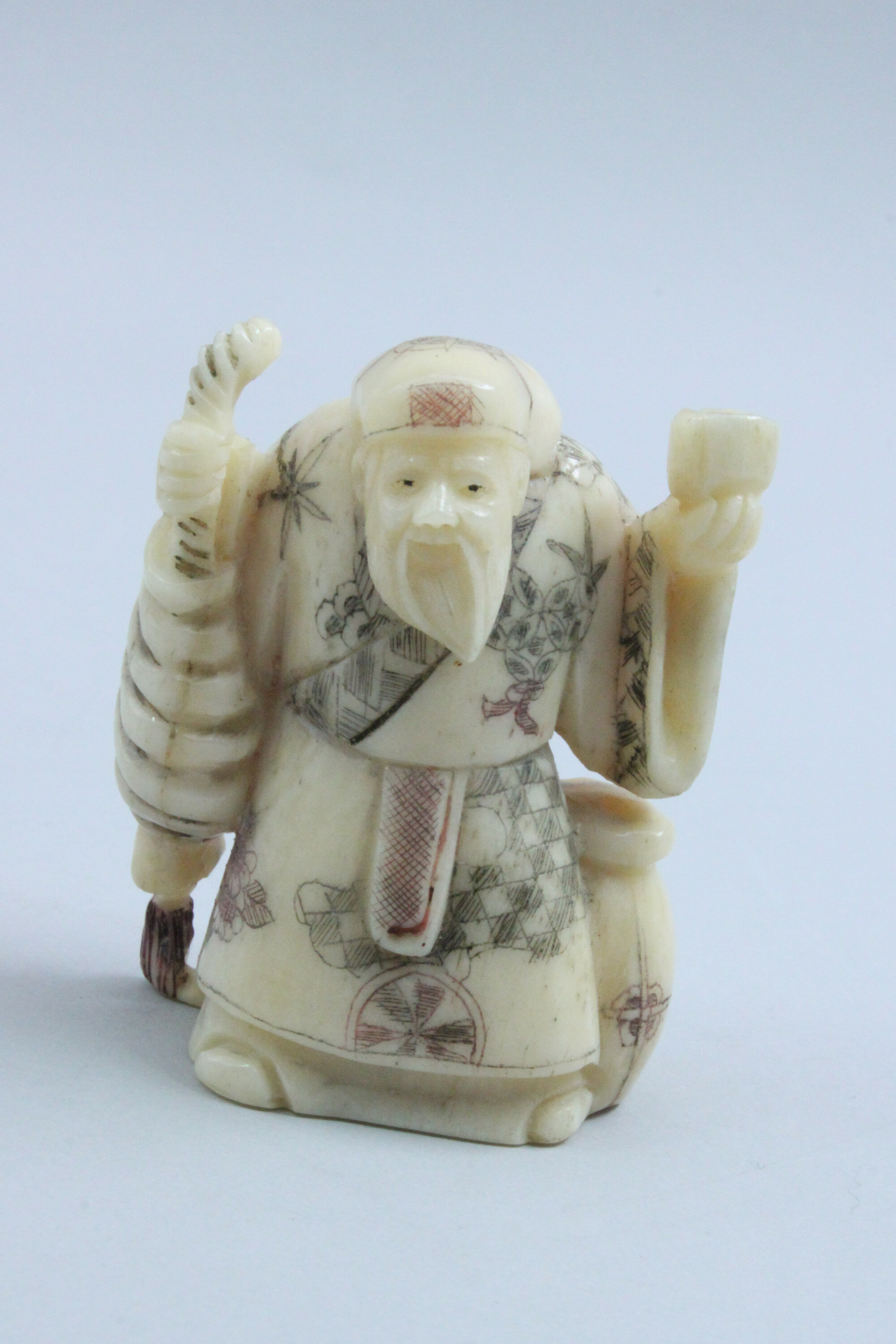
Chinese Bone Netsuke carving of a Sage, early C20th
Price: £45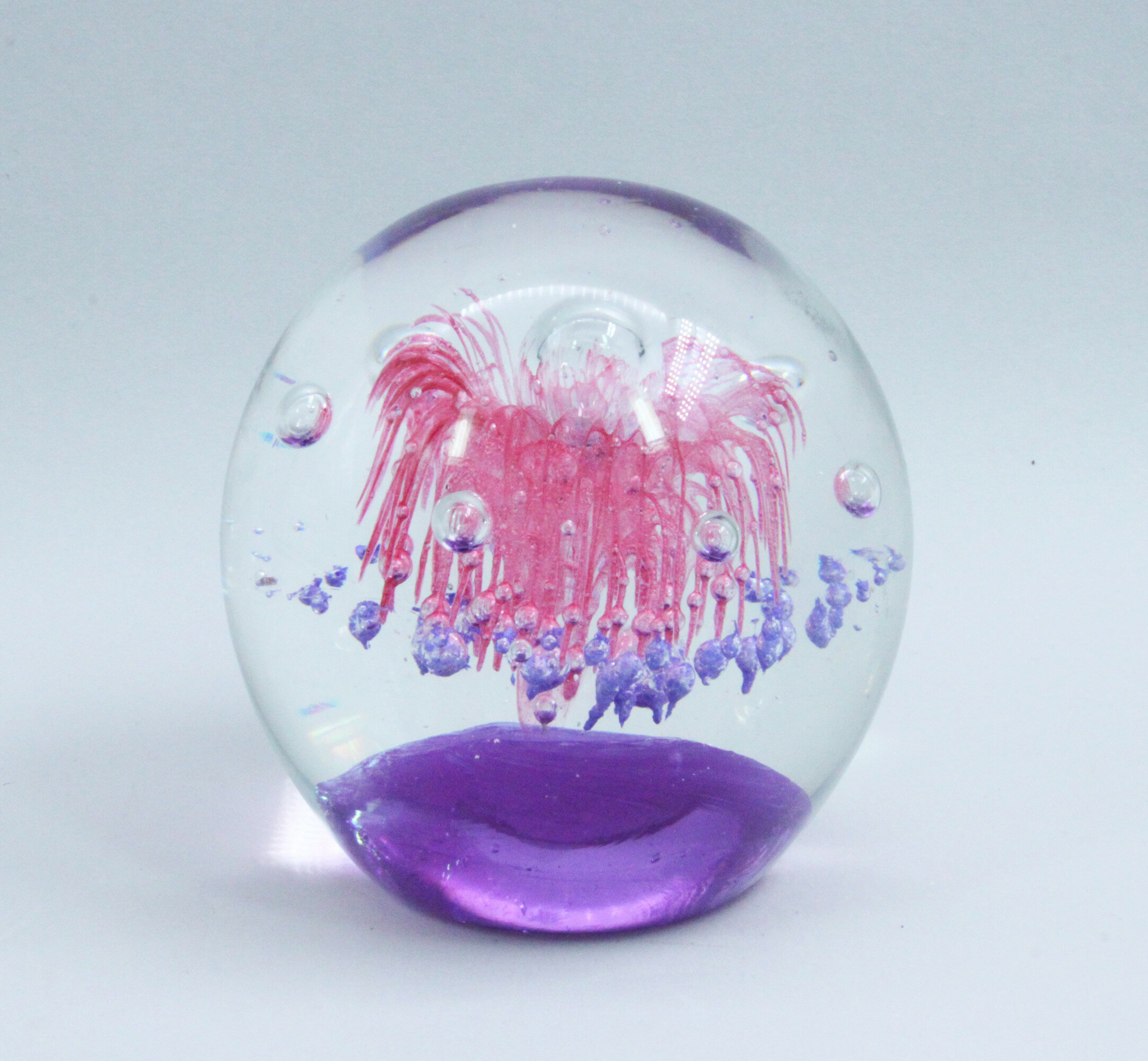
Art Glass Doorstop with Starburst and Bubble designs, perhaps British, late C20th
Price: £45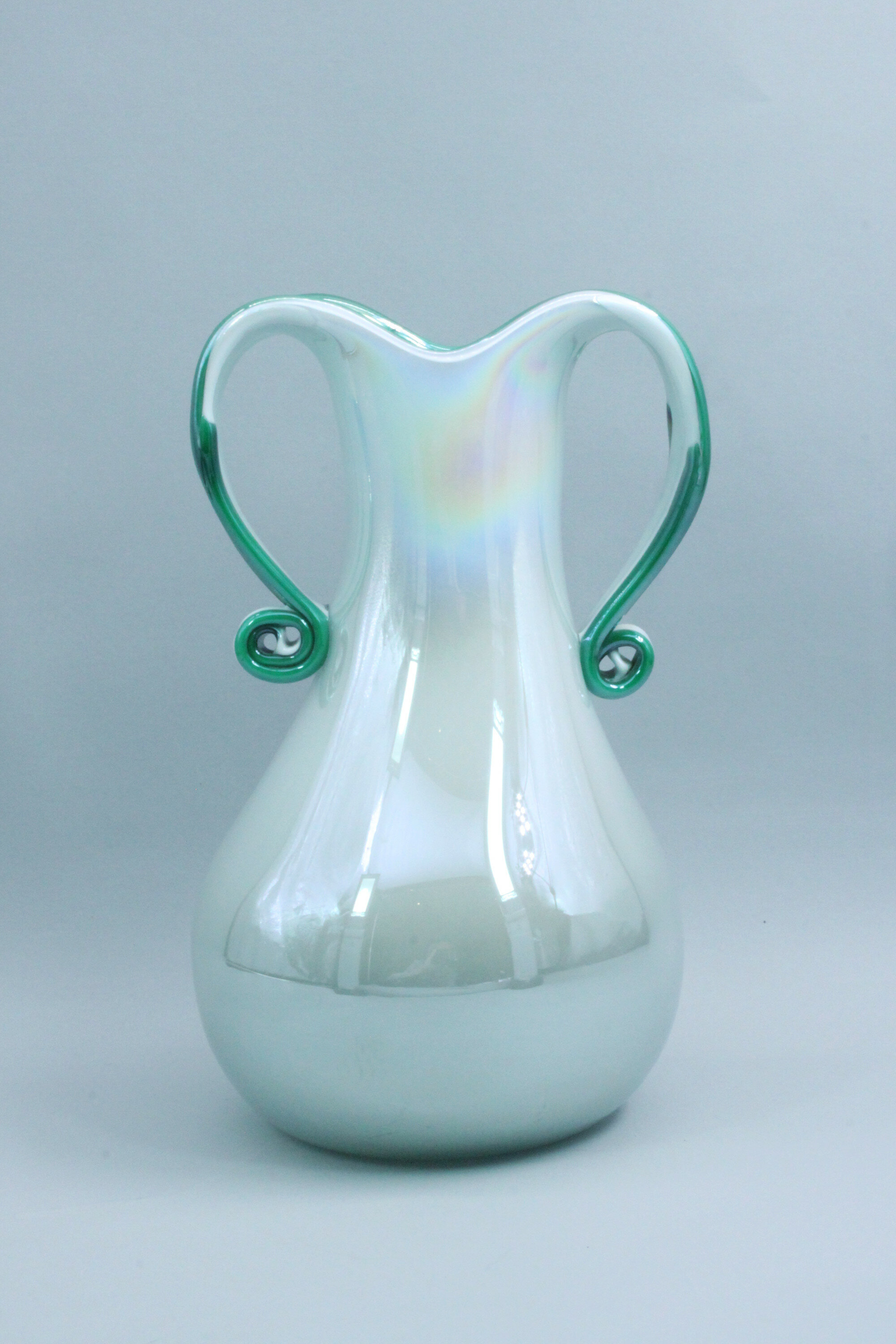
Iridescent art glass Vase with loop handles, possibly continental 1950s
Estimate: £40 – 60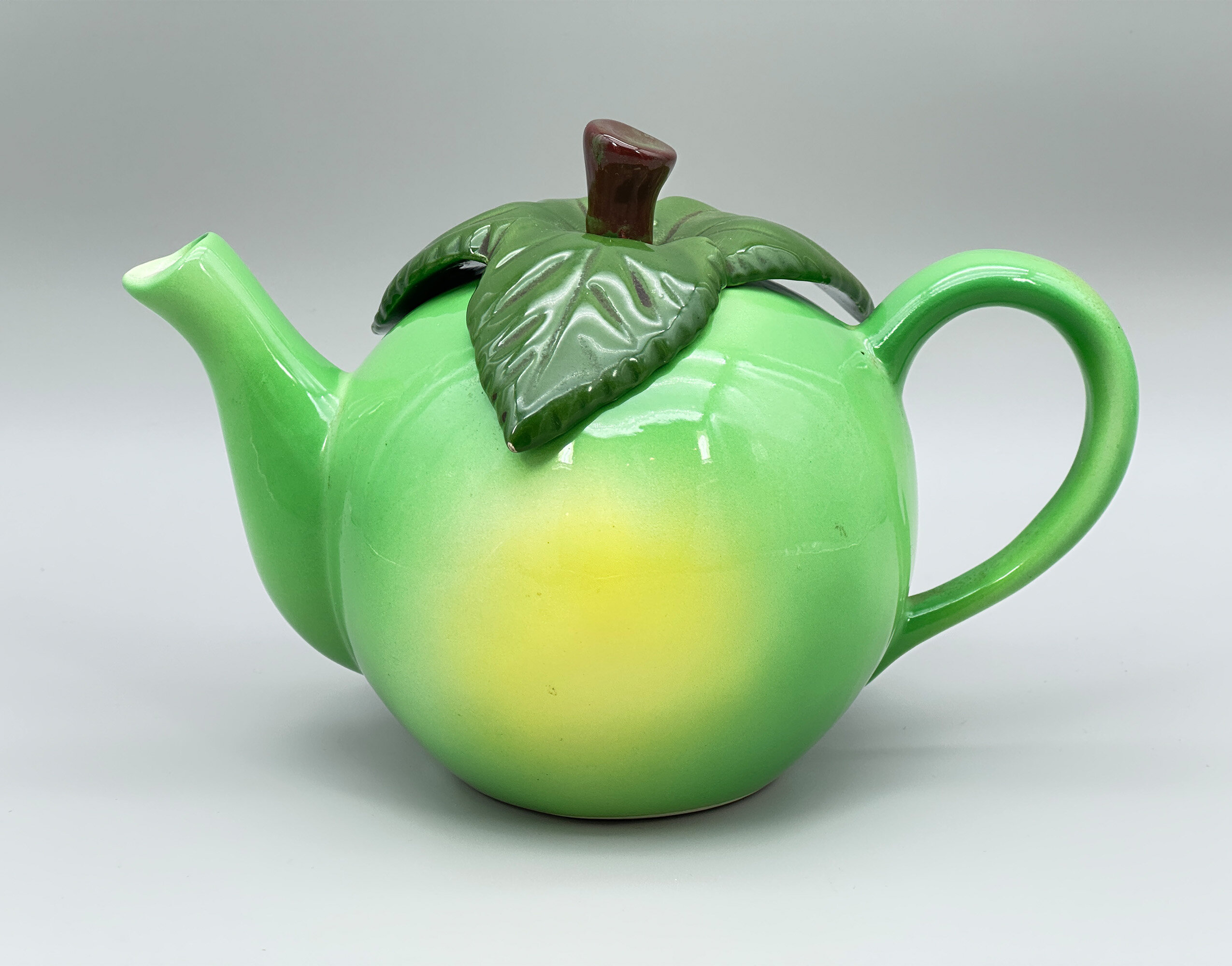
Novelty Teapot in the form of an apple, probably English, late C20th, early C21st
Price: £35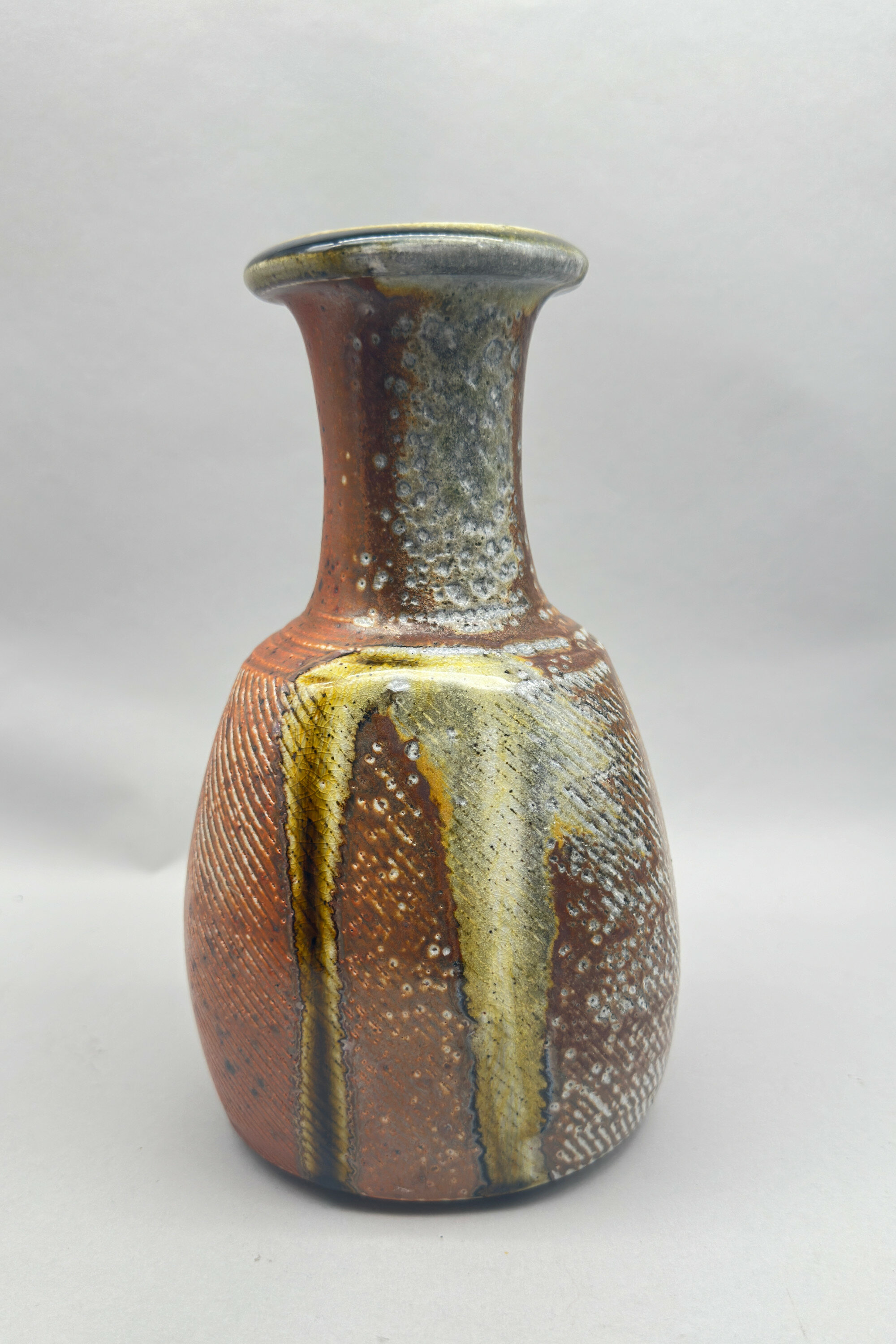
Studio Pottery Vase by John Jelfs, signed, late C20th
Price: £220……………………………………………………………………………………………..................................................................................................................….
John Jelfs was born in Exeter, Devon in 1946 and studied ceramics at the Cheltenham College of Art. In 1973, alongside his wife Jude, also a skilled potter in her own right, he set up his own studio, The Cotswold Pottery Company, in the Cotswolds at Bourton on the Water, from where he has been producing ceramics in a wide variety of forms for over fifty years and still continues to work today. Every piece of his pottery is unique, being made entirely by hand and with the decoration kept to a minimum. Wherever possible locally sourced ingredients of clays, limestone and woodash are used for his glazes of celadon, ochre and shino (a white colour glaze developed in Japan sometimes with red,orange or black spotting).
Jelfs writes himself “From my first exposure to studio pottery I was immediately excited by the work of the late Bernard Leach and his lifelong friend the Japanese potter Shoji Hamada. It was the strength and quietness of their pots which most excited me about their work. For the past few years, I have been concentrating on a range of forms, to which I have applied olive/celadon, ochre and shino glazes made up from wood ash and clay, ingredients both local to my studio. The pots are all hand-thrown from a blend of West-country clays, and are often altered while still soft on the wheel. They are fired twice, the first to biscuit (1000 degrees centigrade) and the second firing to stoneware (1300 degrees Centigrade) in a gas kiln. I use a long firing cycle as this brings out the subtlety and depth in my glazes.”
In more recent years, the construction of a new kiln allowed Jelfs to develop the use of ‘soda glazes’, a complex firing process in which a vapour glaze made of sodium oxide (soda) glazes the clay body of the pottery during the firing process. Sodium materials are introduced into the kiln, usually with a nozzle, at a high temperature of over approximately 1280°C (2350°F). The soda then evaporates and the flame carries the vapour within the kiln, landing on the hot pottery pieces where it fuses with the materials in the clay and any slip decoration applied to it. The soda vapours are colourless and it is the reaction on contact that produces a wide range of colours and textures.
“Since the soda fuses to the surfaces of the work in this way, it blurs the line between pot and glaze/surface; they become one.” — Harrison Levenstein
This elegantly potted vase is a prime example of the technique and the wide variety of glaze effects and textures can be seen and admired. As often, the base is unglazed and in this case marked with the artist's stamp ‘JJ’. The earliest pieces were given an impressed ‘swan’ mark soon to be followed with the wording ‘Bourton on the Water’ in addition. The simple mark of the artist’s initials seems to be later which fits with the use of the ‘soda glaze’ technique developed some years after the pottery studio was set up. Jelfs' work has been widely exhibited in leading galleries including Galerie Besson and the Victoria & Albert Museum in London, Alpha House in Sherborne, Beaux Arts, Bath, and the Rufford Ceramics Centre in Nottingham. It is also included in many collections around the world and our vase would make a fine addition to any of them.
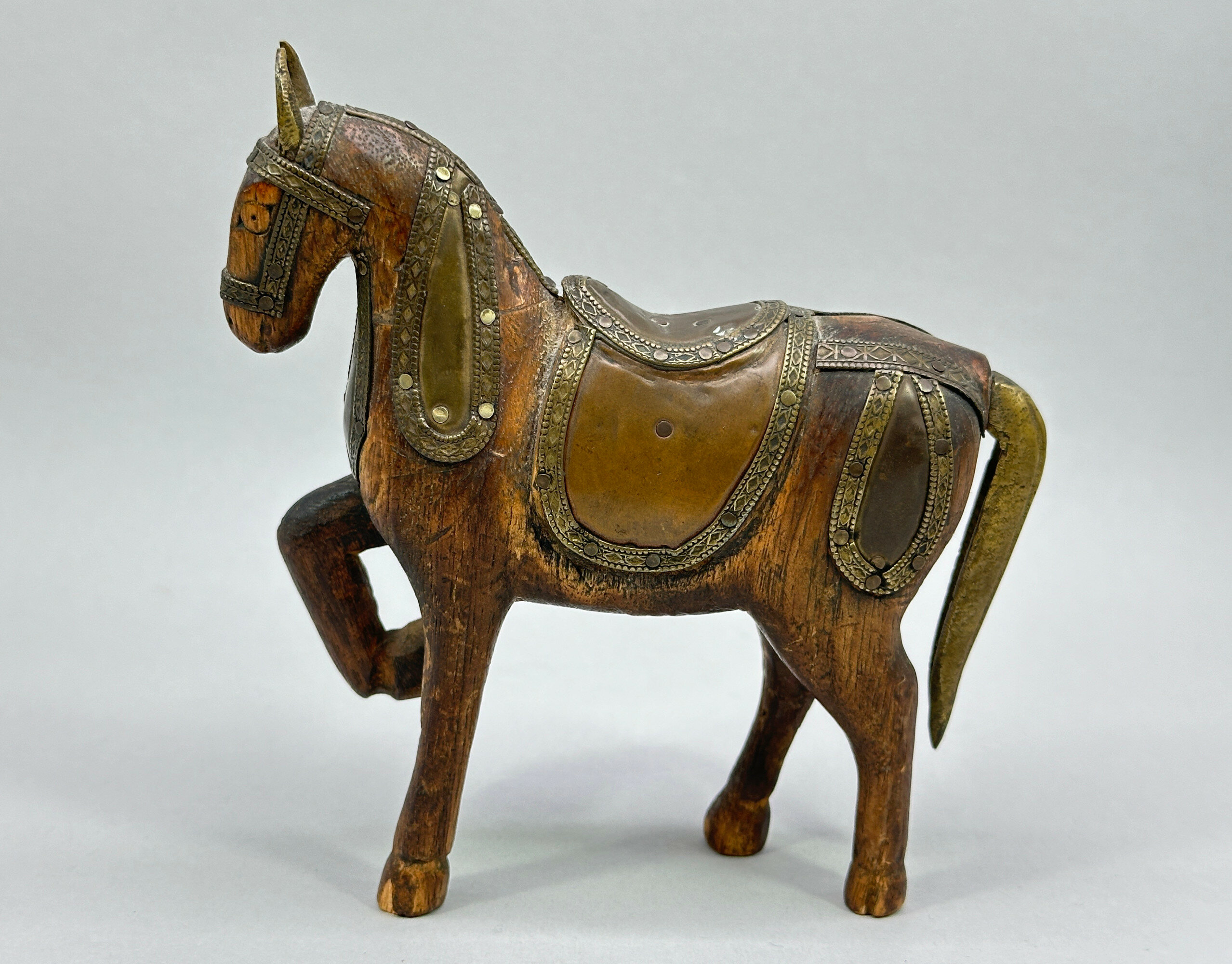
Indian wooden toy model of a Horse with metal fitments, early C20th
Price: £25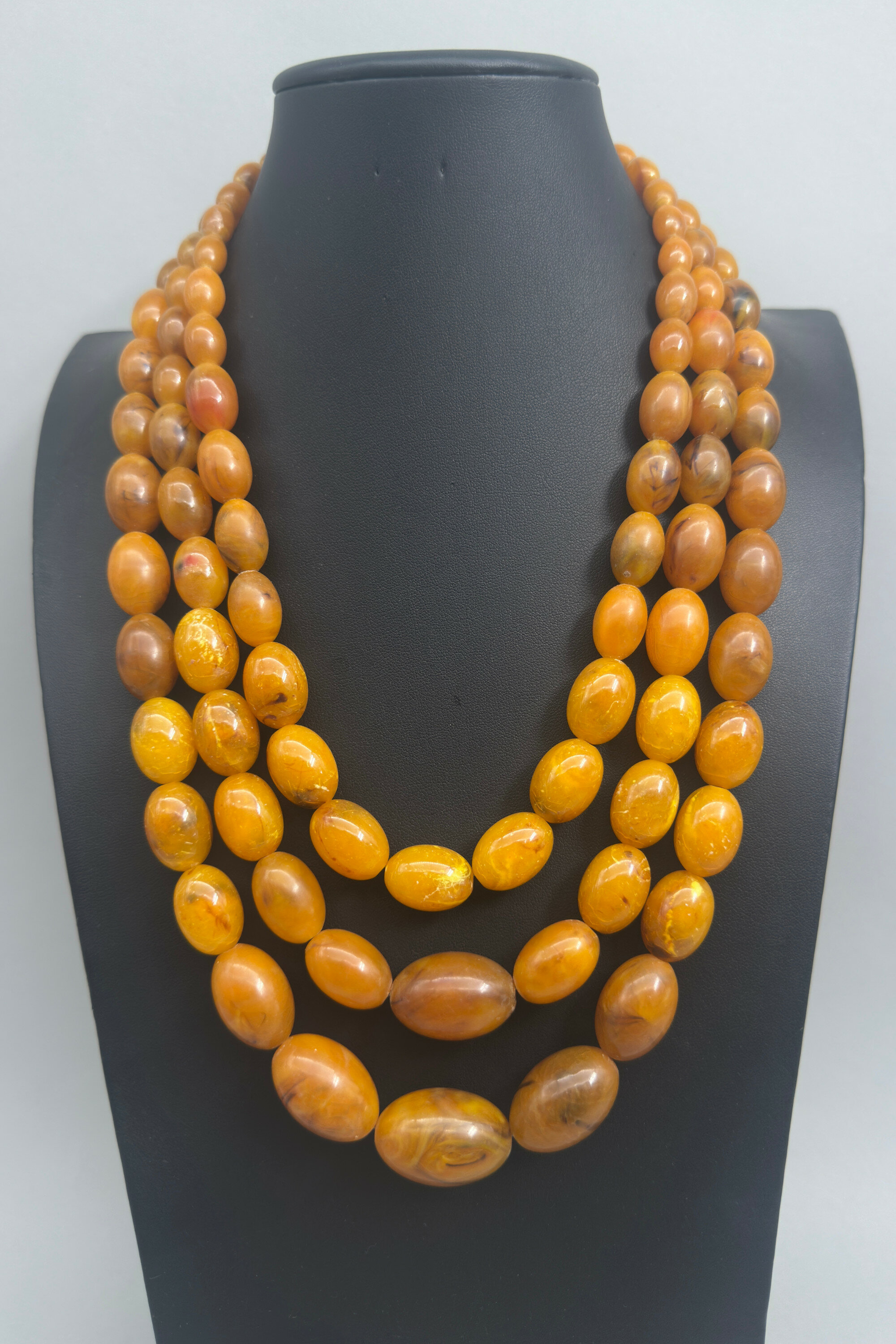
Triple strand of amber Bakelite beads, British 1930s
Price: £750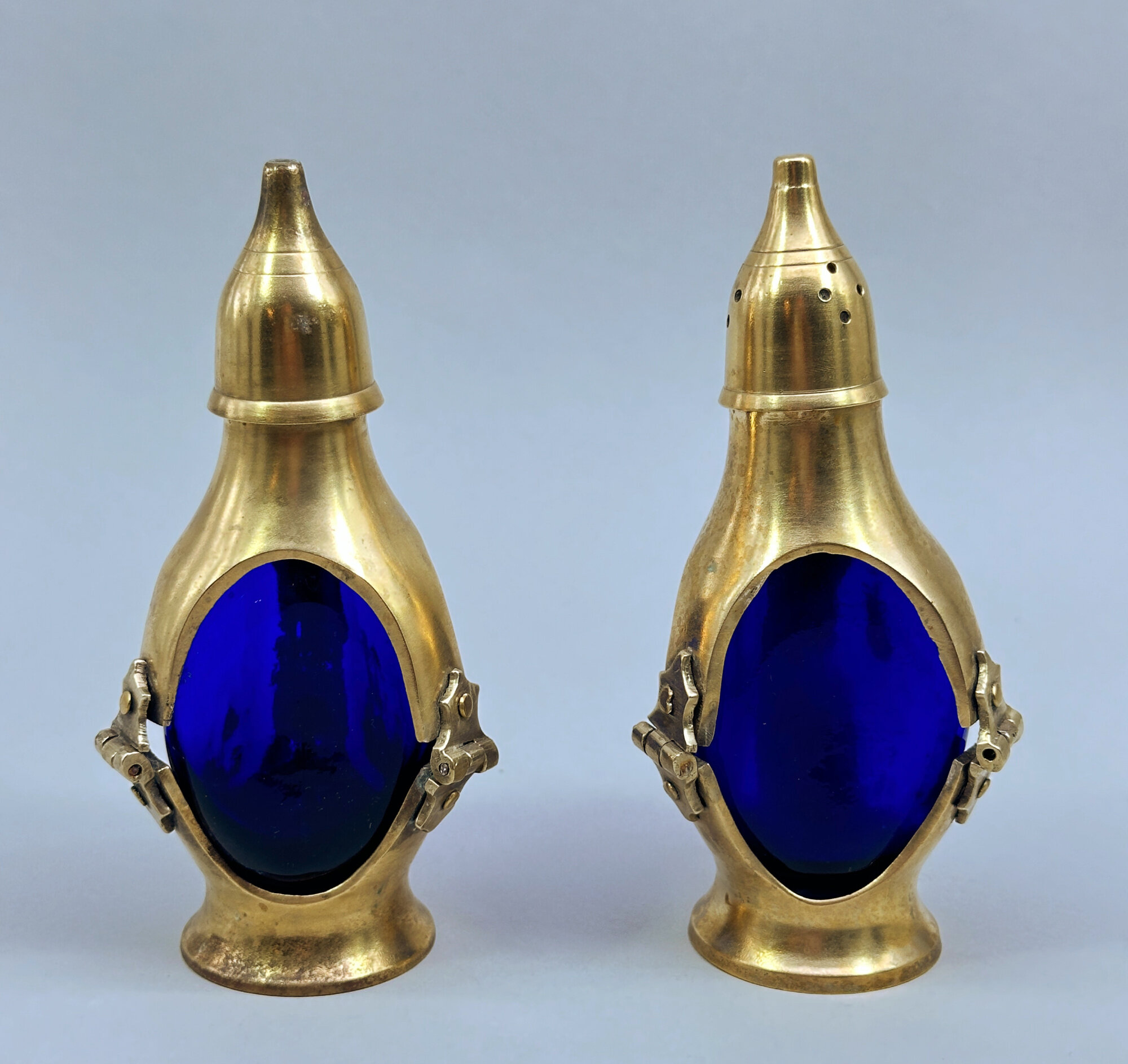
Arts and Crafts Brass and Cobalt Glass Salt and Pepper, early C20th
Price: £55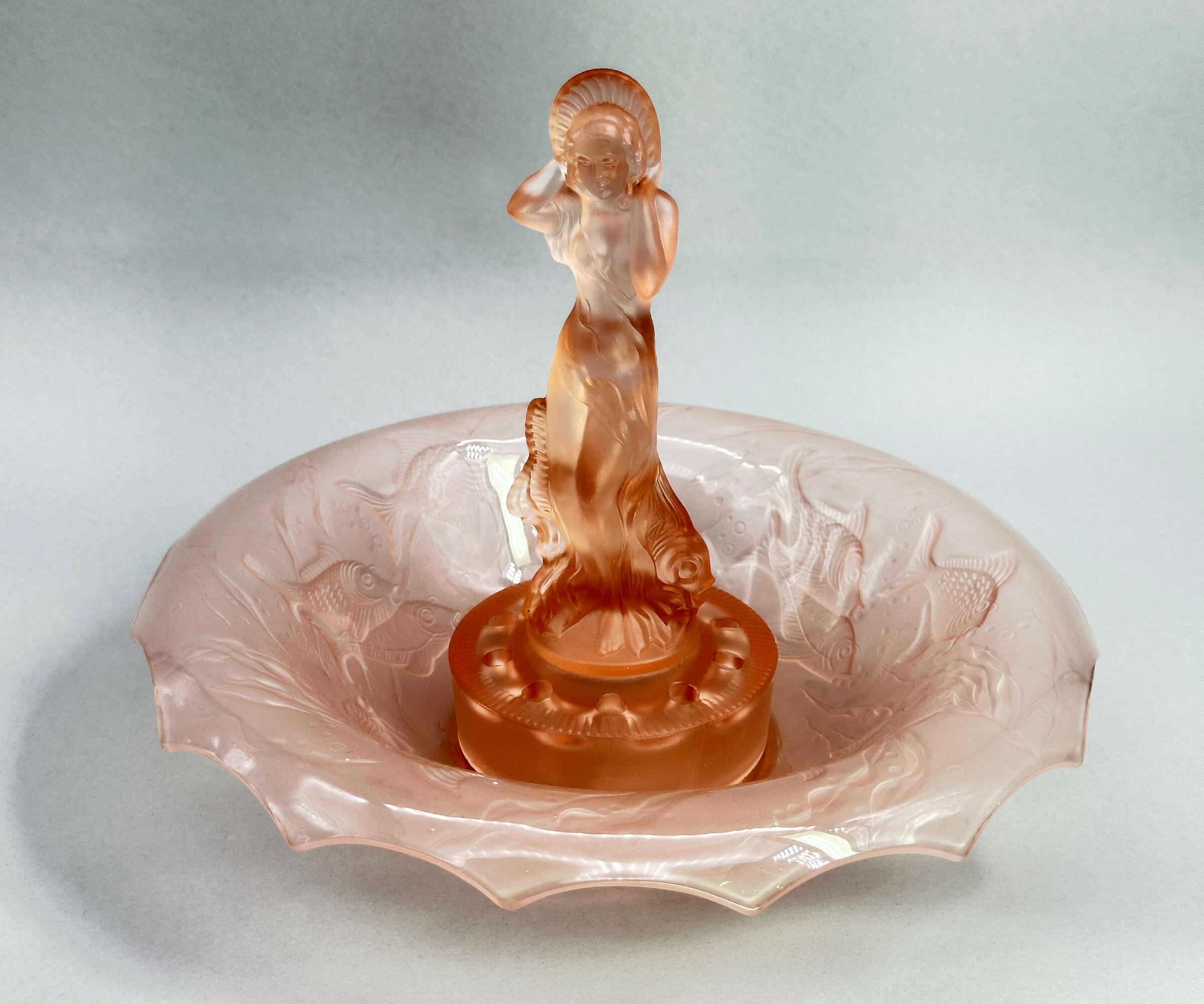
Pink Glass Centrepiece Set, Arabella, Walter and Sohne, 1930s
Price: £55The influence of Art Deco style of this piece is clear and it does indeed date to the 1930s. The model, termed ‘Arabella’ can apparently be seen in the 1934 catalogue of the German glass manufacturers Walther and Sohne, founded by August Walther in 1888 at Ottendorf-Akrilla near Dresden. In the 1930s the firm was famous for its Art Deco designs and also produced a version of ‘cloud glass’ which at one time was held to be exclusive to the English manufacturer Davidson. But some of the English glass makers also drew on their German rival’s work such that Walther and Sohne patented some of their designs in the UK in 1937, presumably to protect their work. This centrepiece set is a classic example of Walther and Sohne’s pre war productions and a distinctive example of Art Deco glassware.
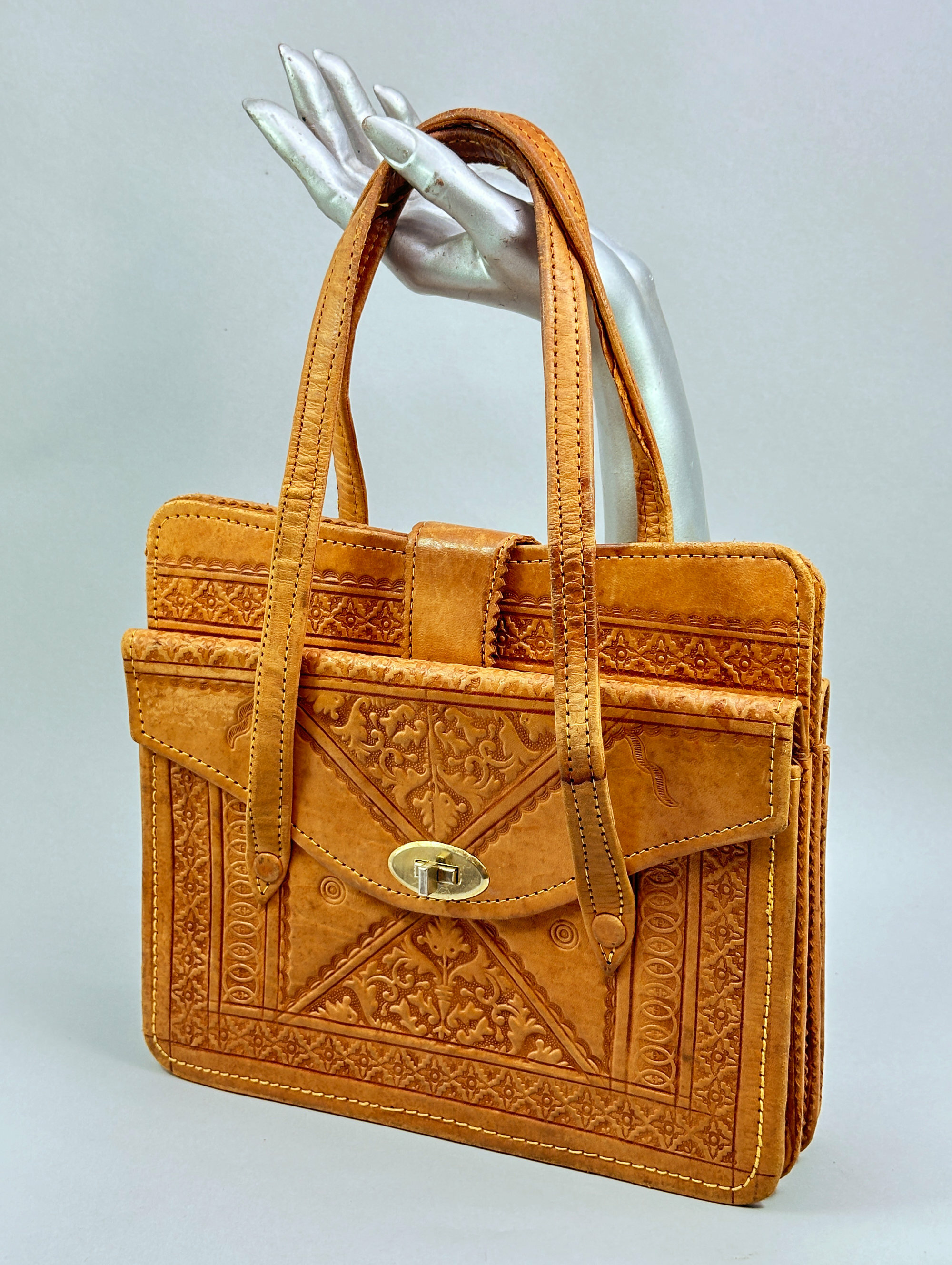
Moroccan tooled leather bag c1960
Price: £65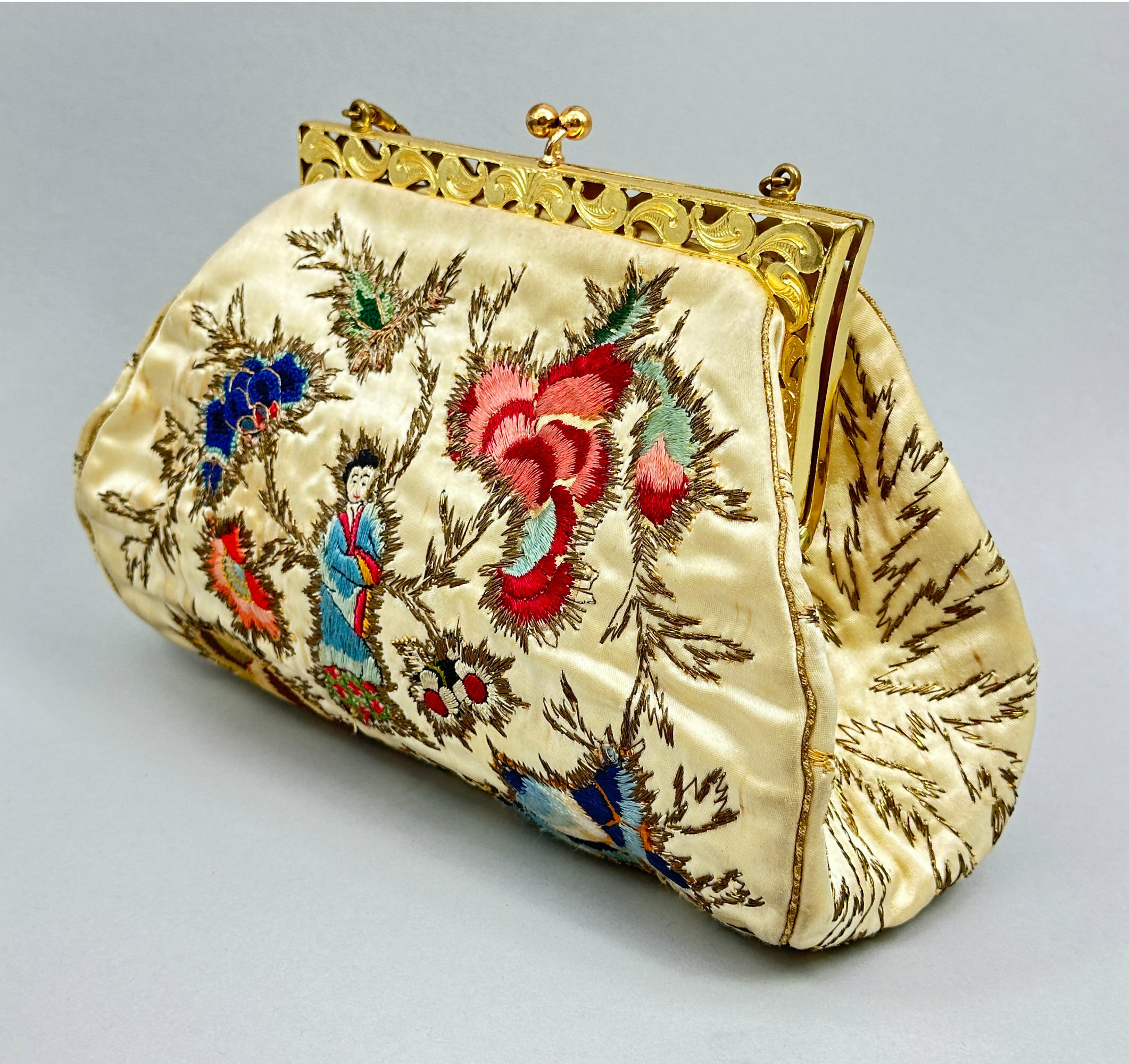
English silk handbag with embroidered Chinoiserie design c1950
Price: £95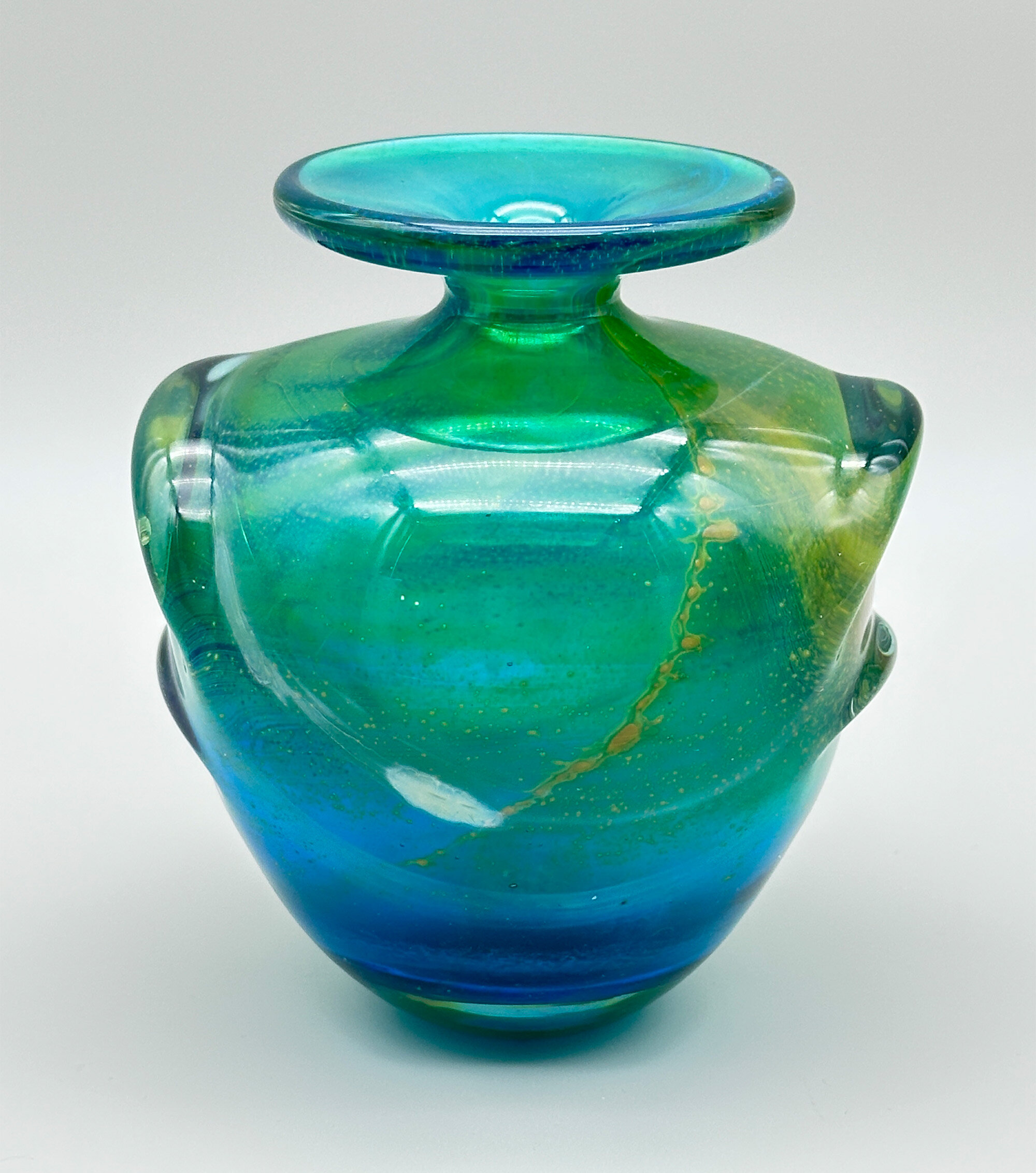
Mdina pulled ear glass Vase, Blue Summer pattern, signed, second half C20th
Estimate: £40 – 60
Two Vallauris Lava Vases, French 1950s/1960s
Price: £150………………………………………………………………………………………………….....................................................................
Vallauris is a tourist town of the French Riviera near Antibes taking its name form the Provencal ‘Valauria’ meaning ‘the golden valley’. It is divided into two parts: the upper town which is the old centre and the seaside district which runs from the port along the coast, towards Antibes. Deposits of clay were found there in Roman times giving the impetus for the creation of potteries which tended to concentrate on domestic wares. Production was then continuous with an infux of craftsmen from Genoa, Italy, in the sixteenth century and the development of artistic activity in the seventeenth. The advent of the railways in the late nineteenth century led to an even further expansion of production and companies were established there which achieved widespread fame and recognition notably those of Massier and Foucard-Jourdan.
After the war, Picasso, along with a group of fellow artists, settled in Vallauris and it proved to be a congenial stimulus. He began to experiment with producing ceramics in 1947 and was to continue working extensively in this field until his death in 1973 (see image 12). There were collaborations, one with the ceramicist Robert Picault and another with Suzanne and Georges Ramié, the owners of the Madoura workshop, where Picasso worked on his productions. Indeed it was at the Madoura workshop that Picasso met Jacqueline Roque, a saleswoman working there and 44 years his junior. They married in 1961 and remained together until his death in 1973, Jacqueline being the inspiration for many of the designs which Picasso created.
It would be fanciful, though, to see the influence of the famous artist on these vases although they were very much created in the tradition of Vallauris pottery with which he was so in sympathy. The town seems to have become particularly fashionable in the 1950s and 1960s and it was around that time that these vases were made. Many pieces were created in lead glazed earthenware, the overall decoration resembling the ‘lava’ glazes used in West German pottery of the same period. These two vases are similar and complementary. The bodies are concave with a short foot and a widely flaring mouth; there are loop handles at each side. The brown glaze at the base is succeeded by a blend of mottled greens and greys and topped with a vibrant red at the mouth. The interiors are glazed brown as is the base with the unglazed foot rim showing the fairly coarse clay used. Some but not all Vallauris pieces are marked and there are many unmarked examples as here. Considerable skill must have been required to produce the variety of glaze effects and the results are striking. As two matching items, these vases have considerable decorative appeal and are worthy examples of a long established tradition of ceramic production.
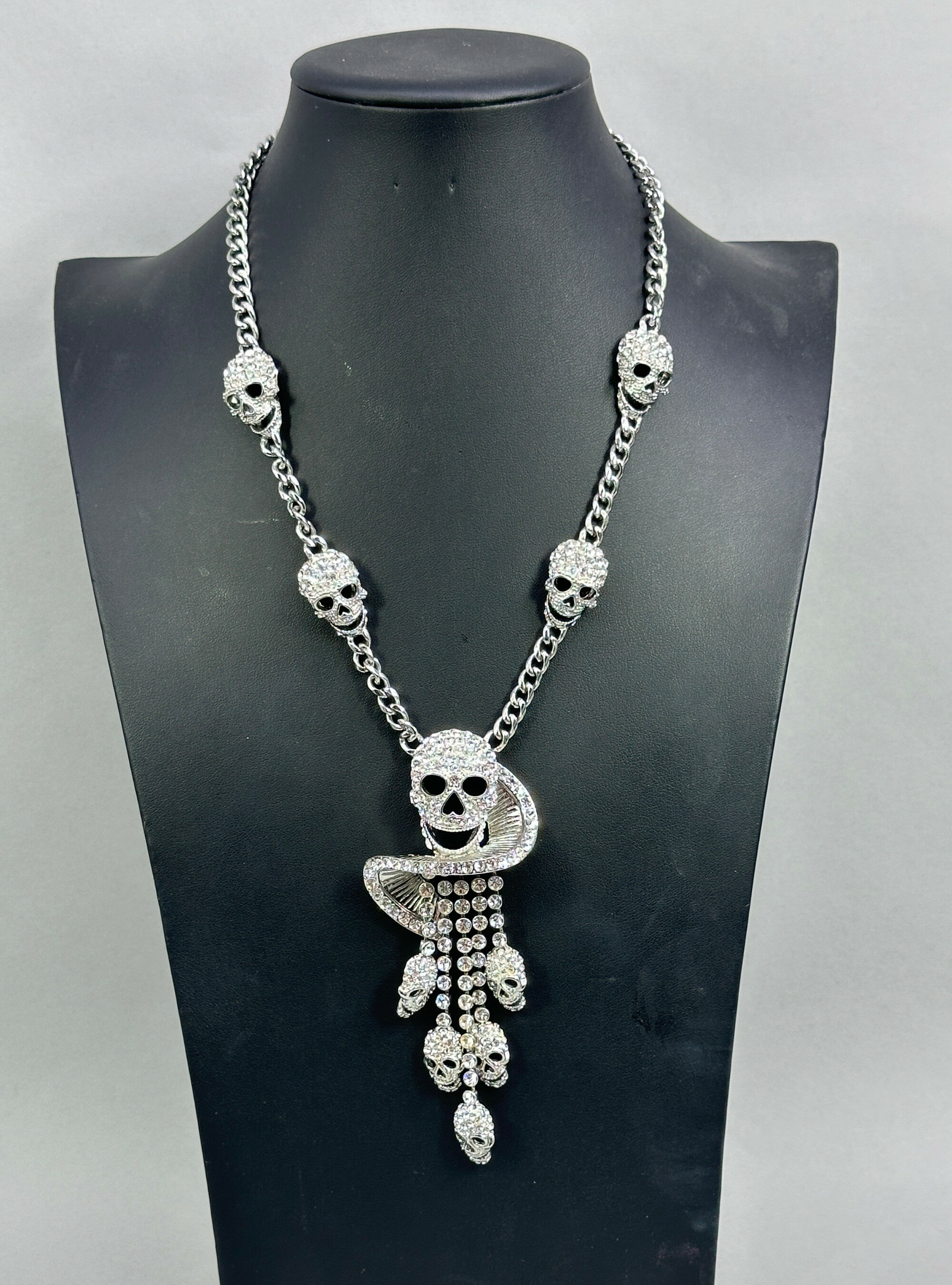
Butler and Wilson Skull Necklace, boxed, modern
Price: £125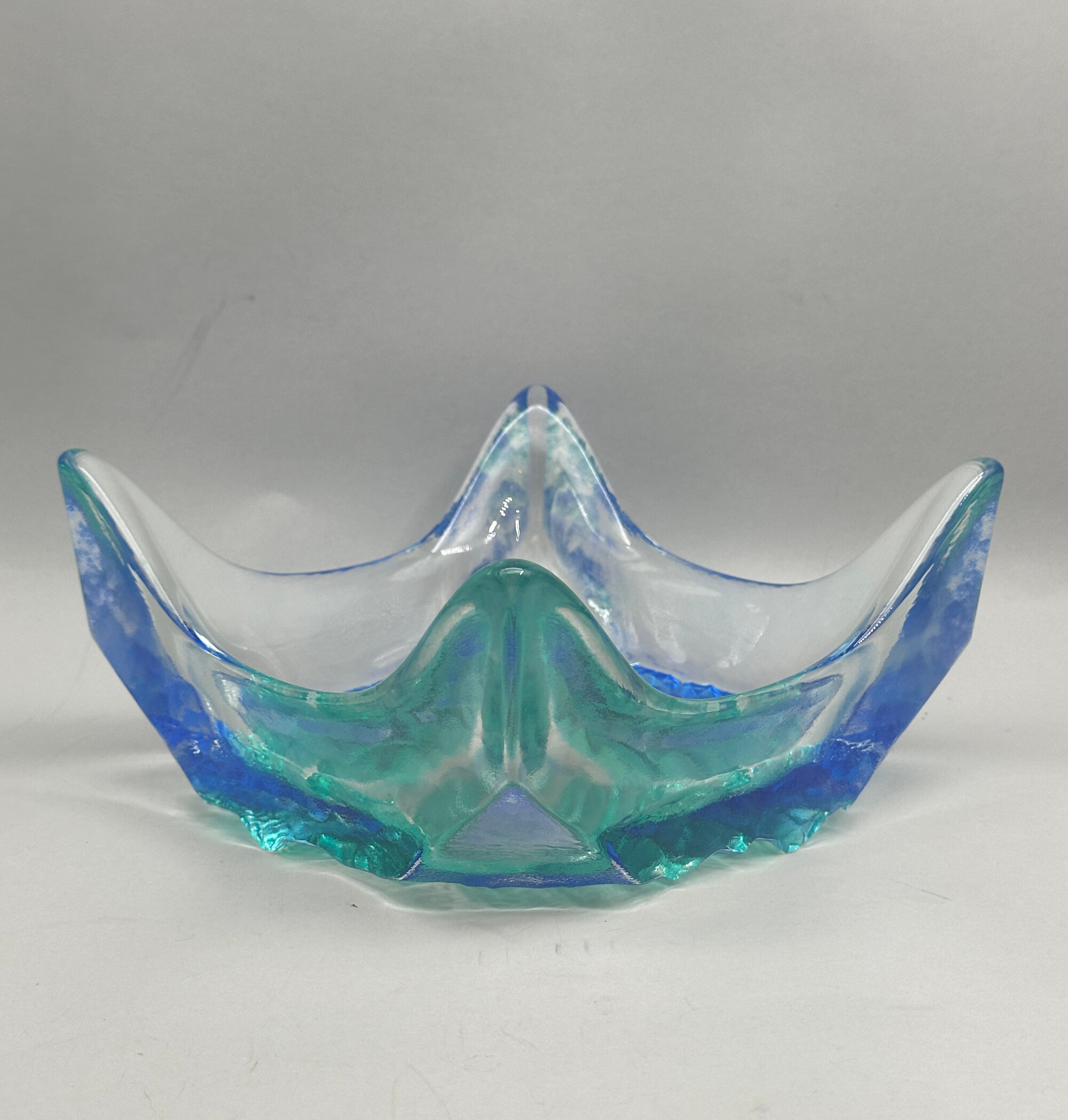
Blue and Green Ice Glass Square Bowl, designed by Tapio Wirkalla for Iitala Finland, late C20th
Price: £55The Finnish designer Tapio Wirkkala (1915–1985) was a major figure of post-war design, working in a wide variety of media including ceramics, wood and glass as well as postage stamps, bank notes and even light bulbs. His first piece for Iitala was produced in 1946 and the commercial ‘Tapio’ collection from 1954. Some of his ‘ice glass’ effects took the Iitala craftsmen many hours to perfect the glass blowing techniques required to produce them but enjoyed immense popularity. These chunky bowls, almost brutalist in style, were produced in the 1970s and 1980s and are an excellent example of his work for the popular market.
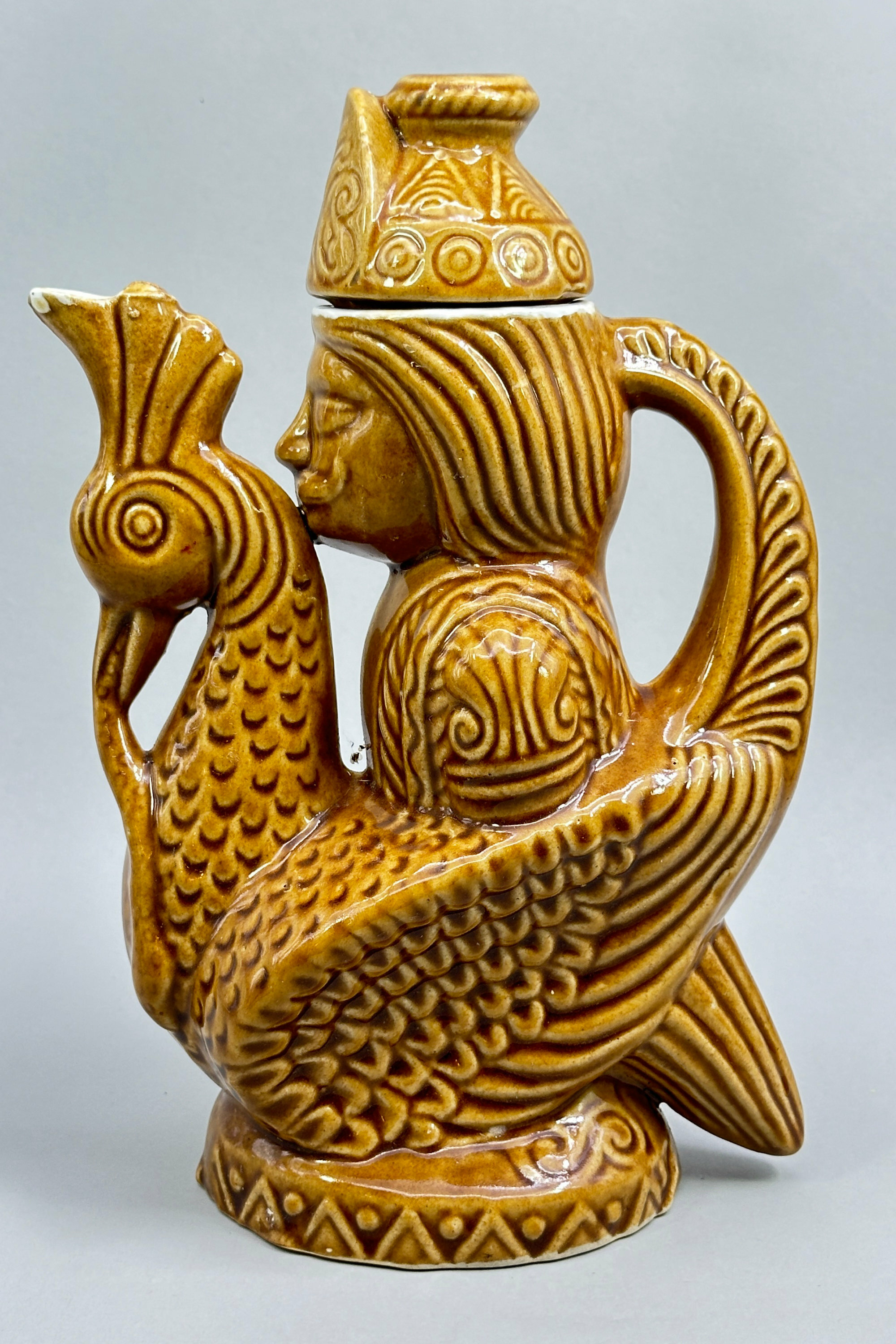
Bird form ewer with cover, possibly Russian c1960
Price: £45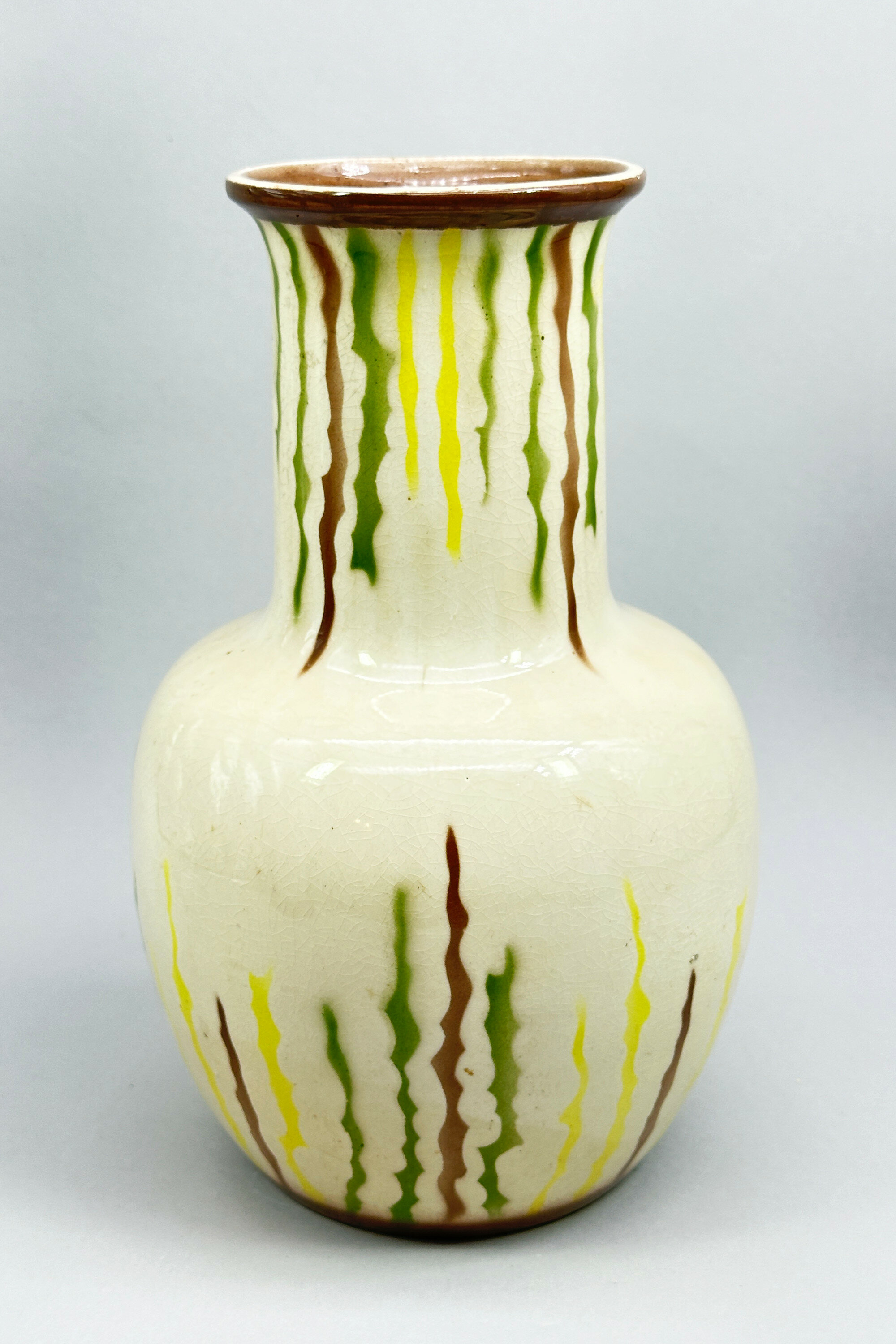
Art Deco style Vase signed E.Radford, mid C20th
Price: £75There were, in fact, two craftsmen working in the C20th British pottery industry with the name Edward Radford, father and son. Radford senior worked for Pilkington’s Royal Lancastrian Pottery in Manchester from 1903 until his retirement in 1936, acting as their main thrower. Radford junior joined his Father in 1905, but the First World War intervened, in which he won a Military Cross for his actions at Passchendaele in 1917 and afterwards he settled in Stoke on Trent, the heart of Britain’s pottery industry. An association developed with H.J.Wood’s Alexandra Pottery in Burslem who produced a range of wares bearing his name in the 1930s, although Radford himself may have acted as more a salesman than the designer. Production continued after the war and even after Radford’s retirement in 1948. The form of mark used here implies the later dating but may have been used earlier. The impressed figures indicate model number. Even if this vase is post war, the style is emphatically that of pre war Art Deco period with the simple lines of the form accompanied by semi abstract decoration vaguely reminiscent of Clarice Cliff combining to produce a piece of timeless attraction.
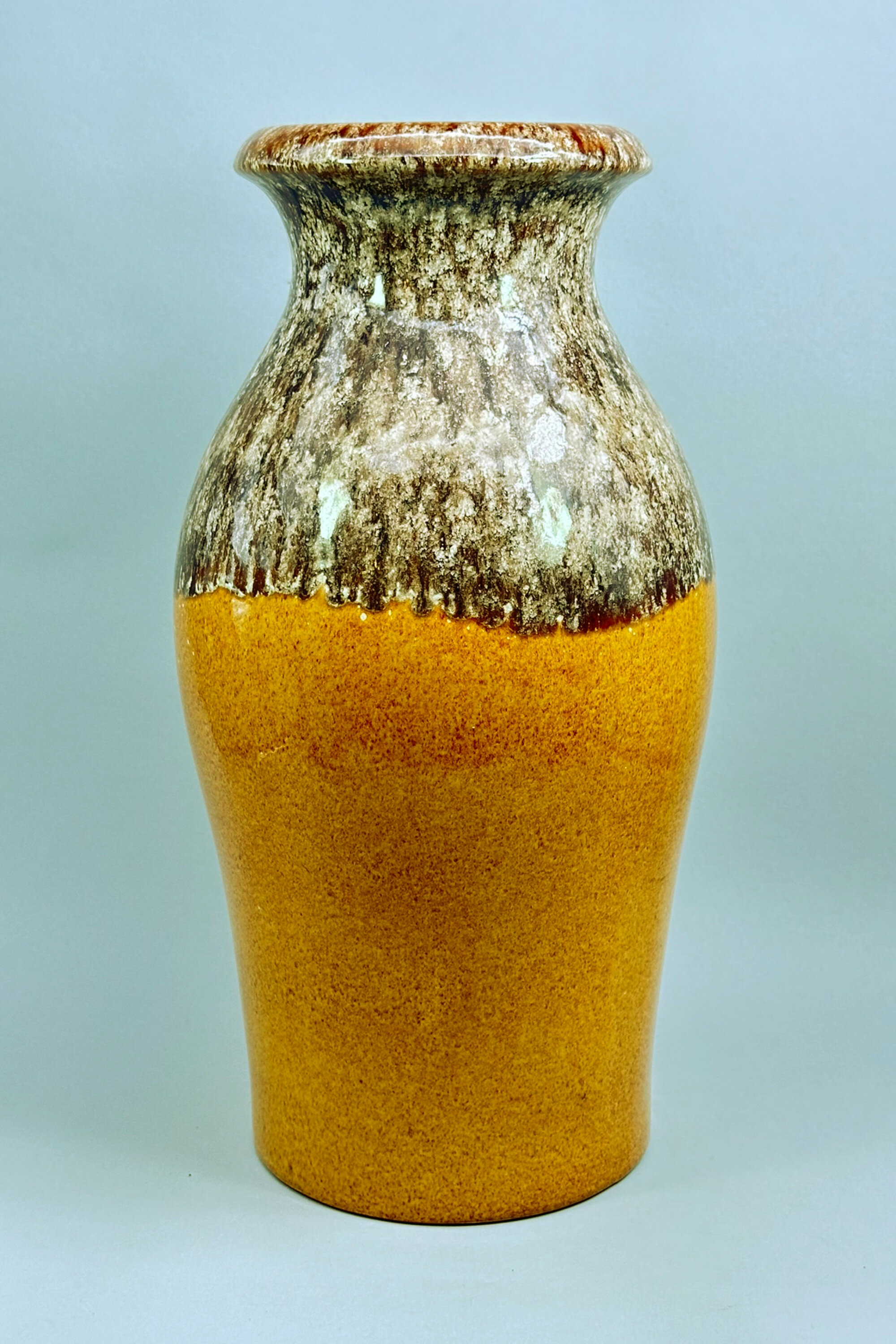
West German ceramic Vase, Scheurich, No 290-40, 1960s
Price: £55Although not marked as such, this vase has all the hallmarks of the firm Scheurich Keramik which started production in 1954, rather later than most of its competitors, but soon became the largest producer of commercial art pottery in Germany. Their pieces rarely carried the factory name but usually the model number followed by the height in centimetres with ‘W.Germany’ below, as here. Scheurich were well known for producing a wide variety of pieces with variegated, almost experimental glazes and this vase is yet another successful example of their work, the simple lines of form combining with a more austere selection of glaze effects than found in some of their other pieces. Dating is to the 1960s.
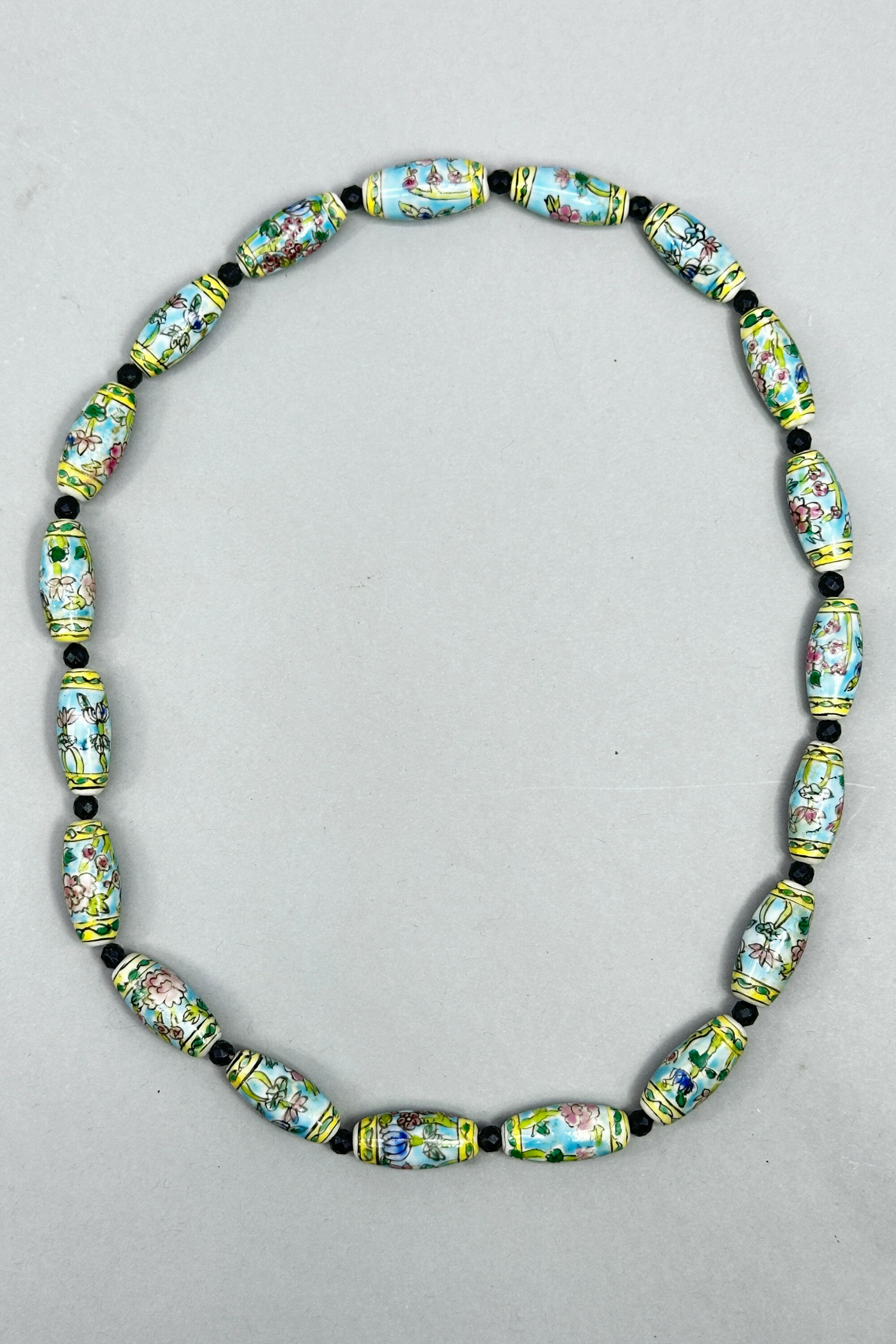
Strand of Chinese ceramic beads c1950
Price: £25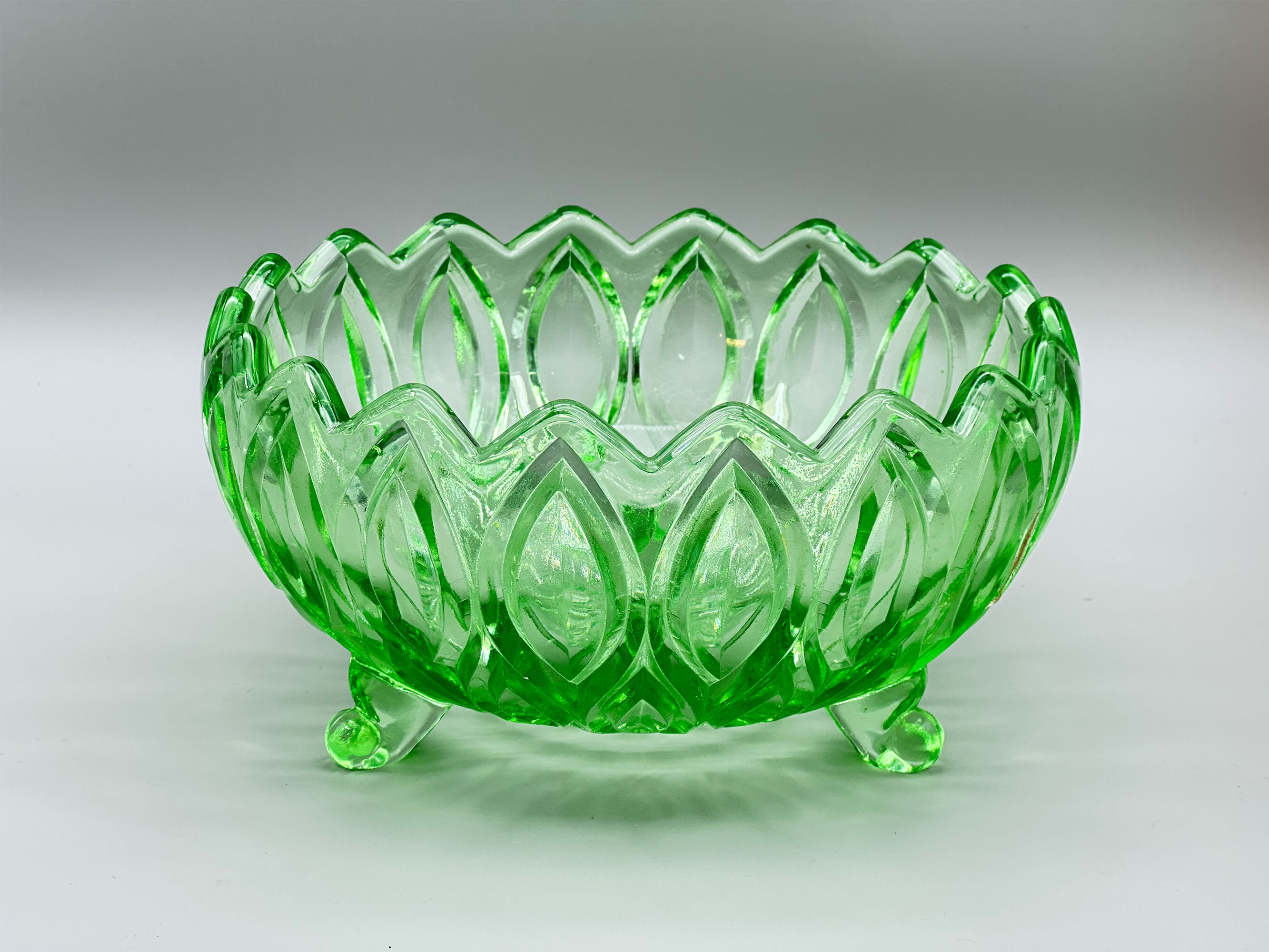
Art Deco green glass Orion Bowl by Lausitzer Glaswerke, Germany 1930s
Estimate: £30 – 40
Cup : the Silver Wedding Anniversary of Queen Elizabeth II and Prince Philip in 1972
Price: £25The Paragon China Company, formerly the Star China Company (see Lot XX), produced high quality gift items from 1920 to 1971, at first independently and then in alliance with other companies, finally being absorbed by Royal Doulton in 1972 who kept the ‘Paragon’ name until 1991. Commemorative wares were a speciality and this cup is a fine and typical example.
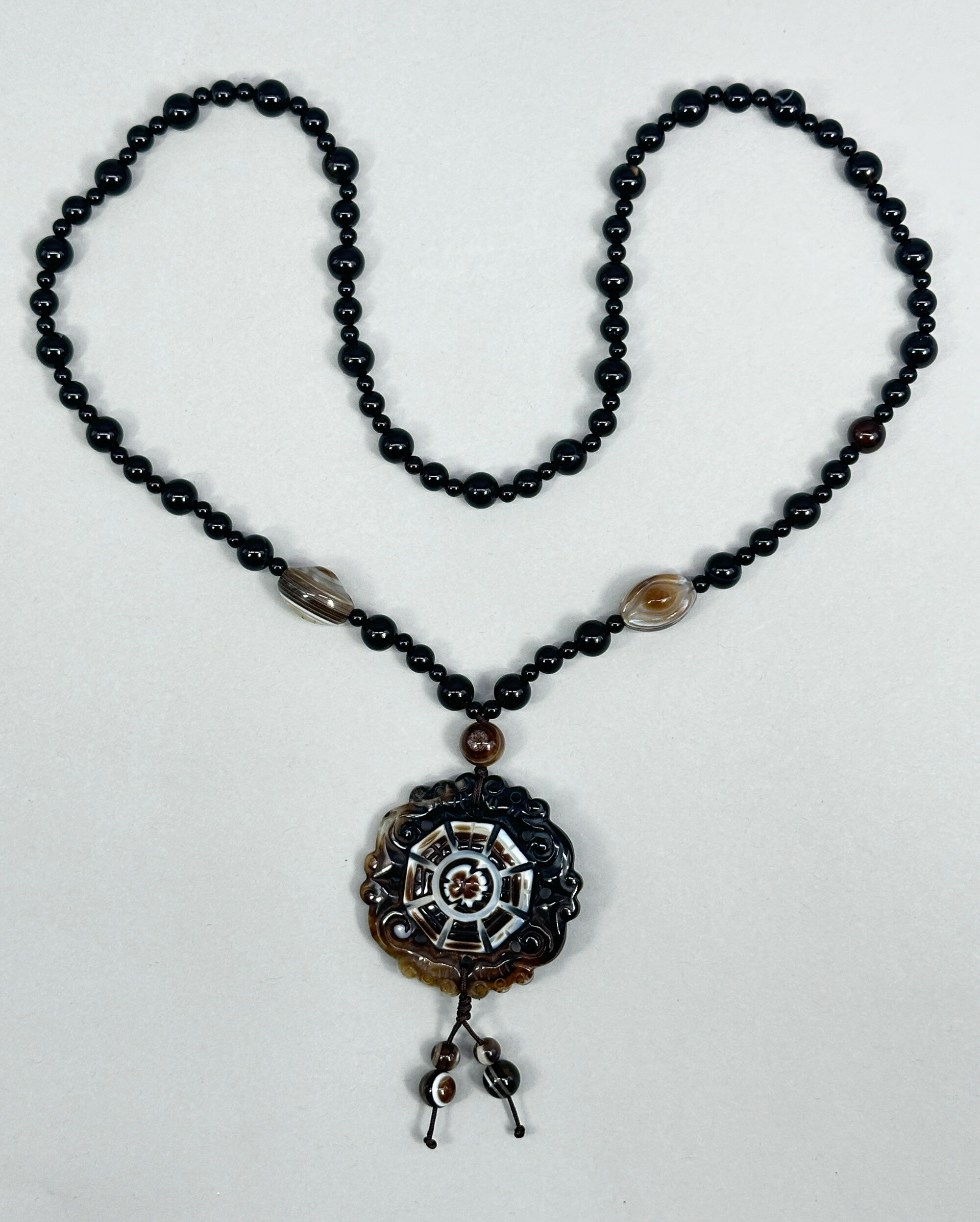
Chinese agate carving with onyx beads, 20th century
Price: £35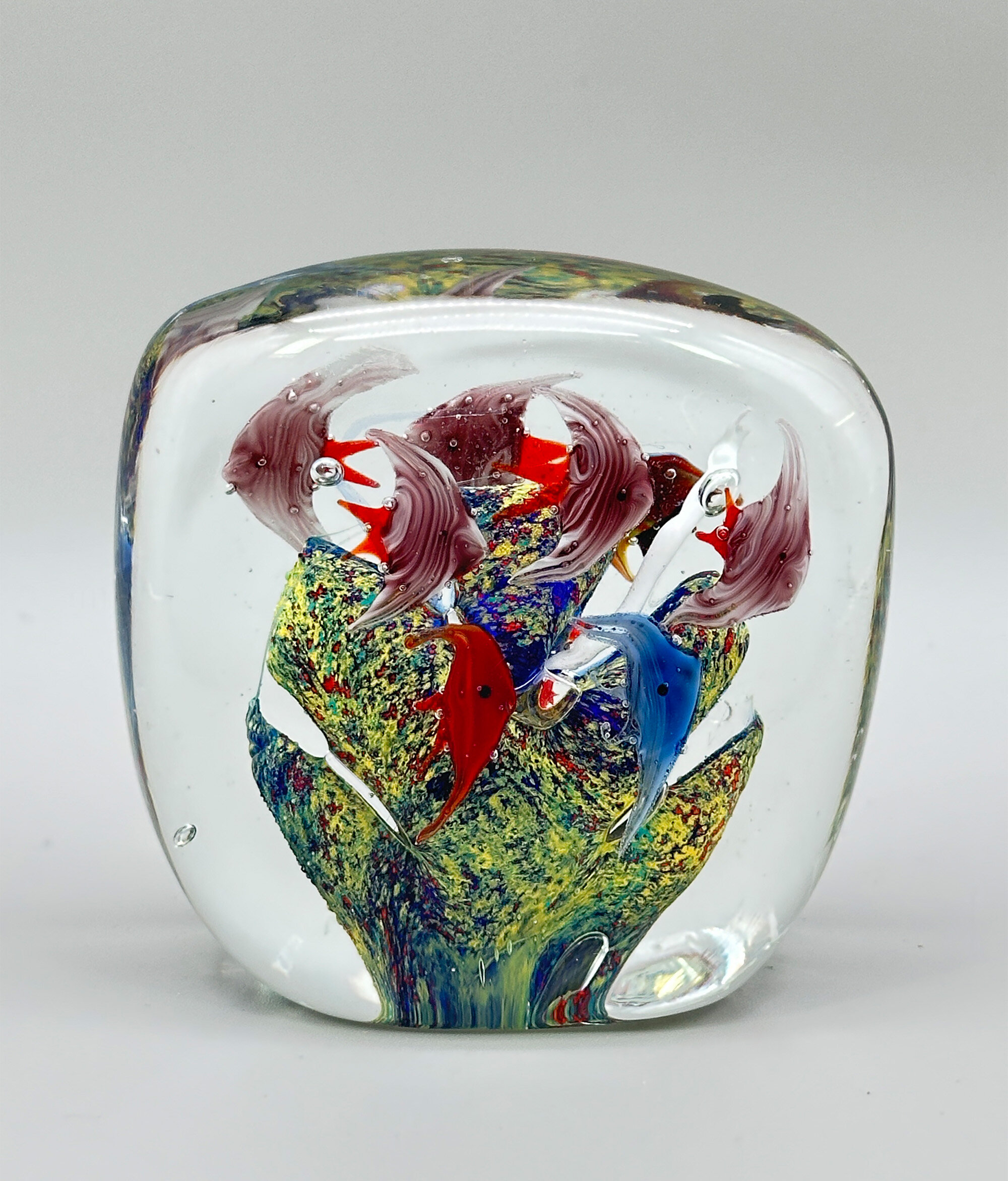
Glass Aquarium Paperweight, probably Murano second half C20th
Estimate: £30 – 40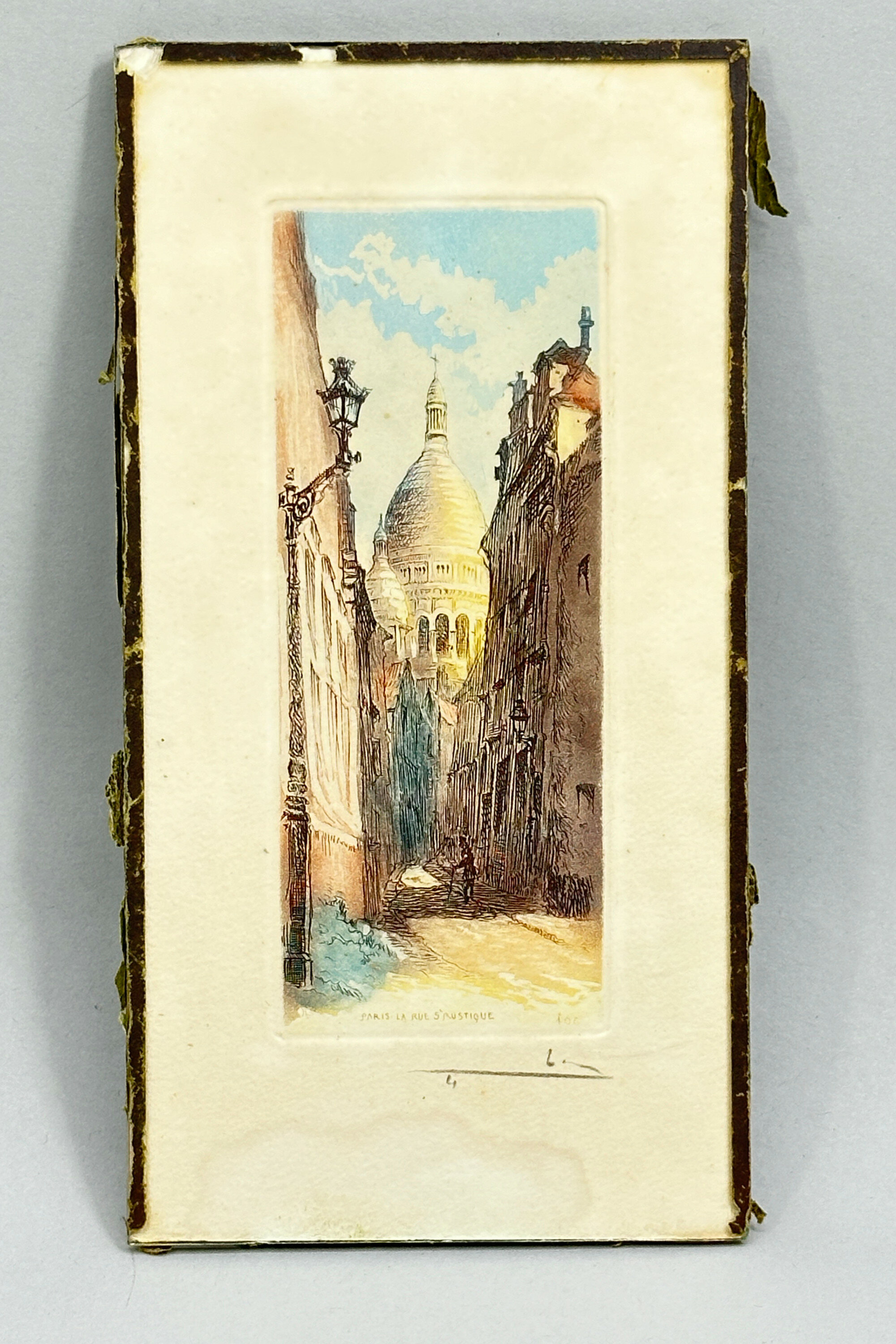
French Orientalist etching aquatint - Paris La Rue Saint Rustique
Price: £35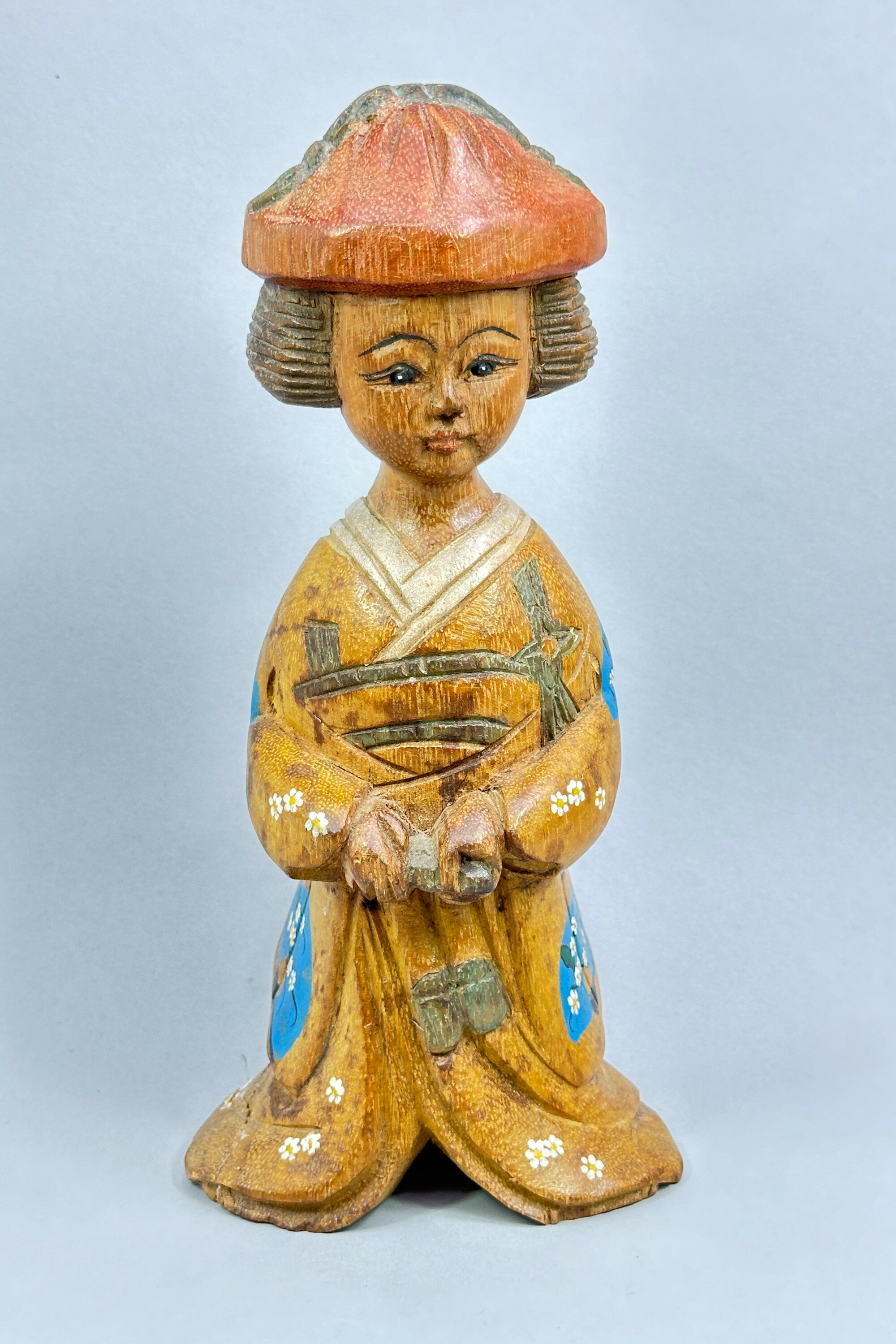
Japanese Carved Wood Figure of a Young girl, Kokeshi doll style, C20th
Price: £45

